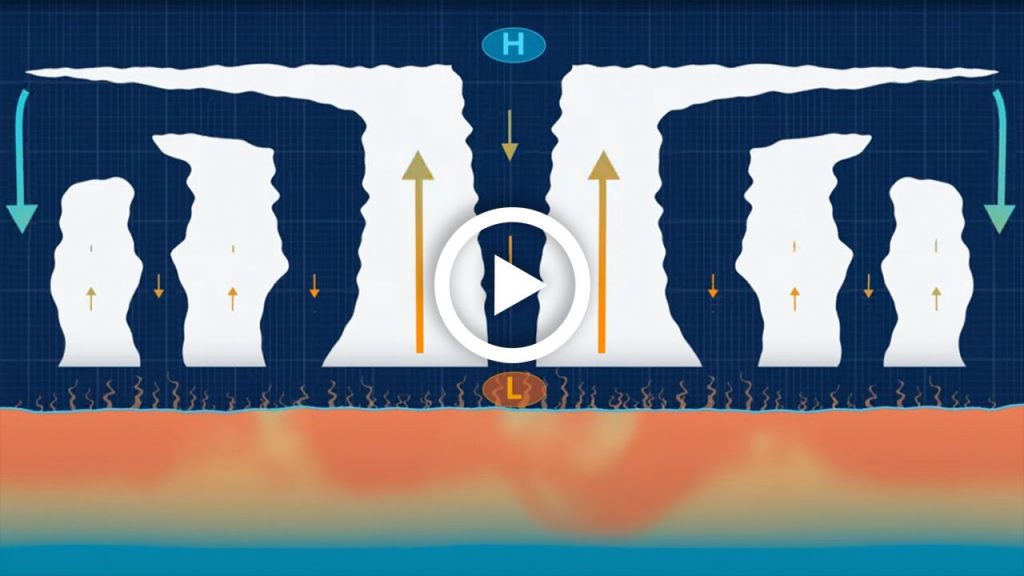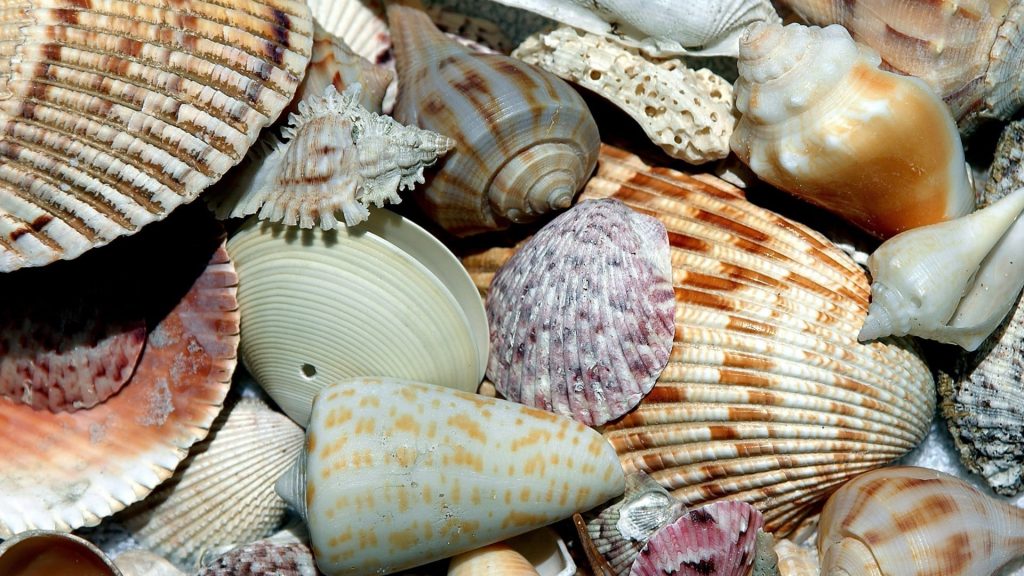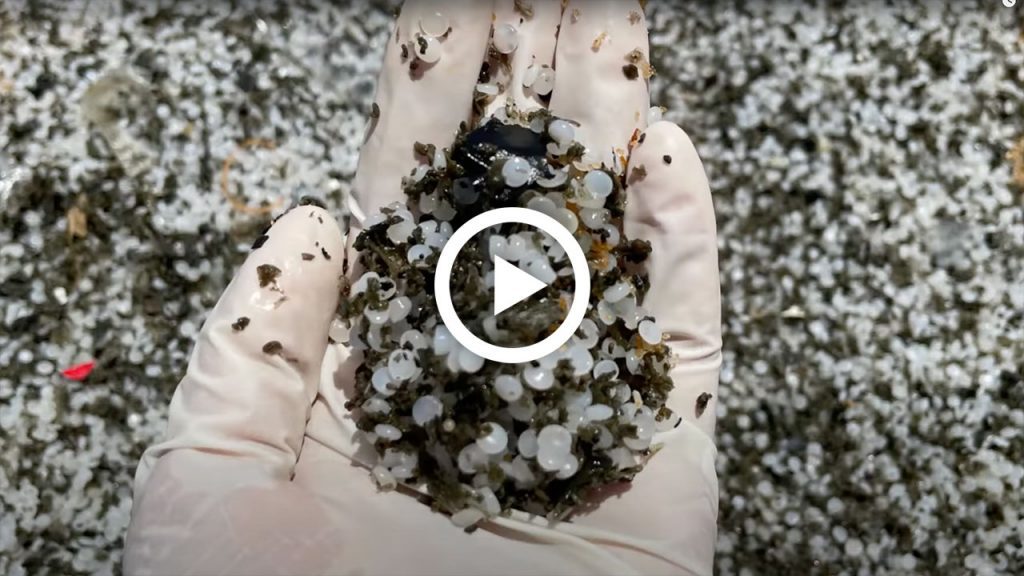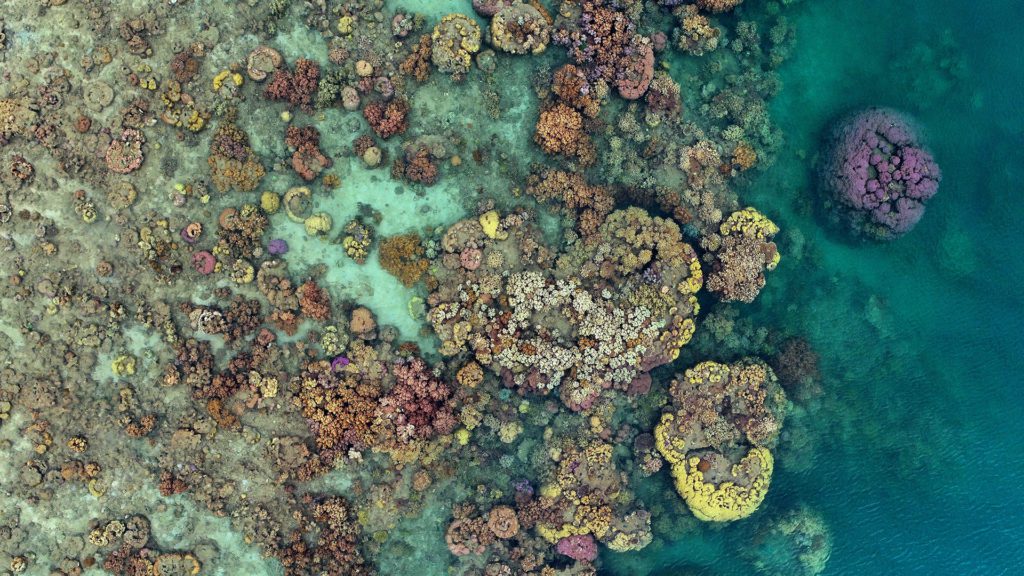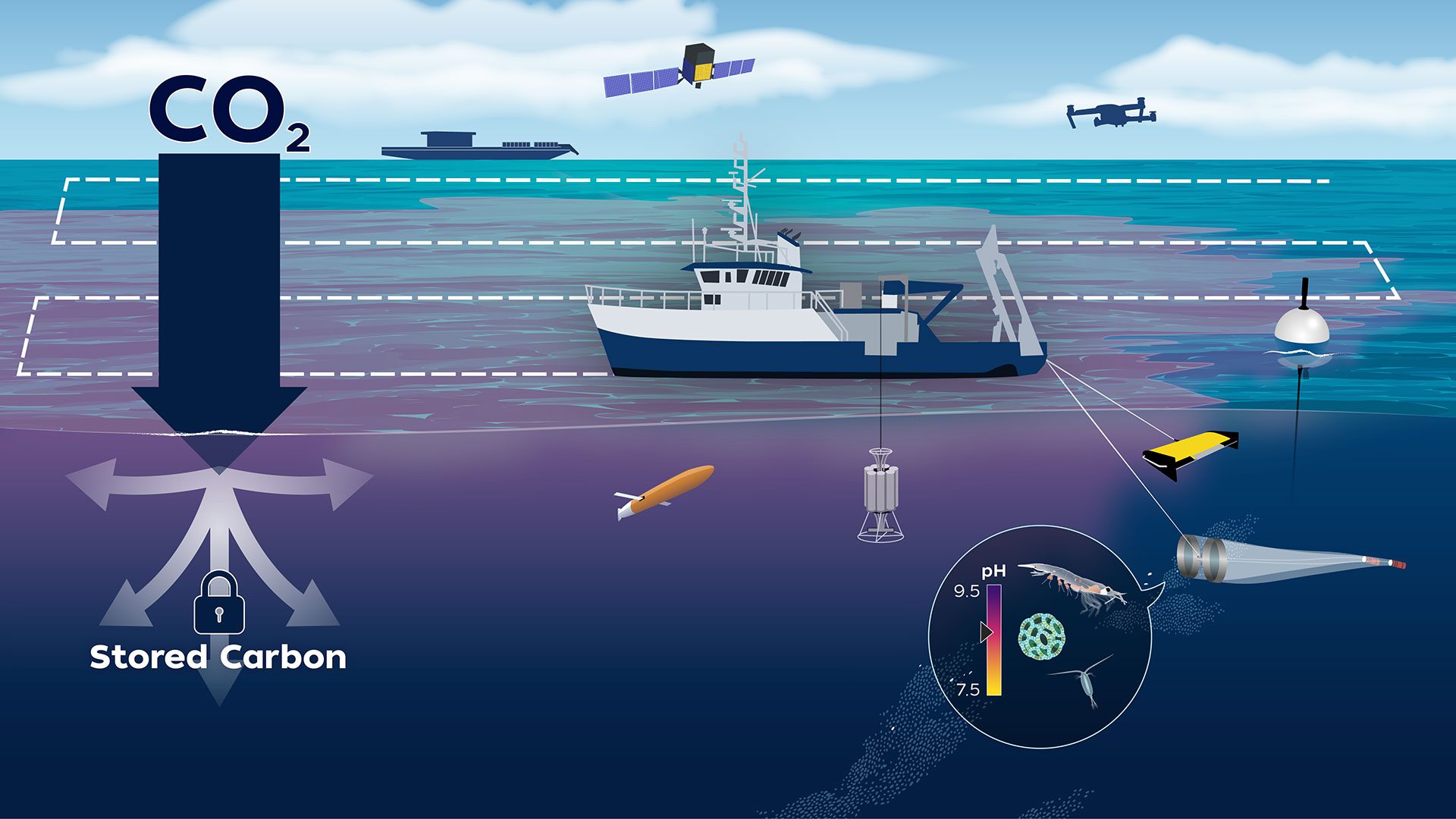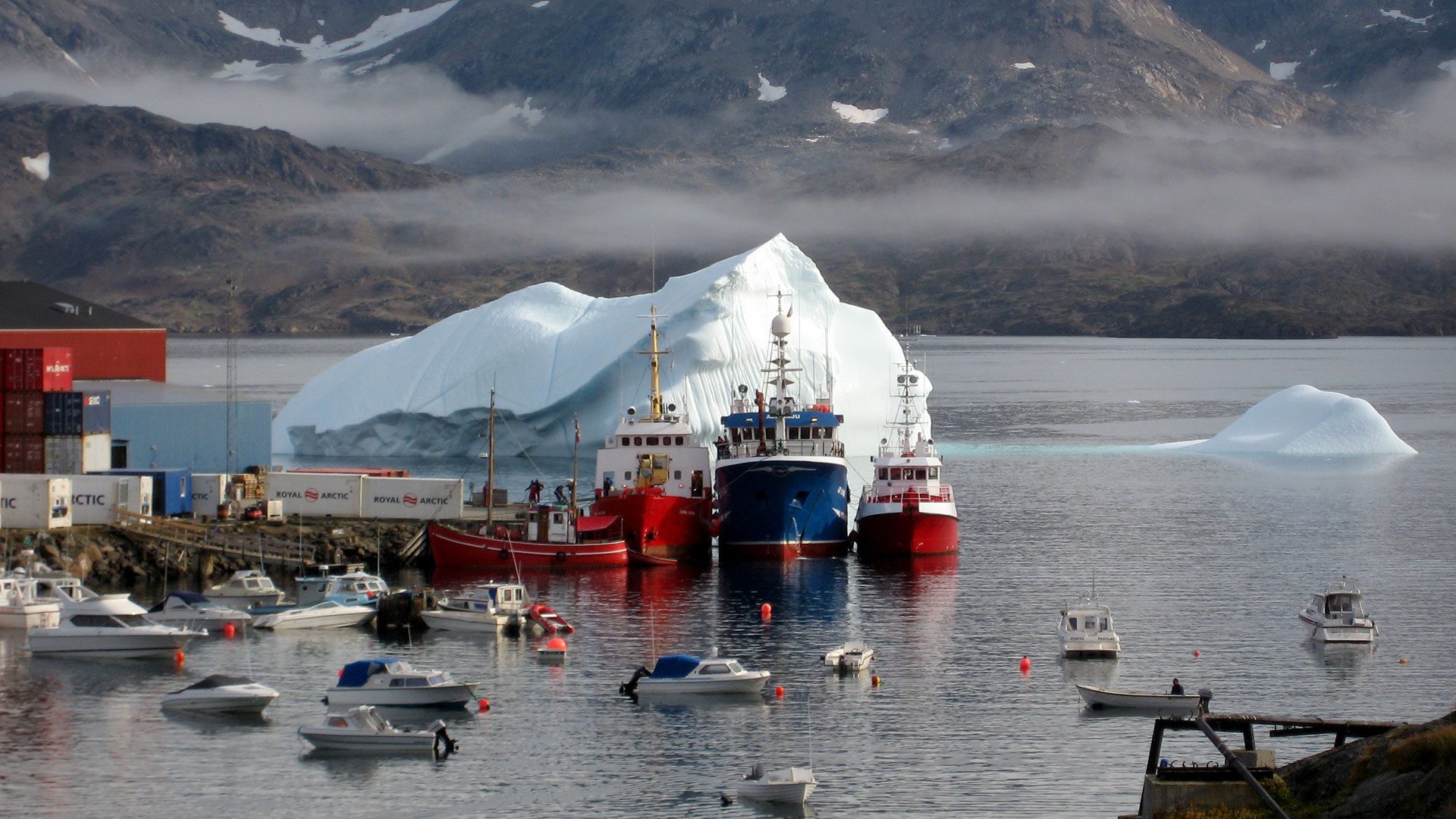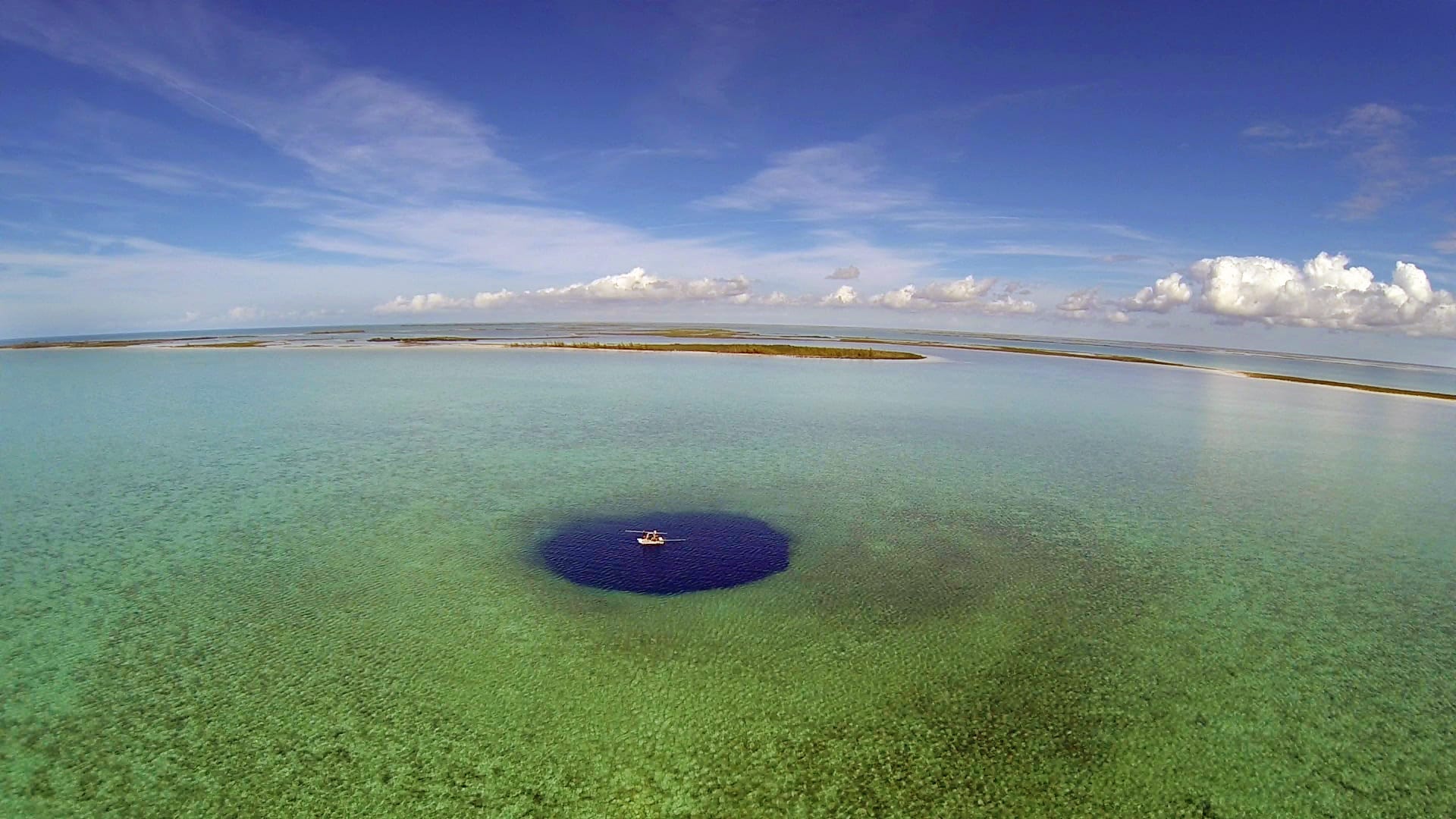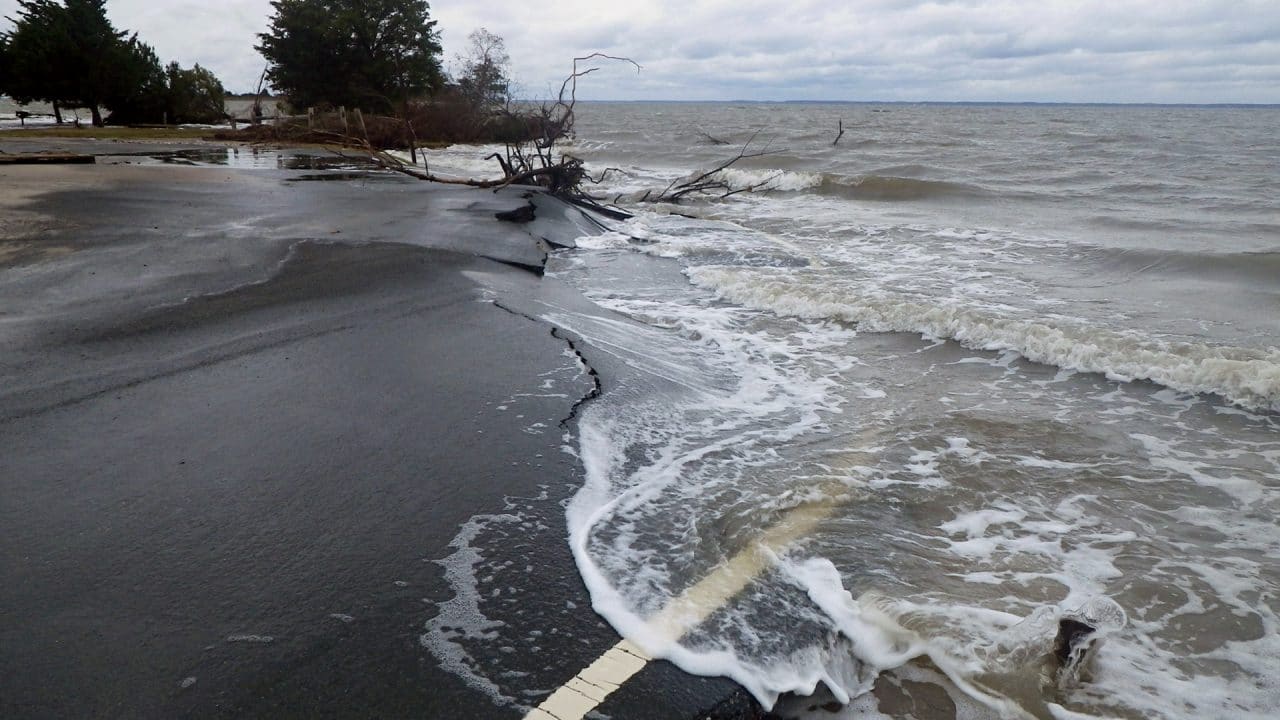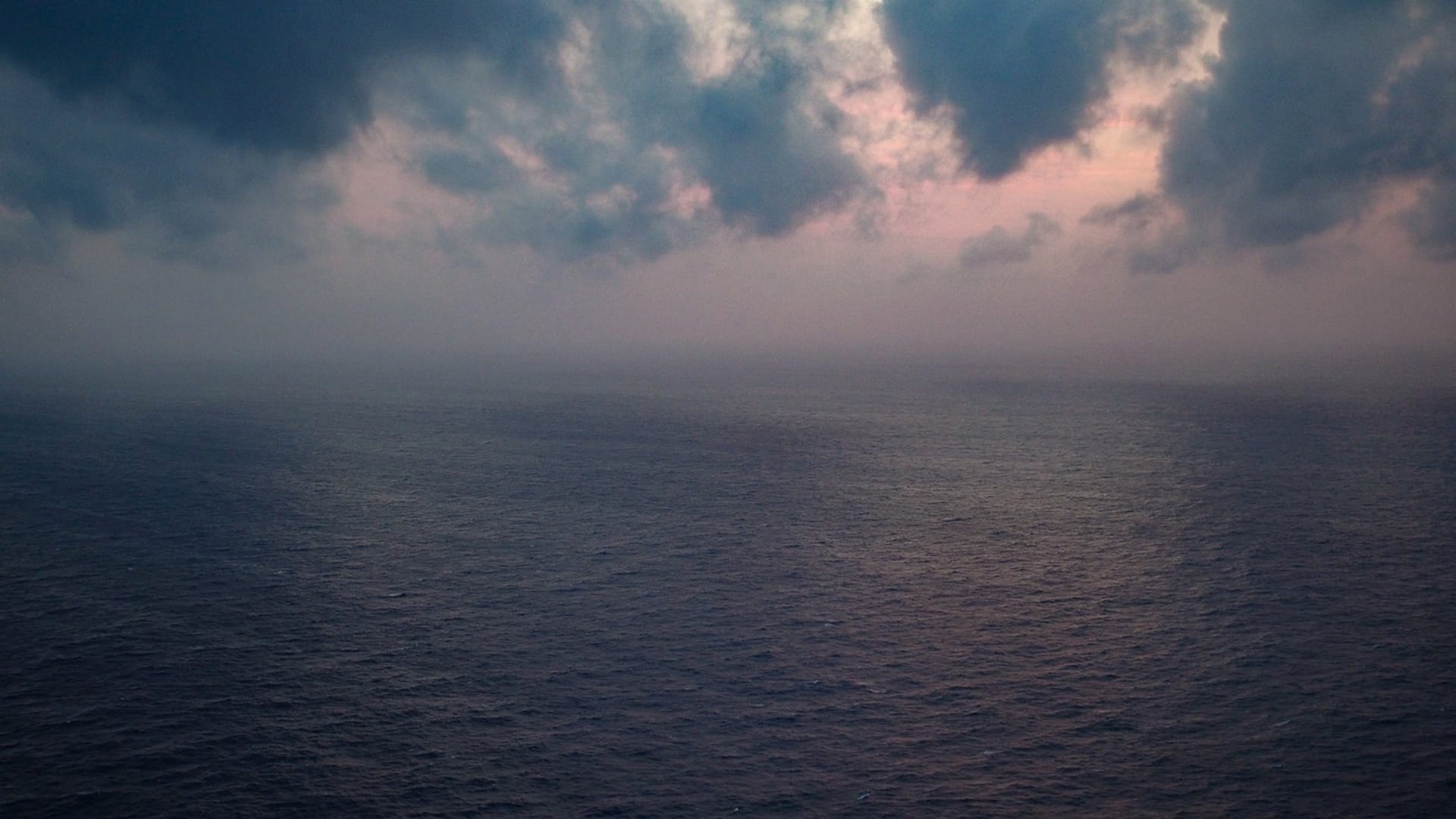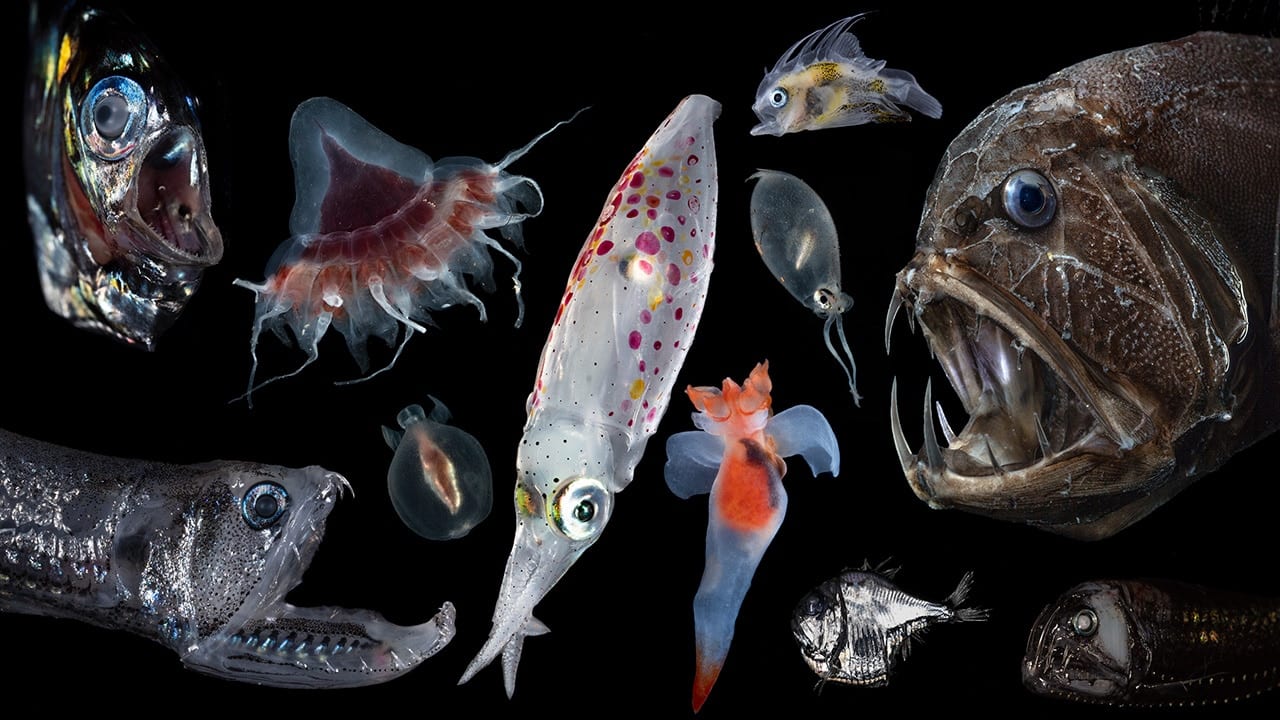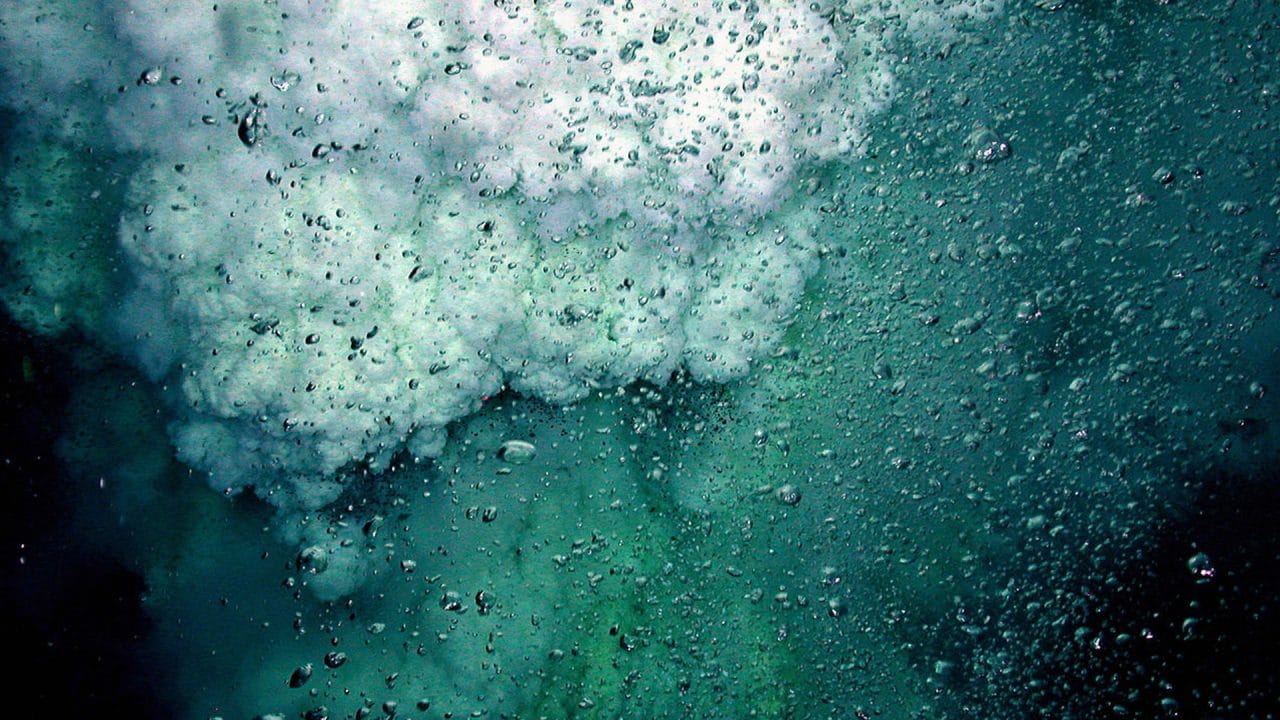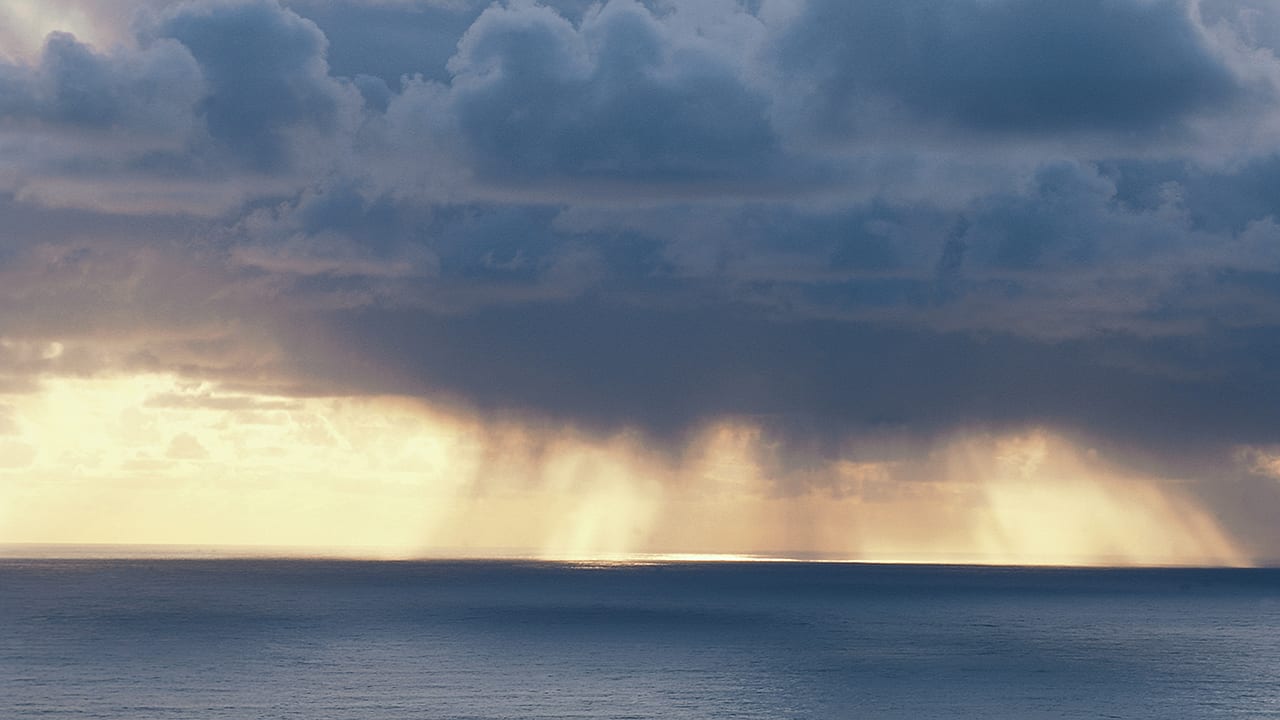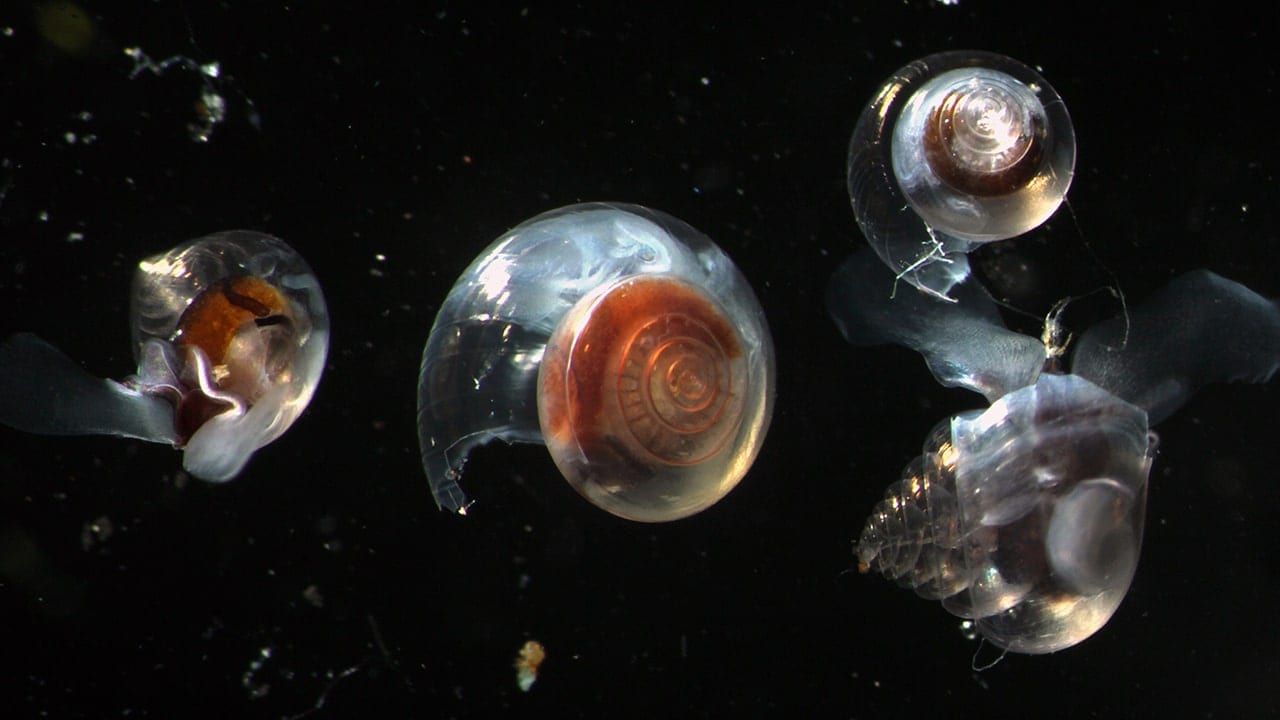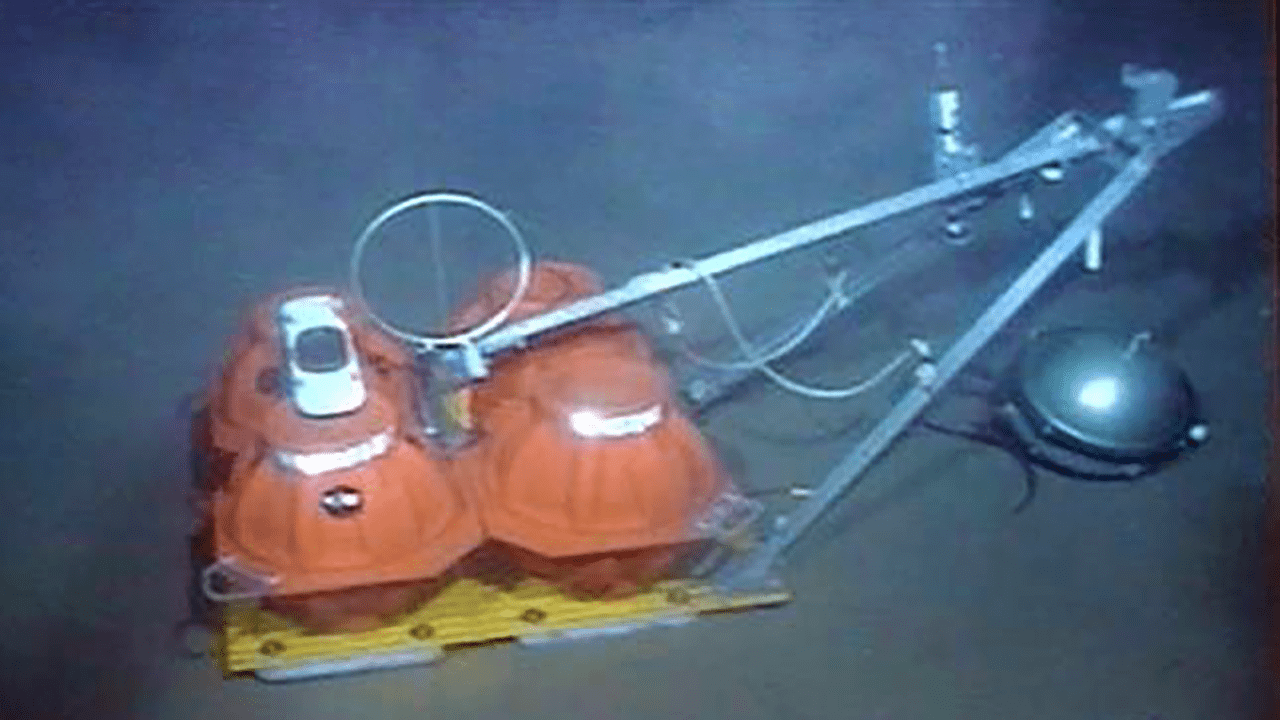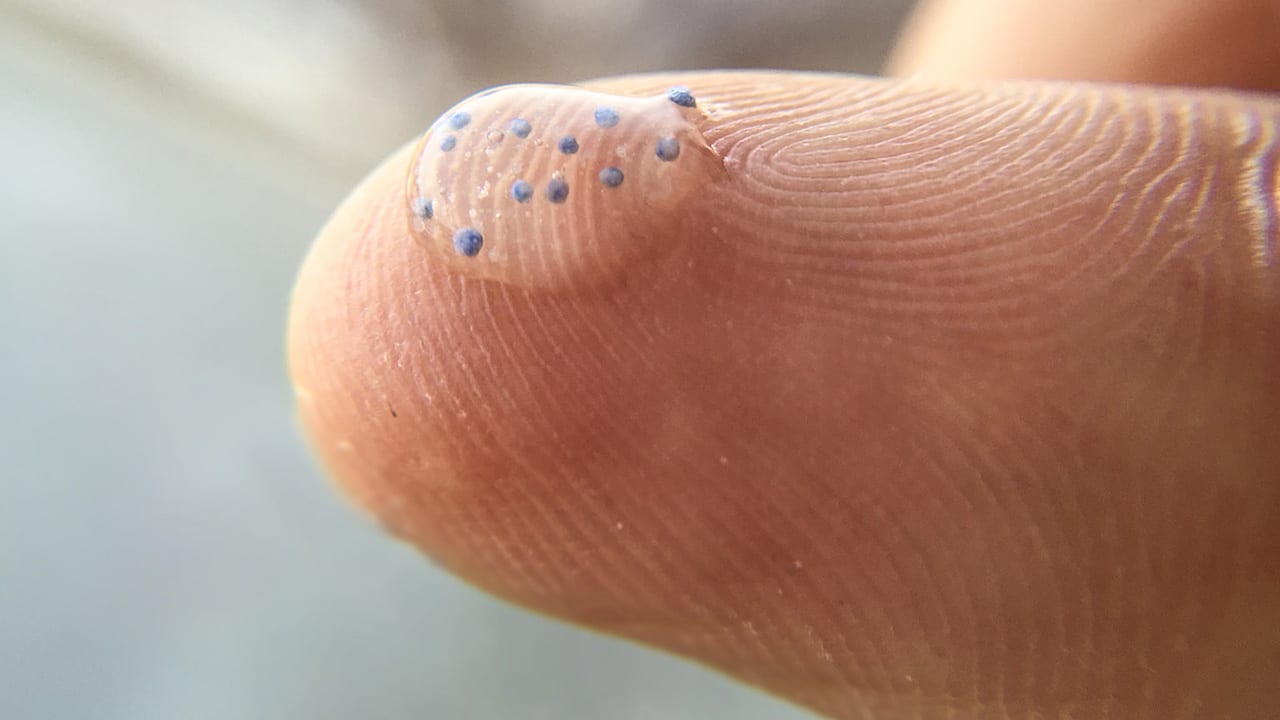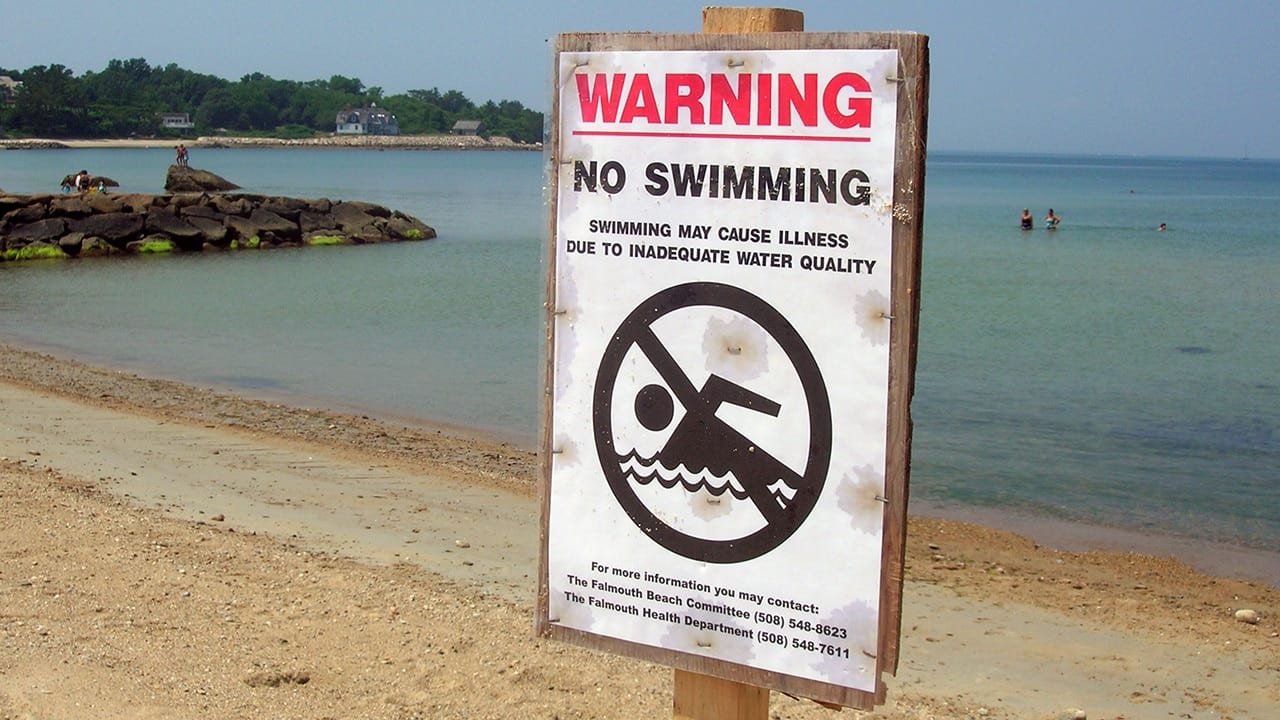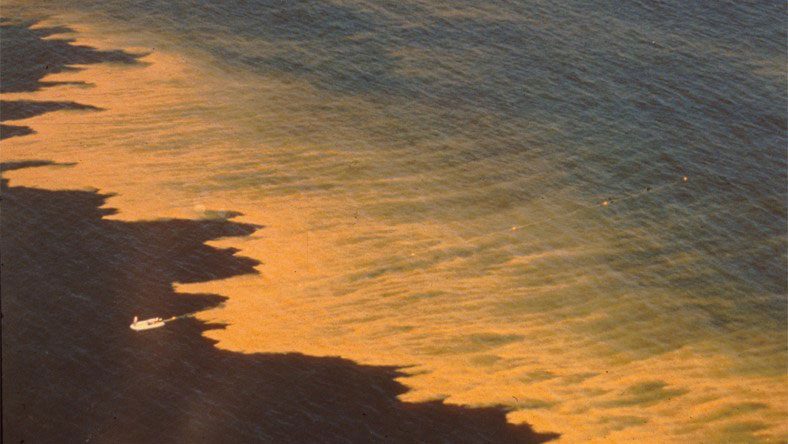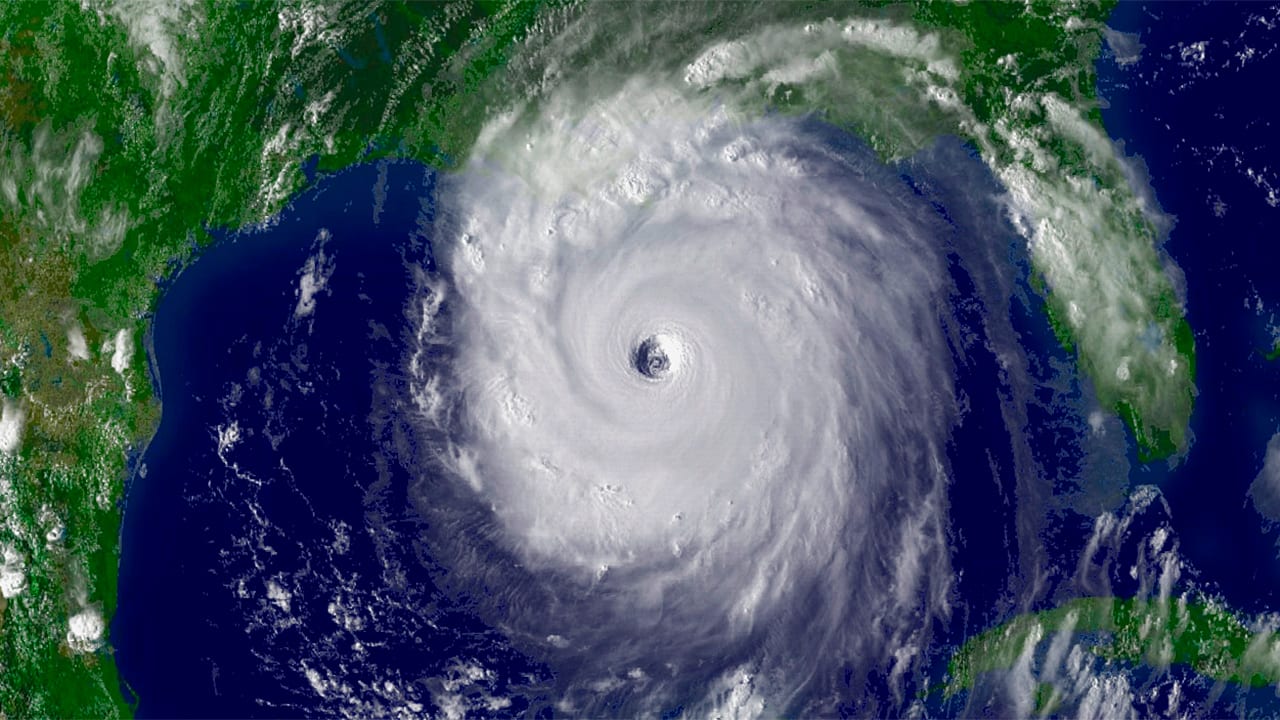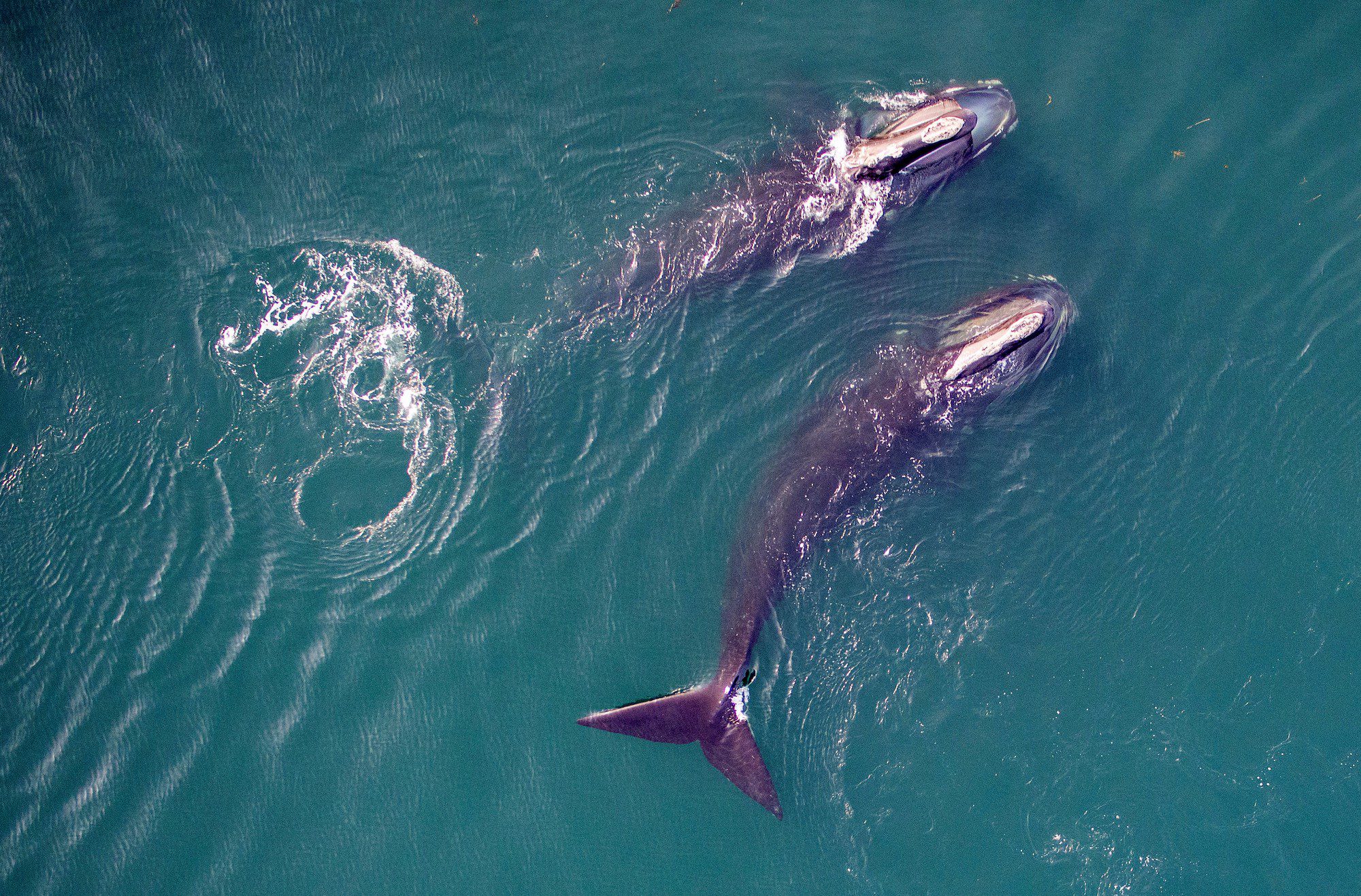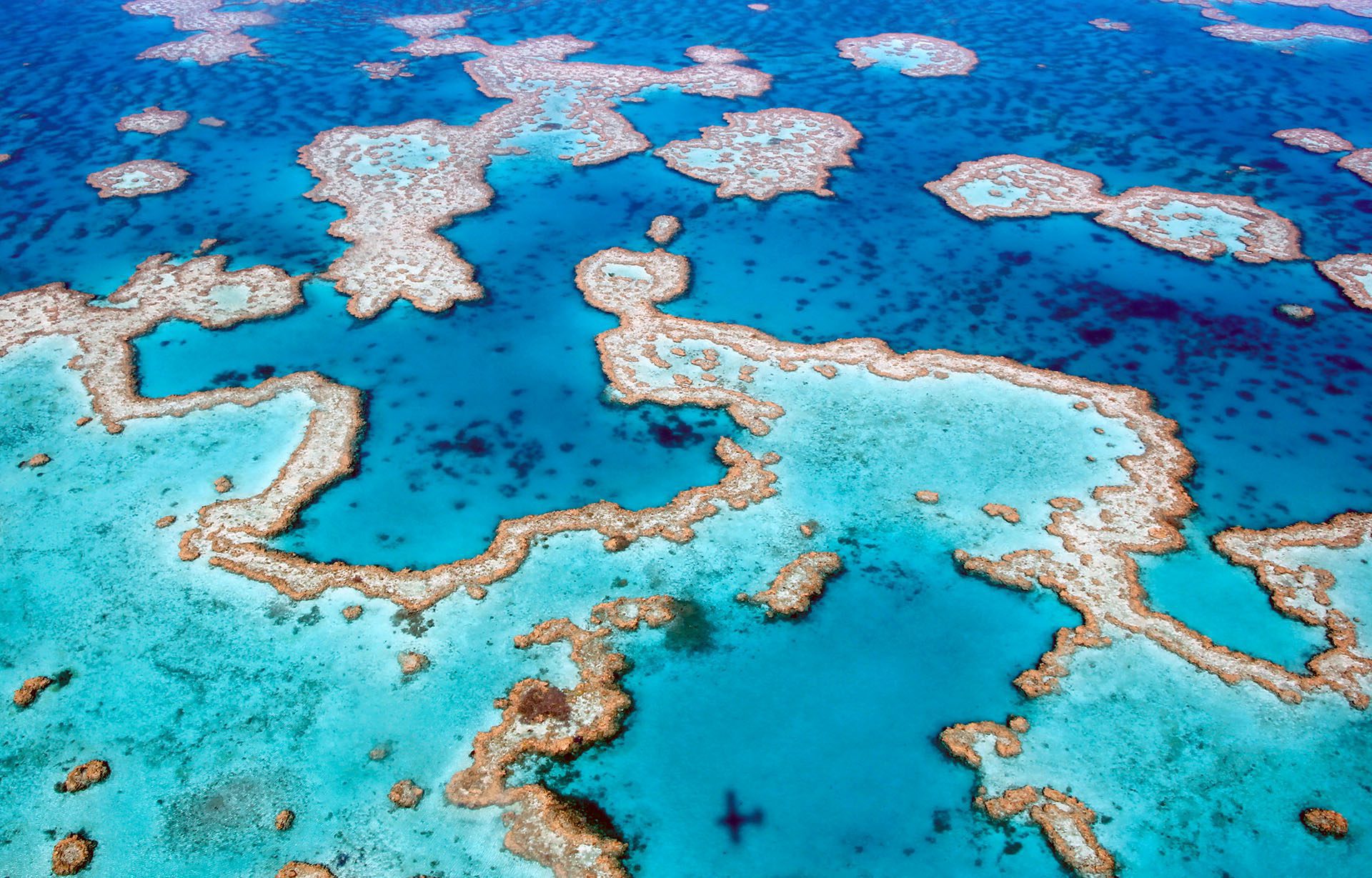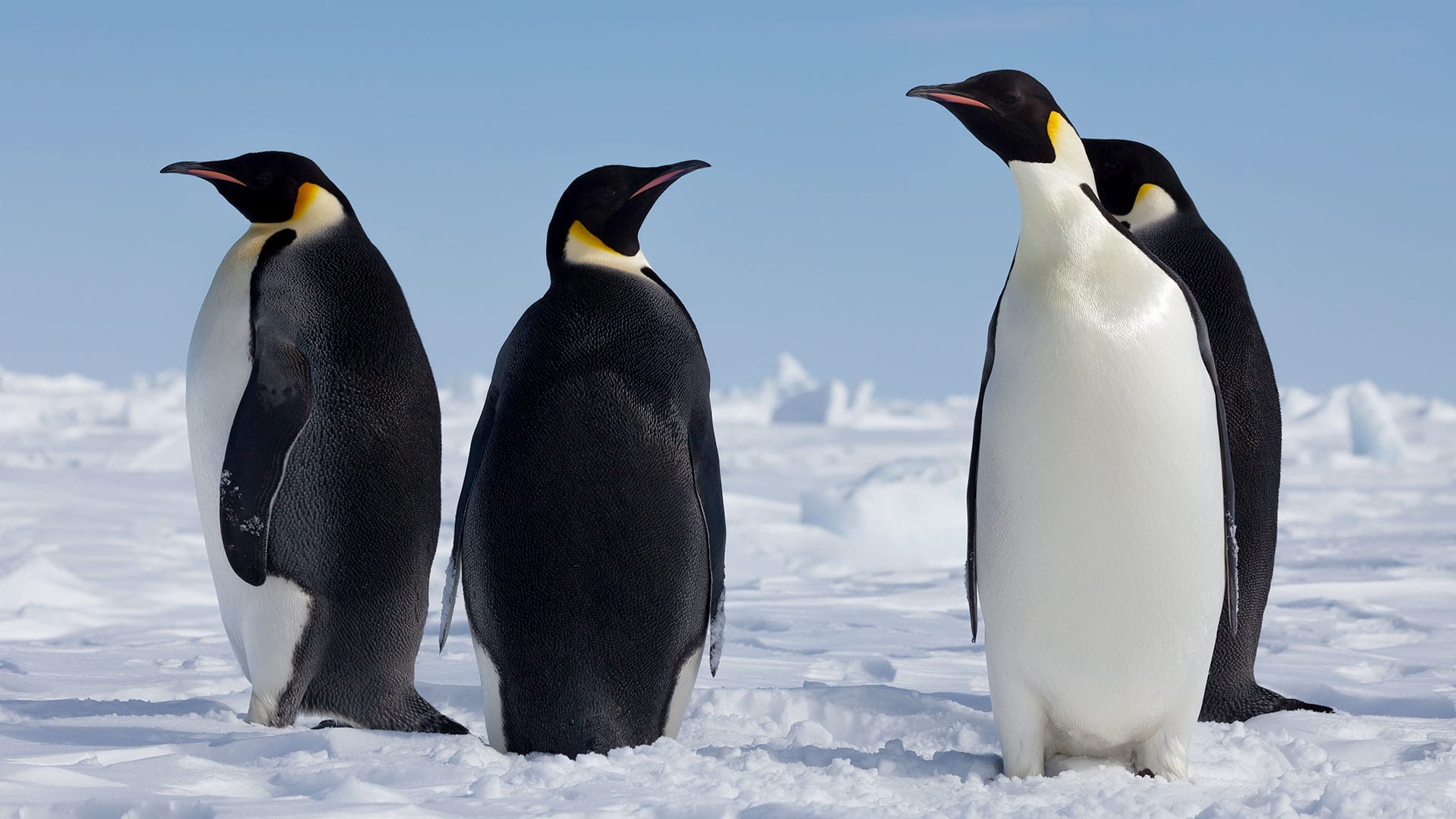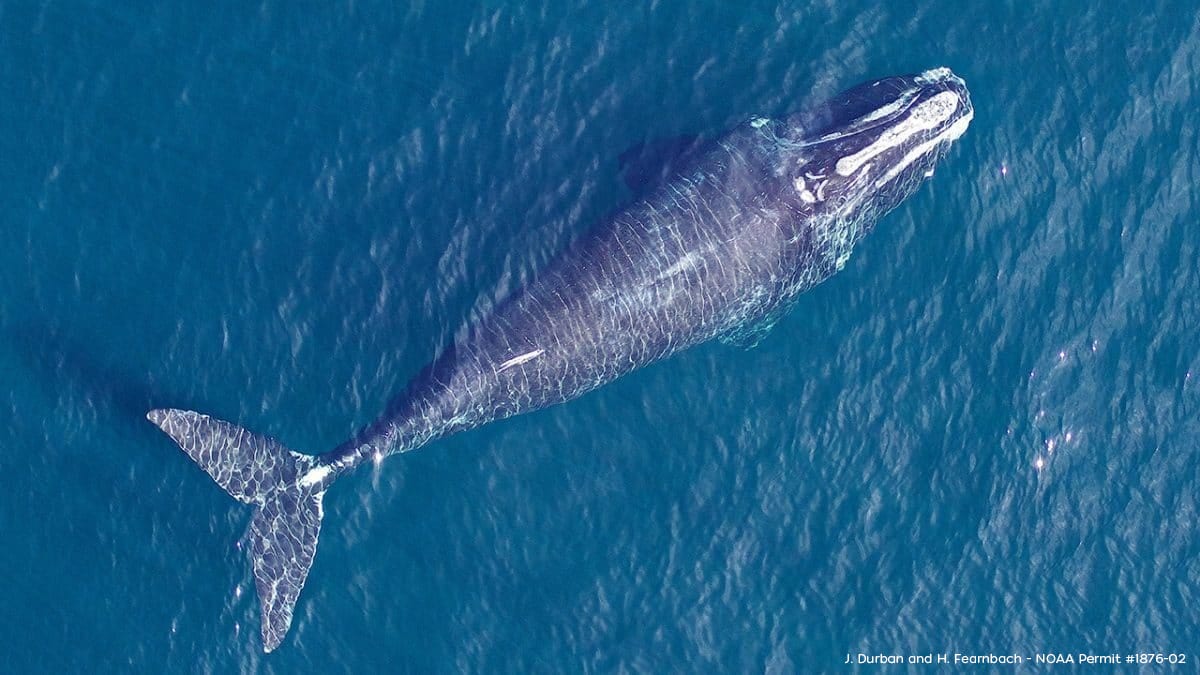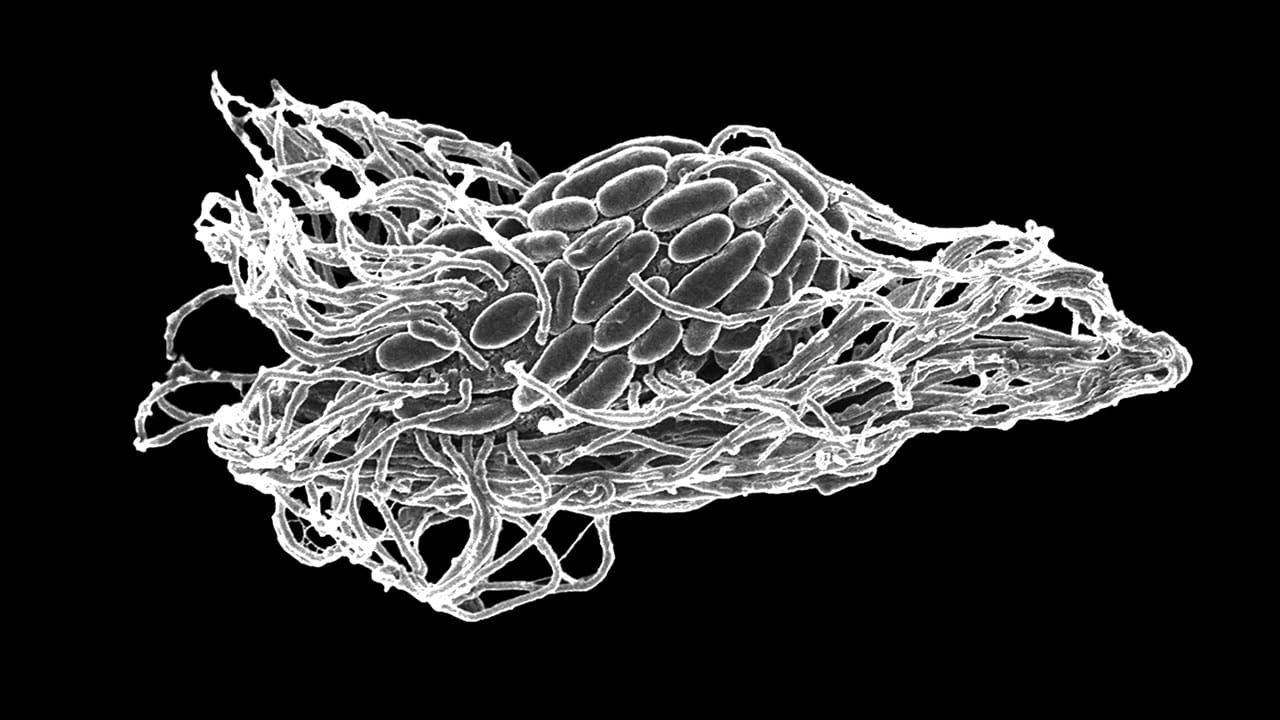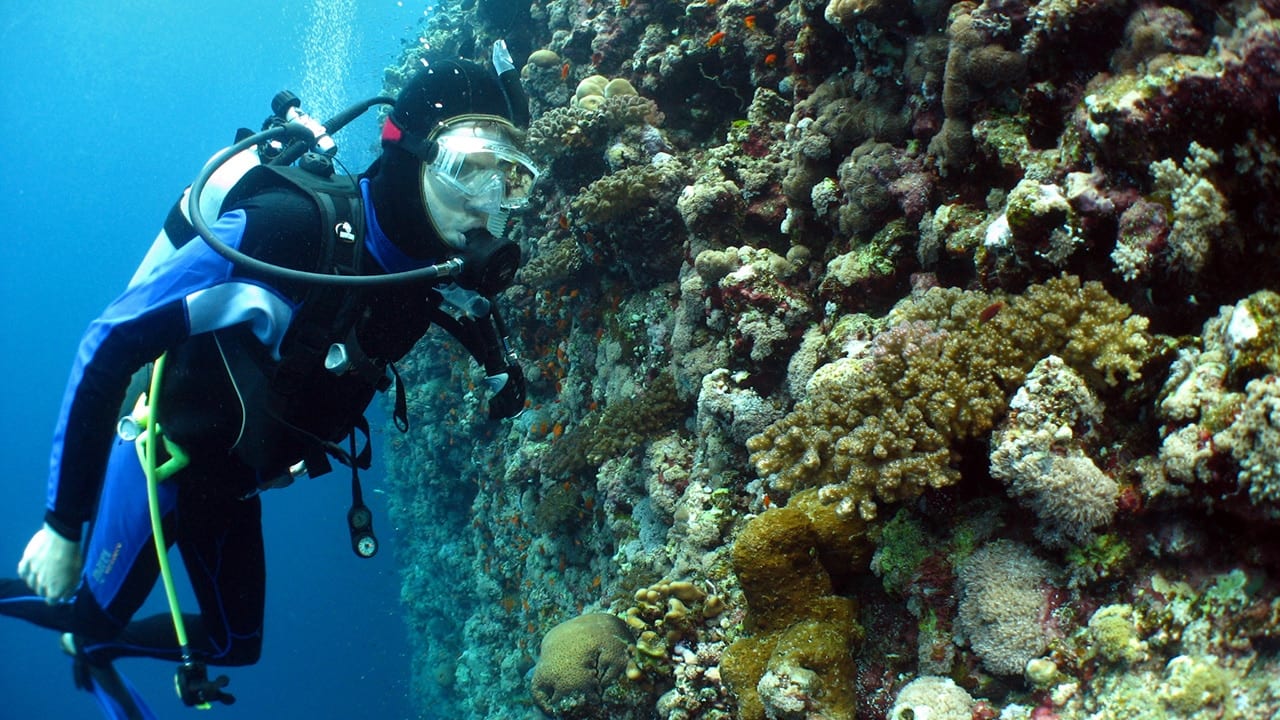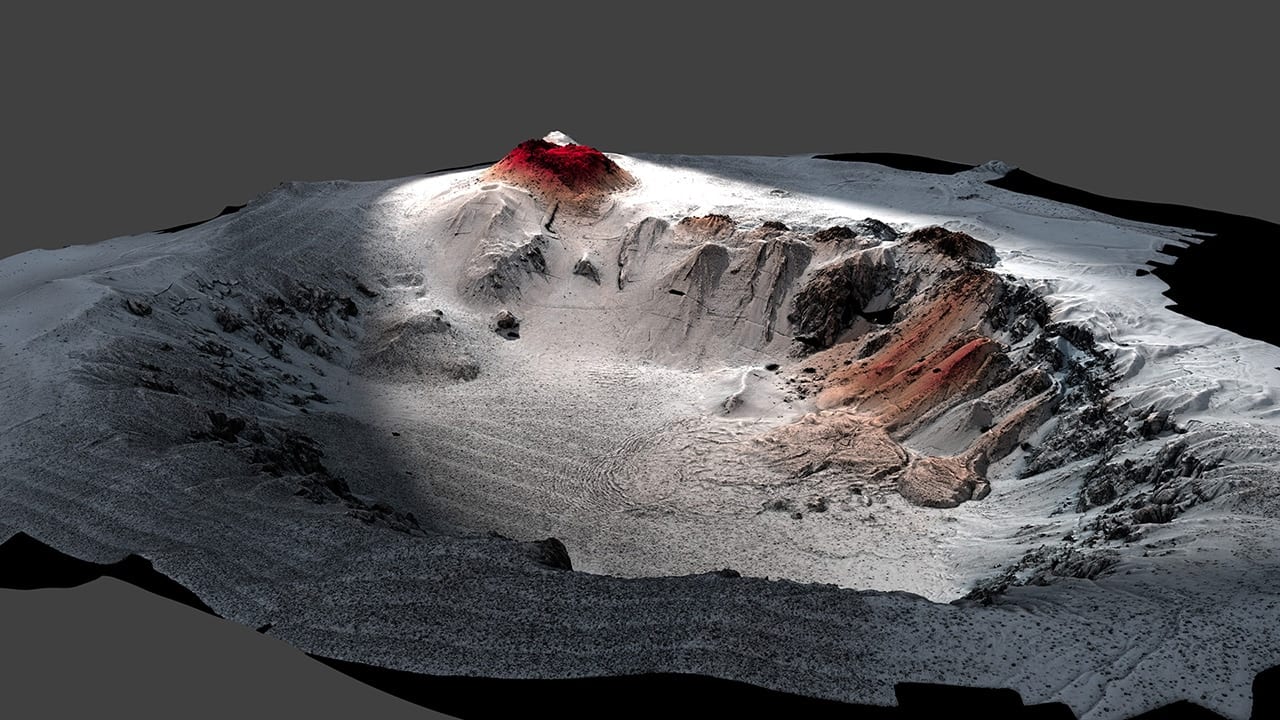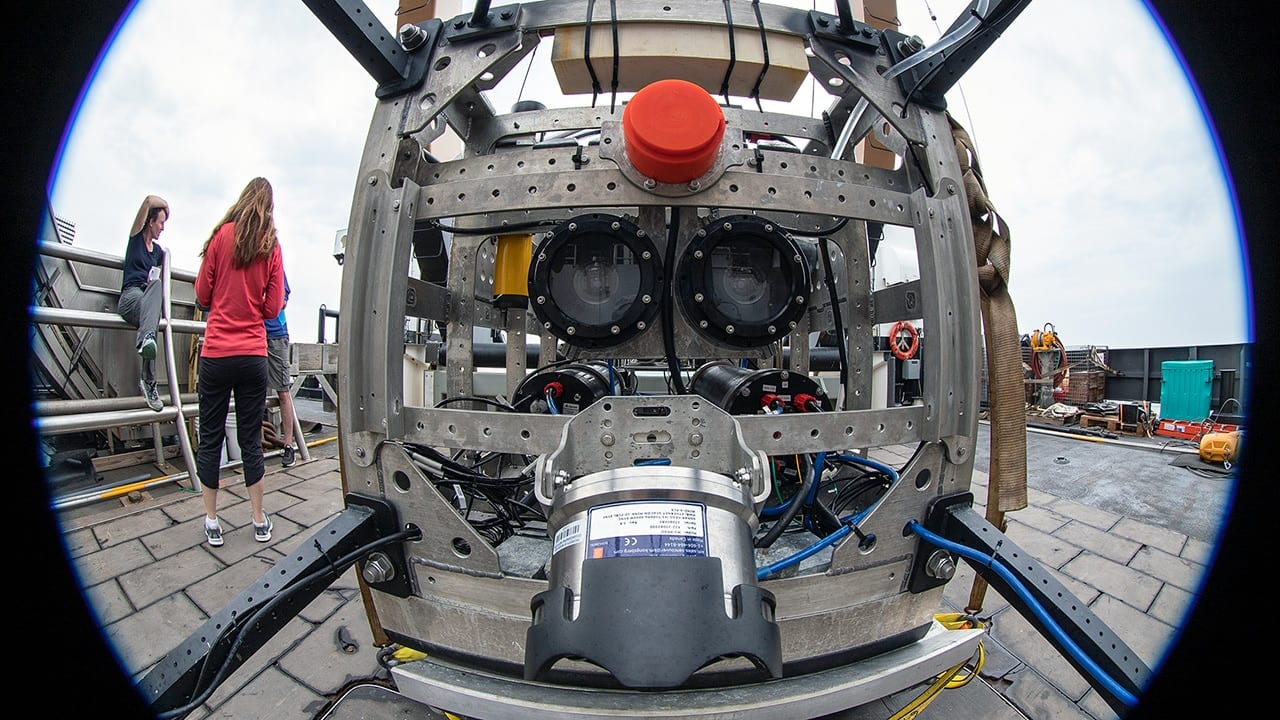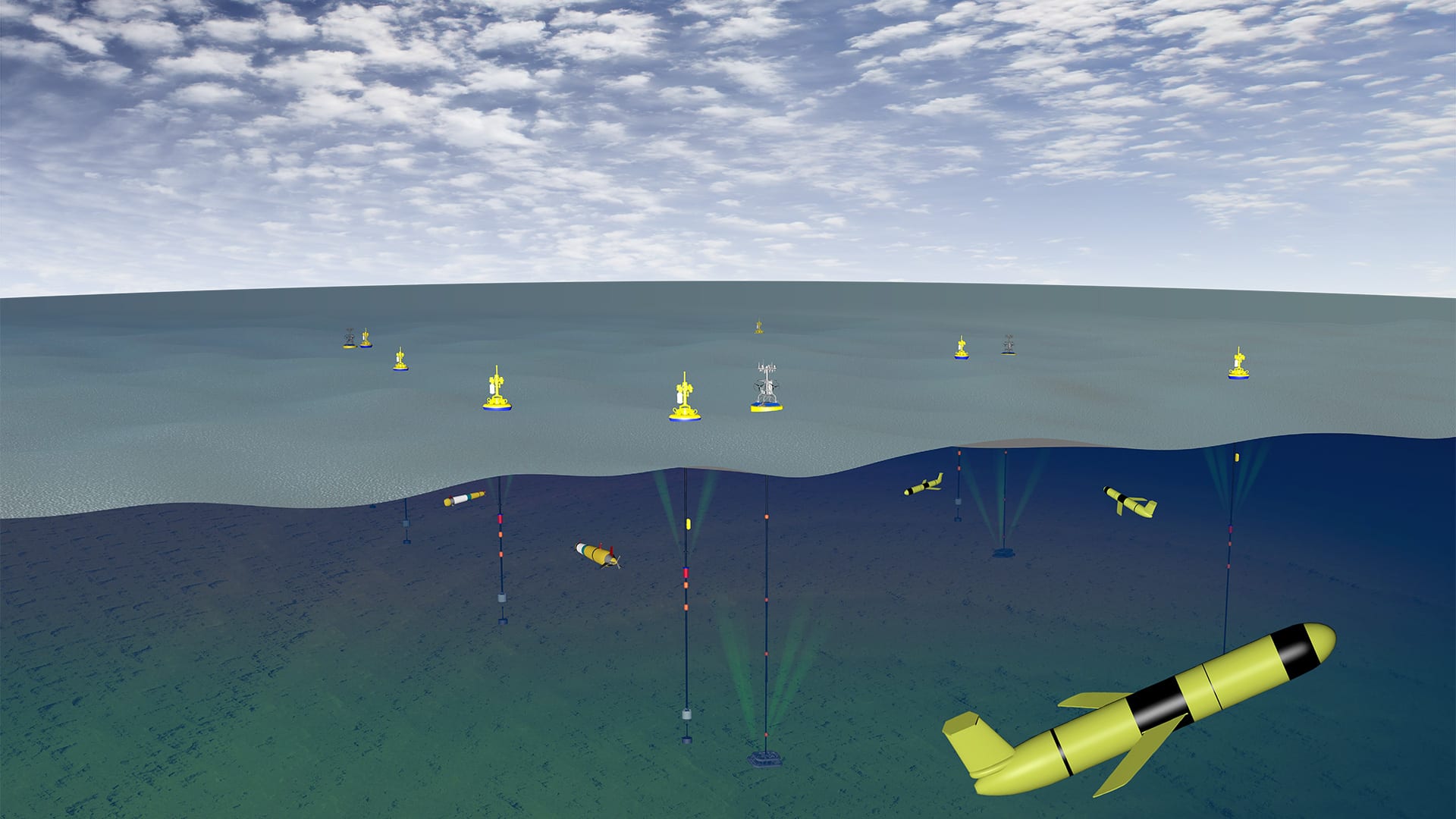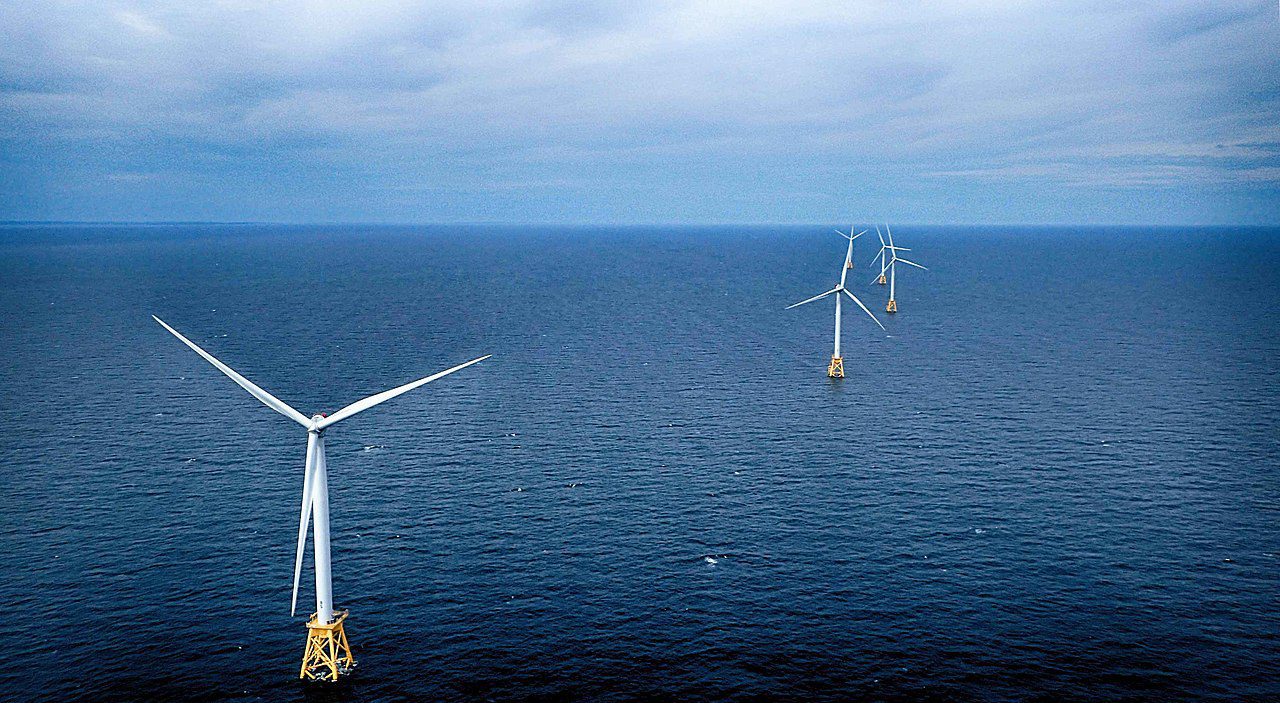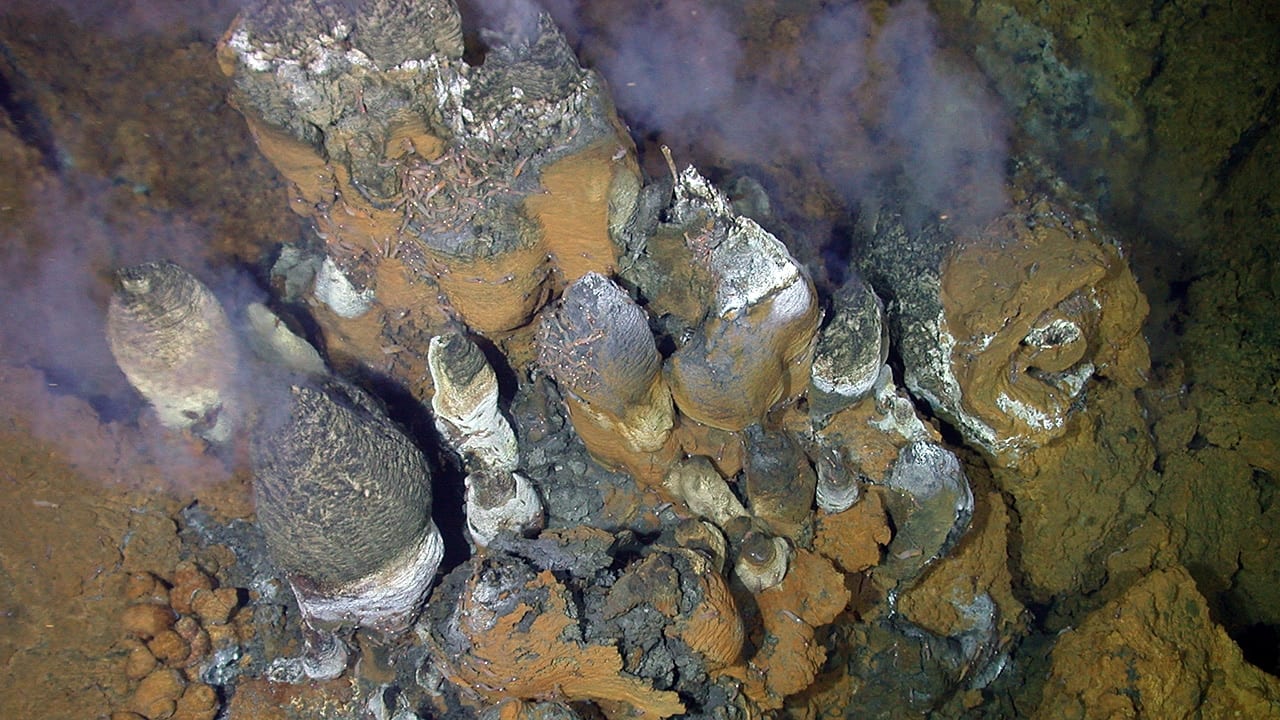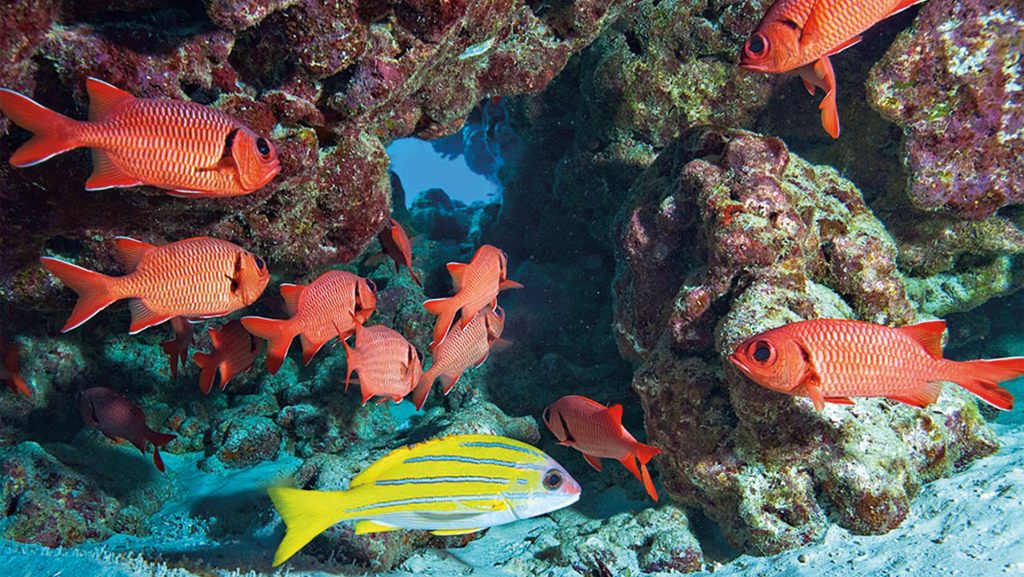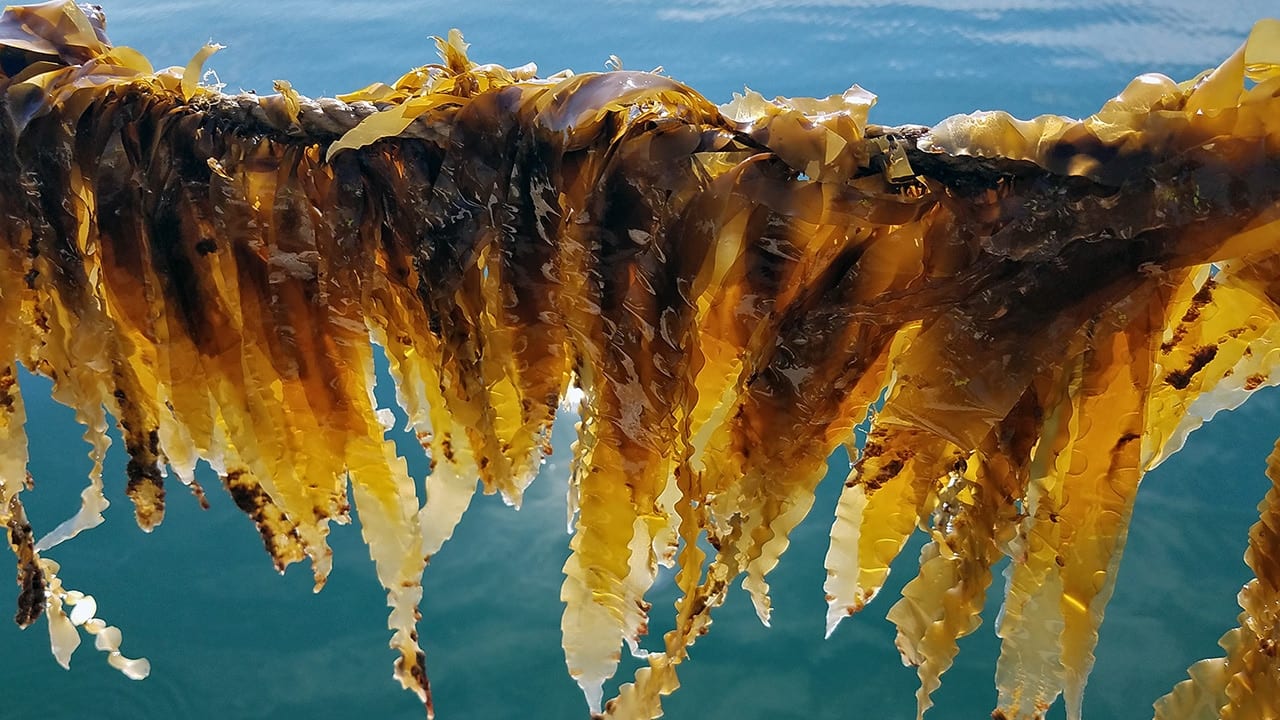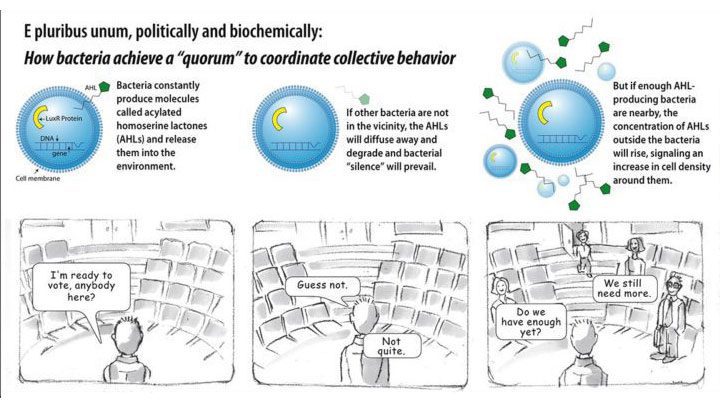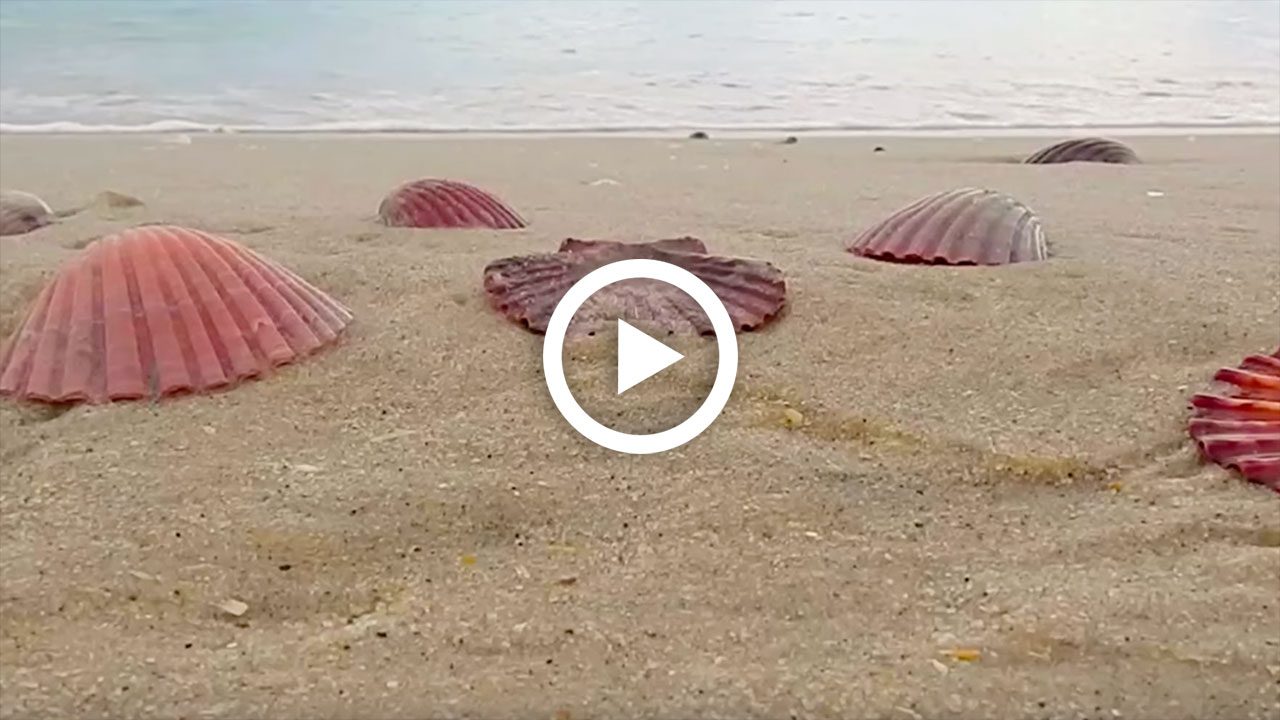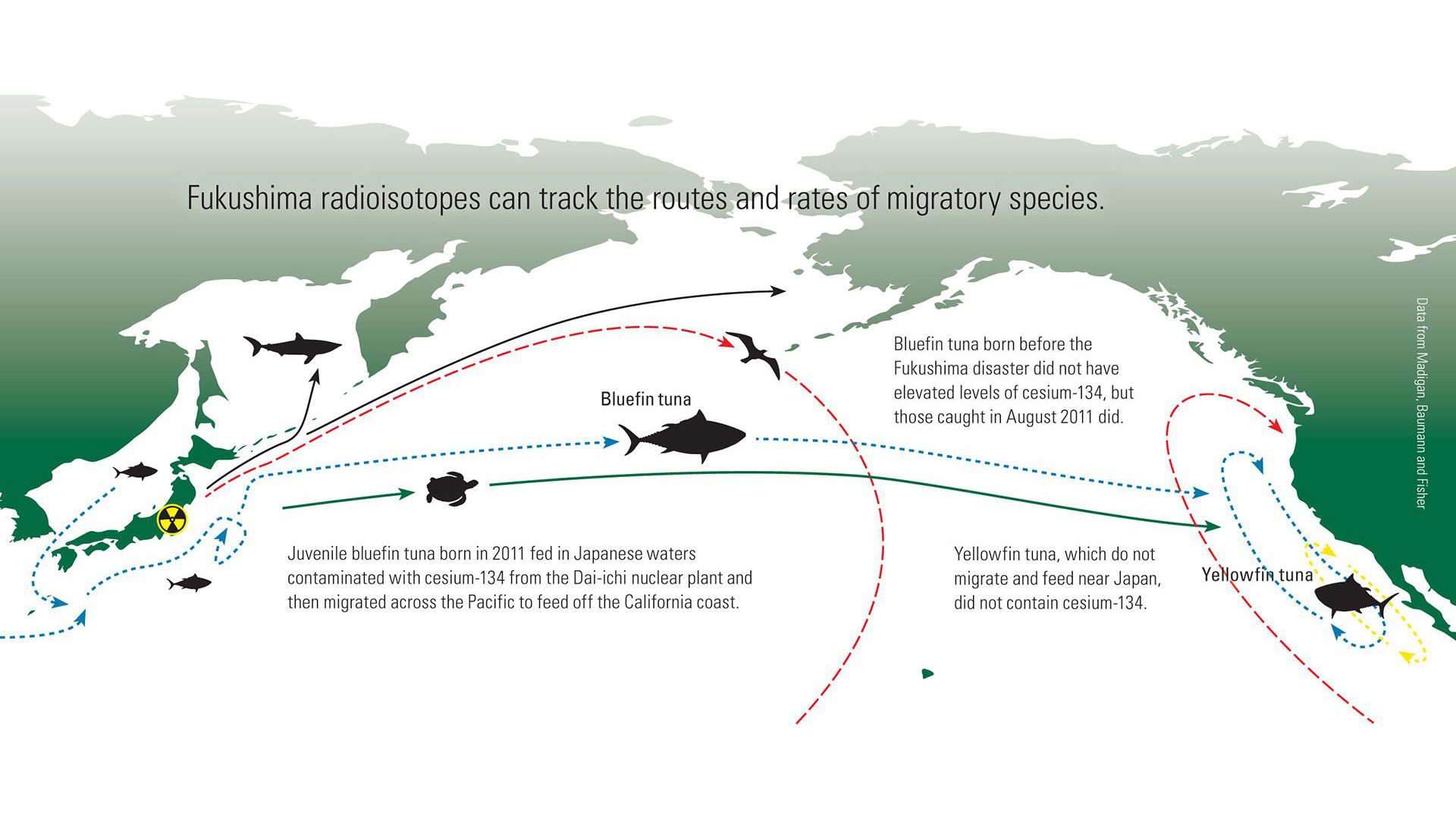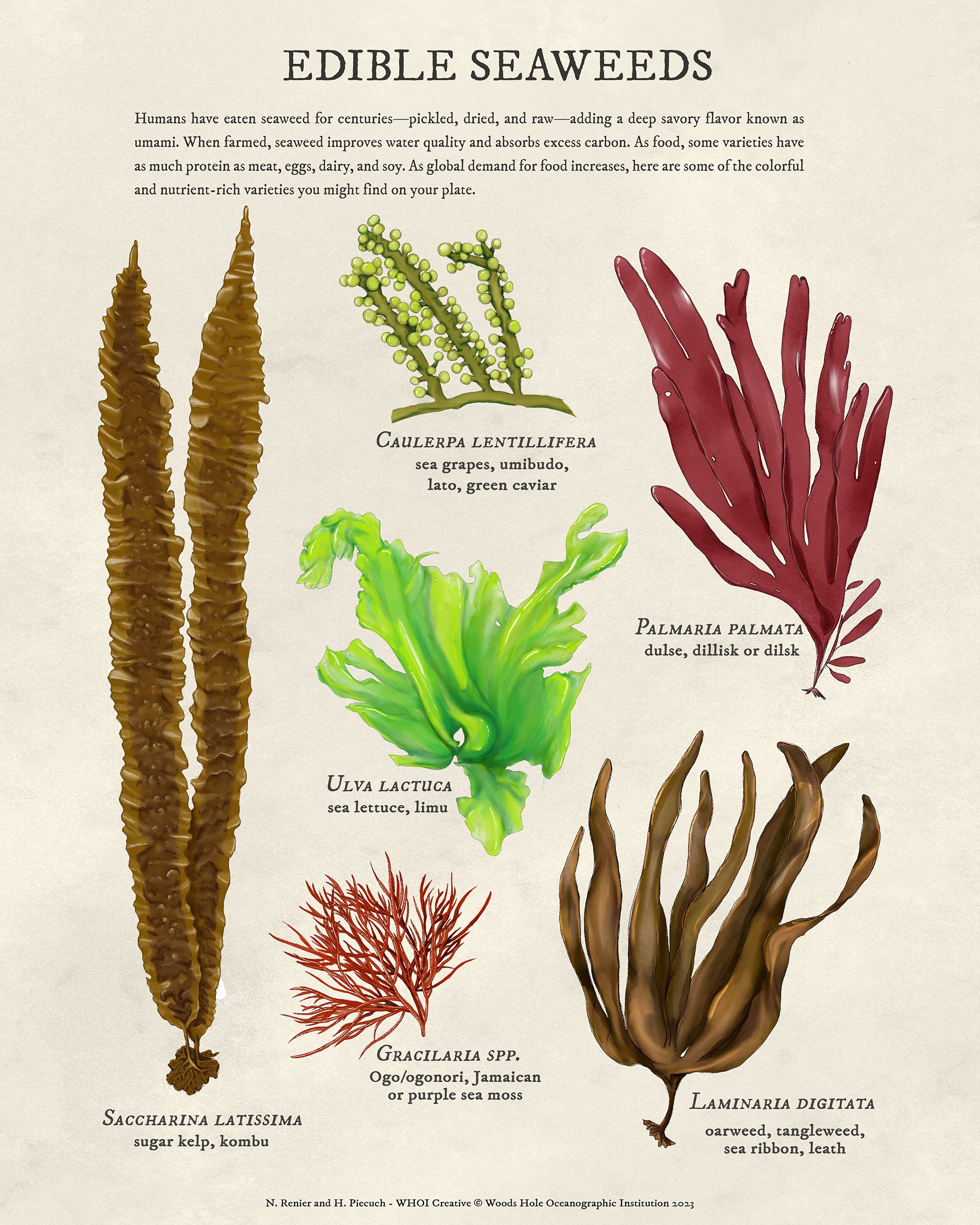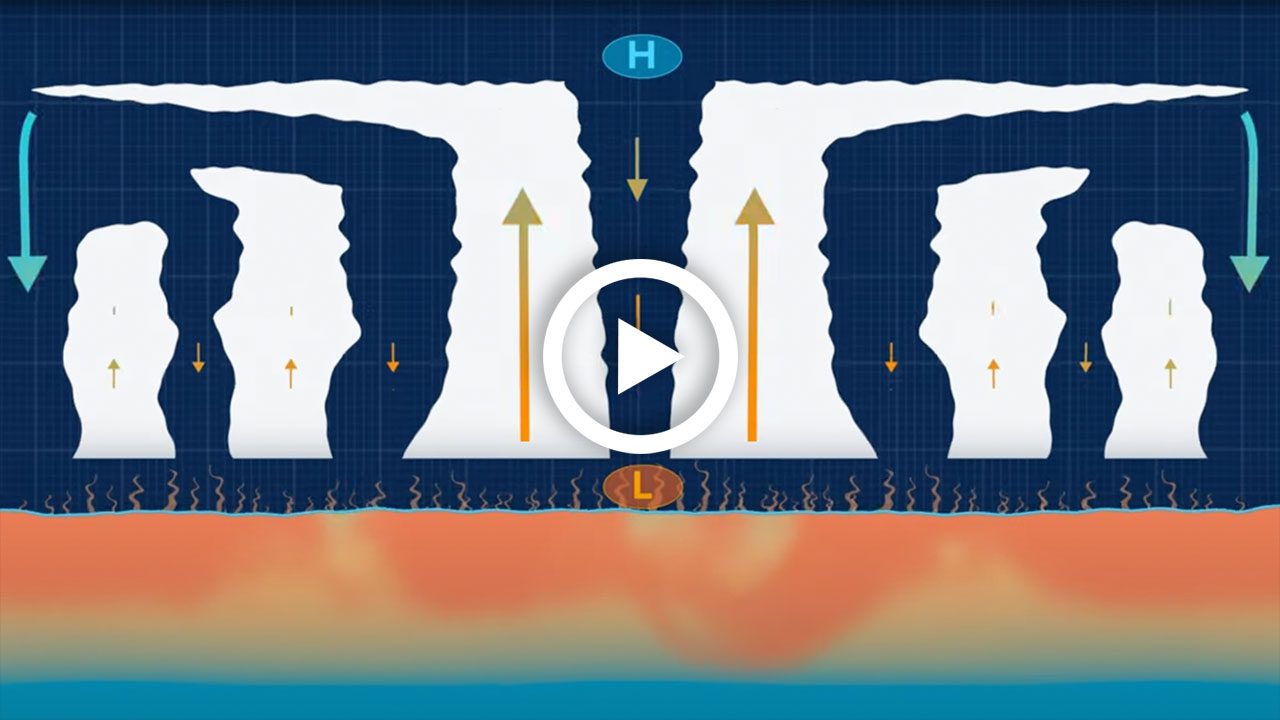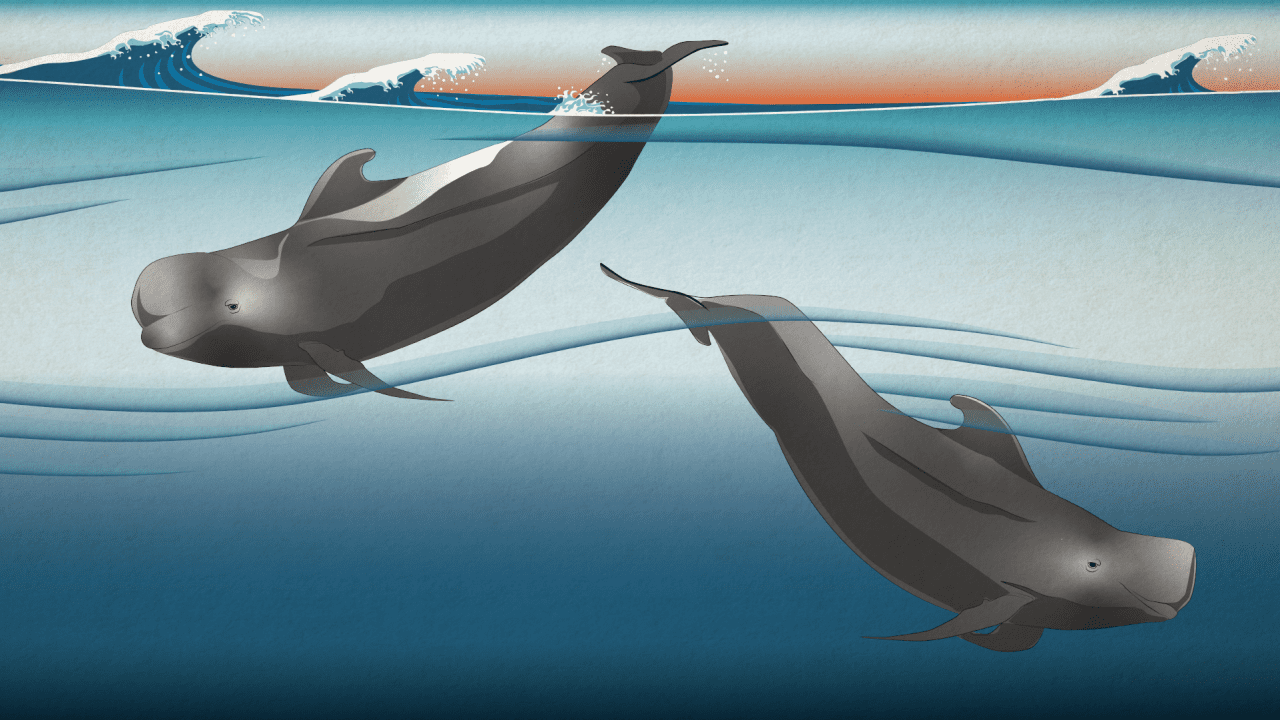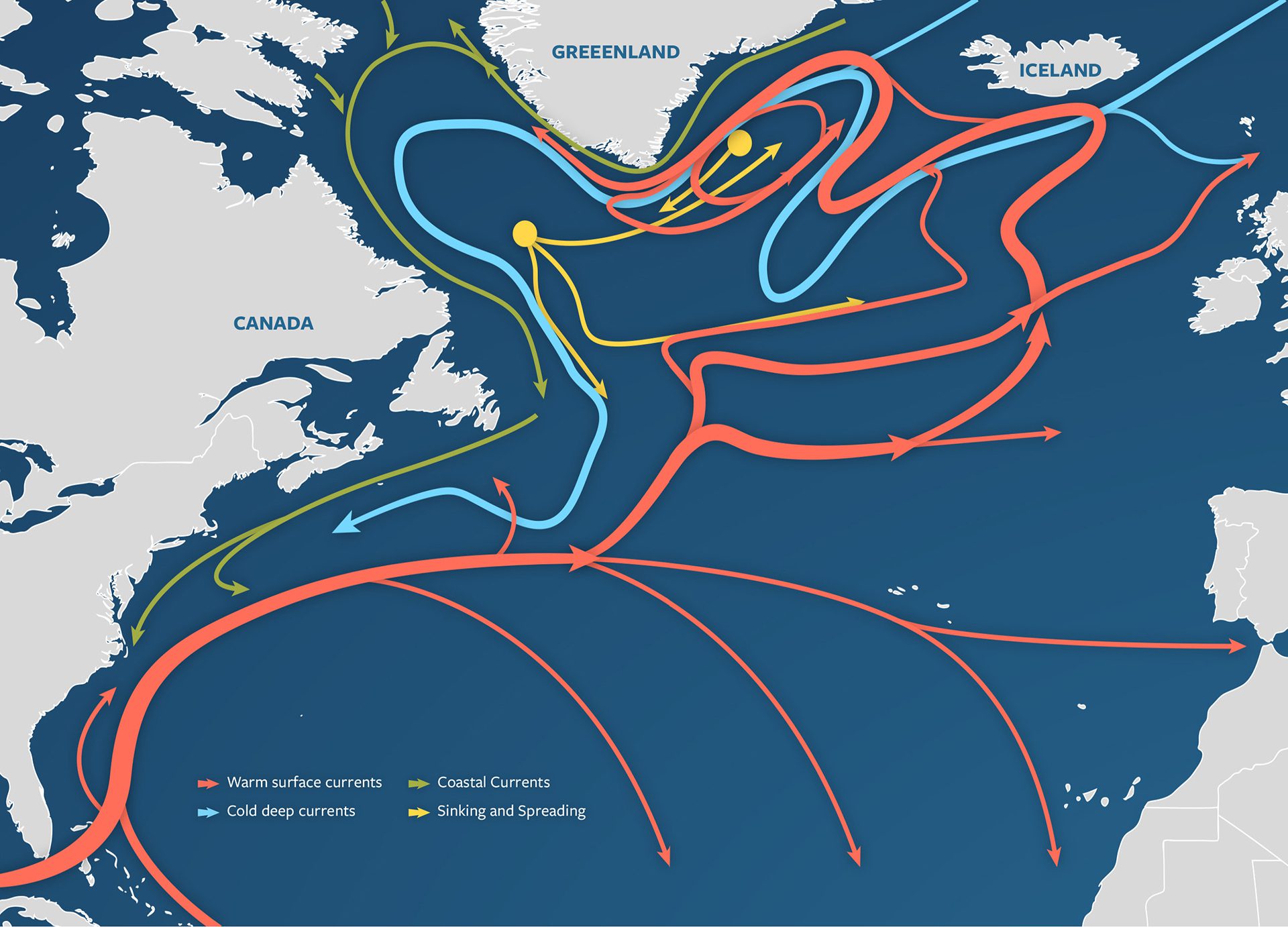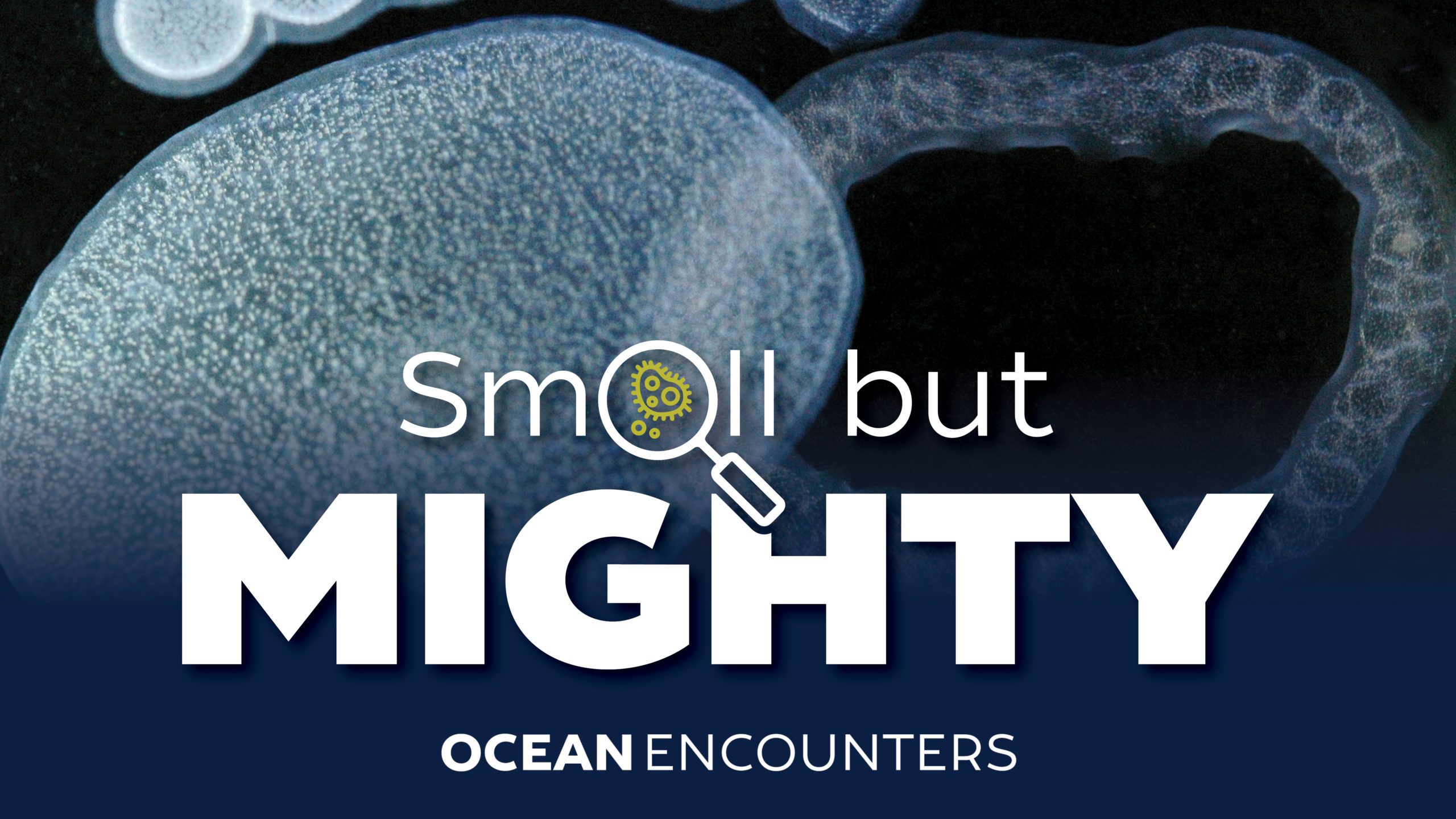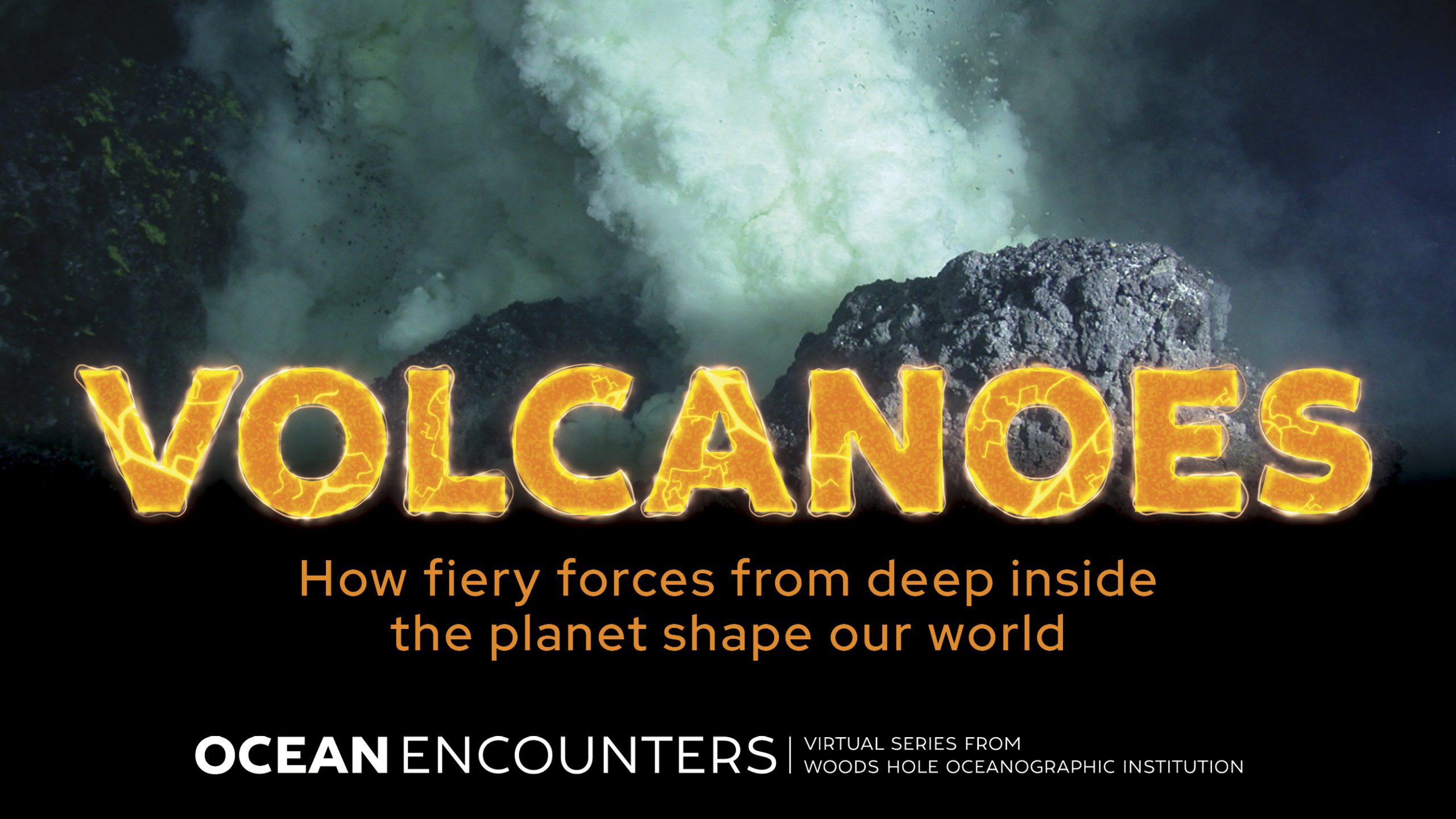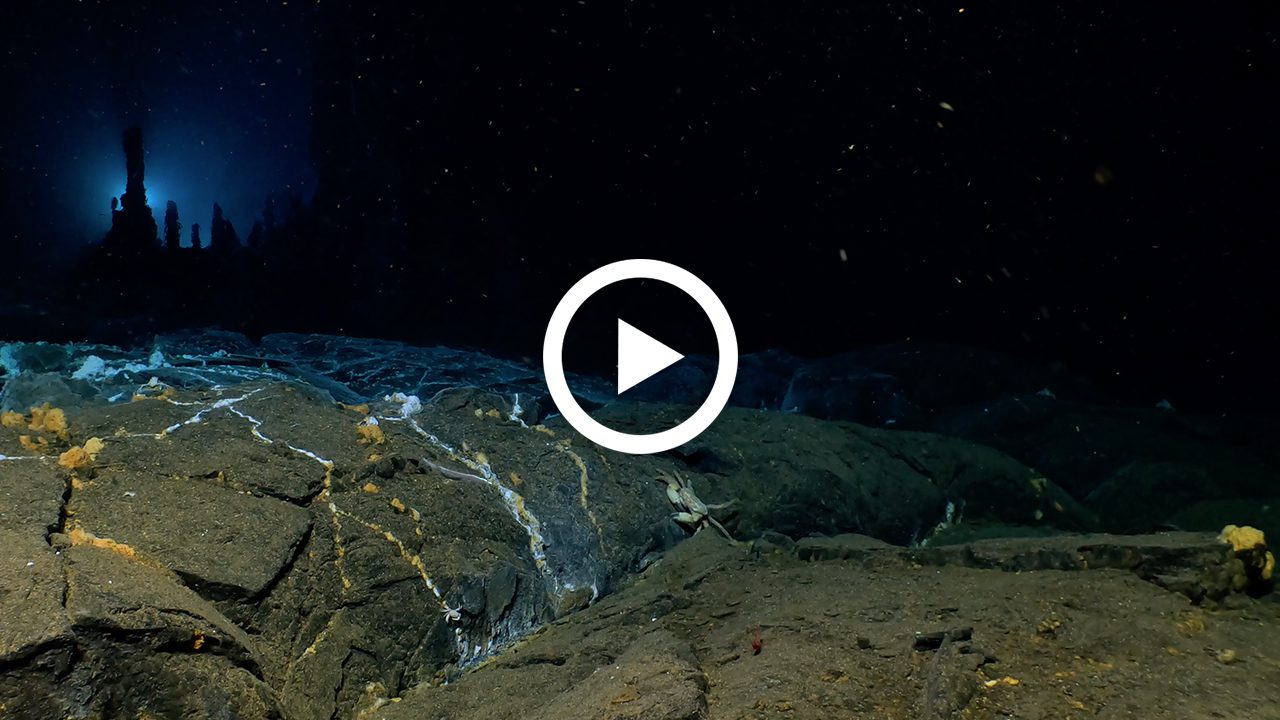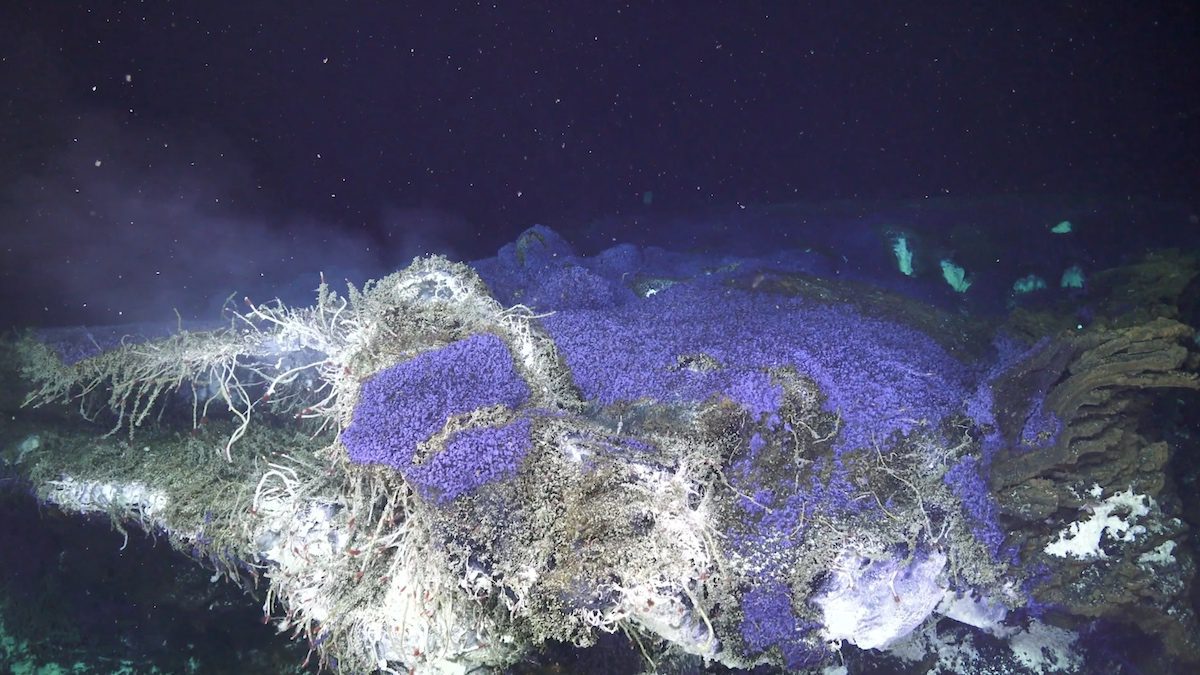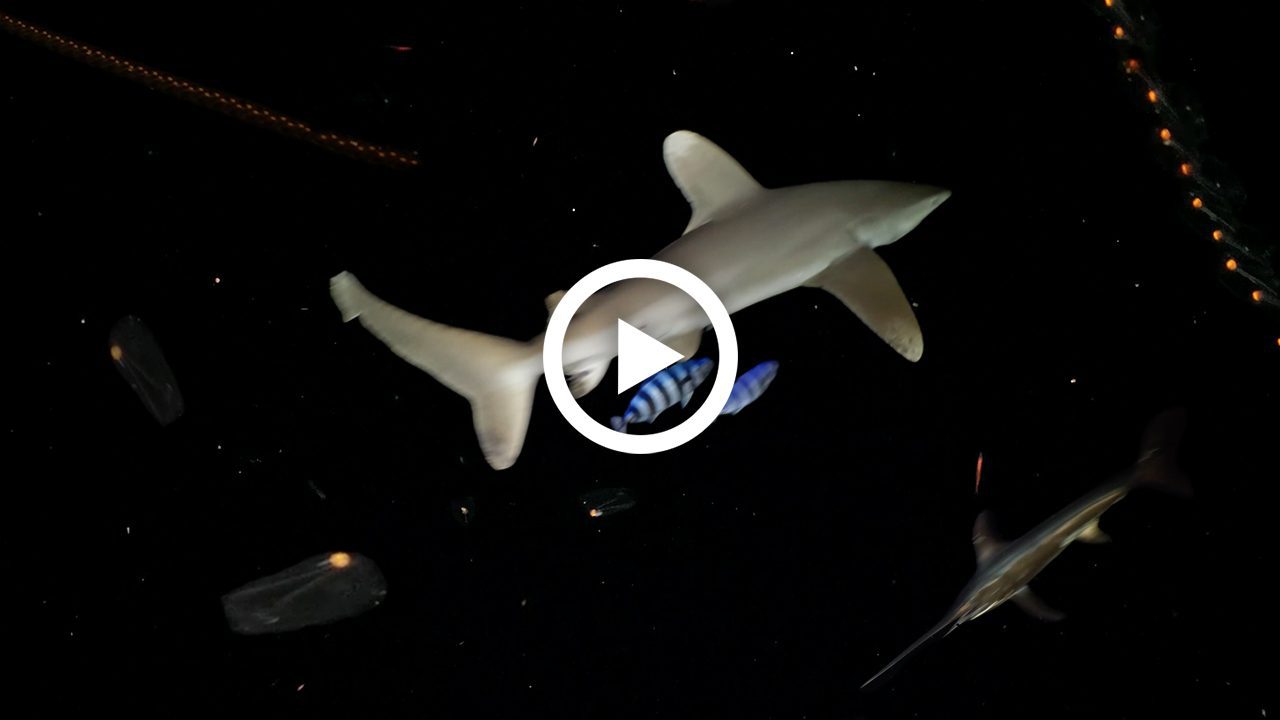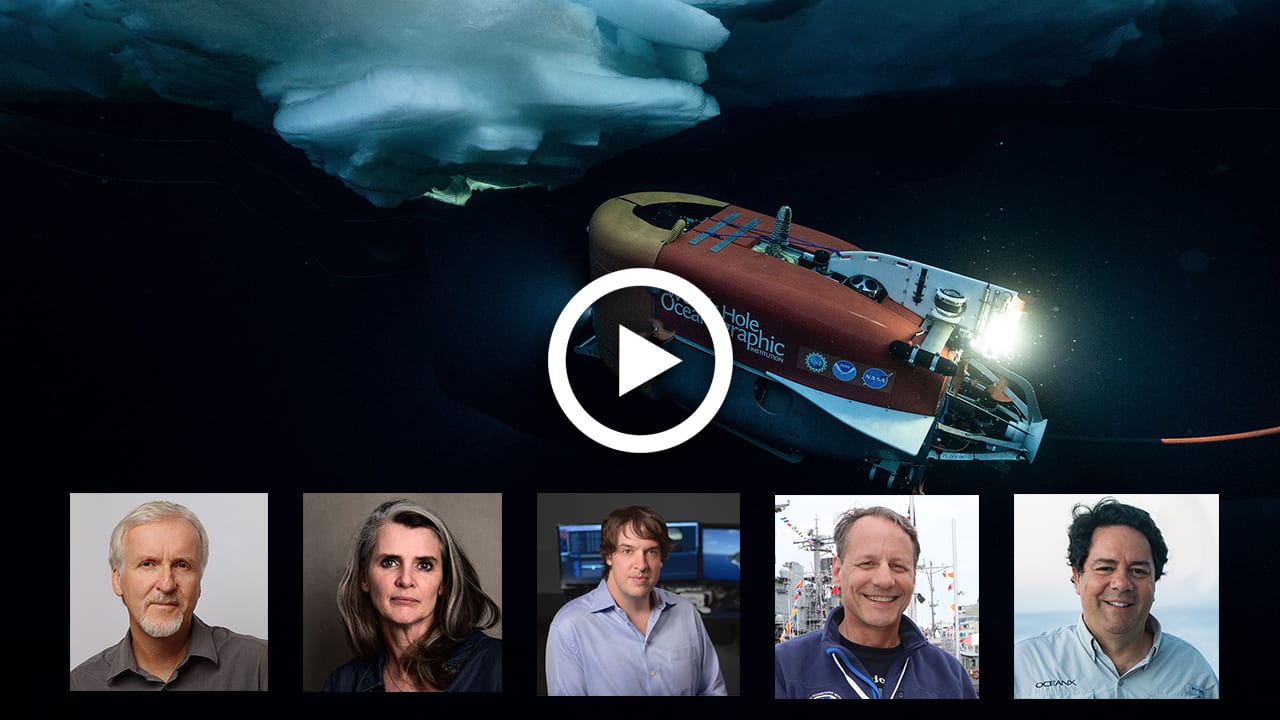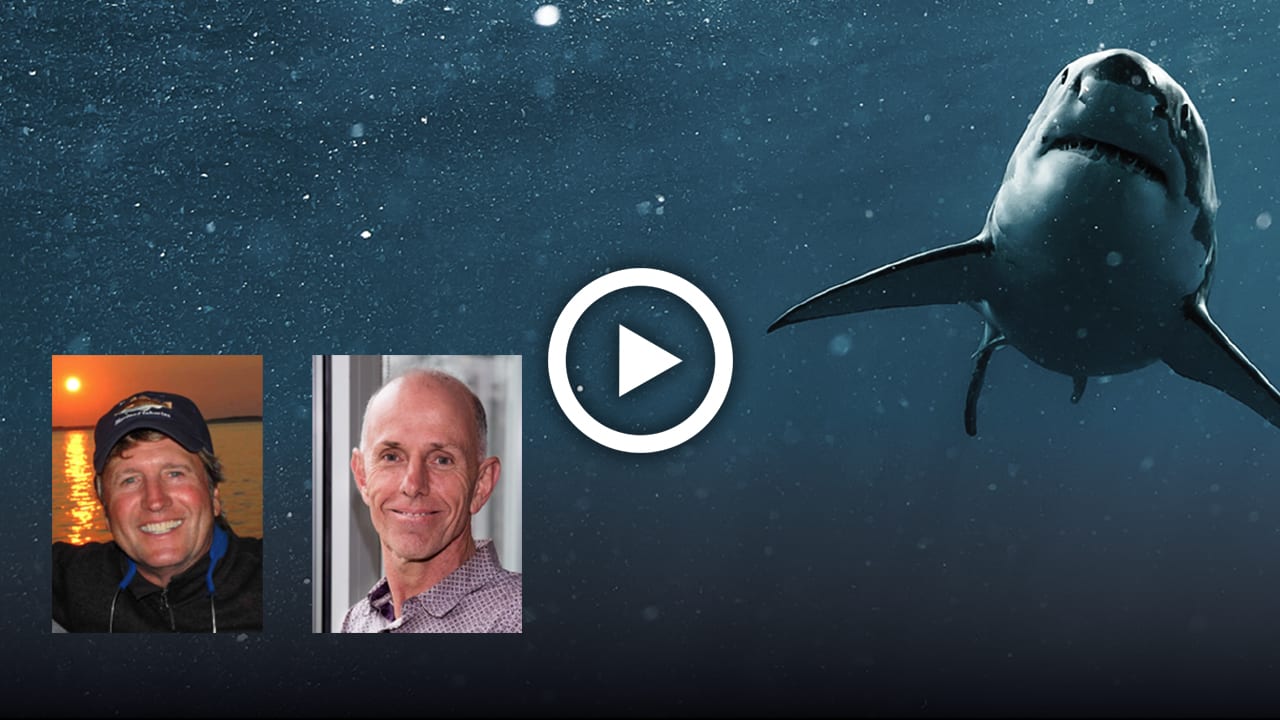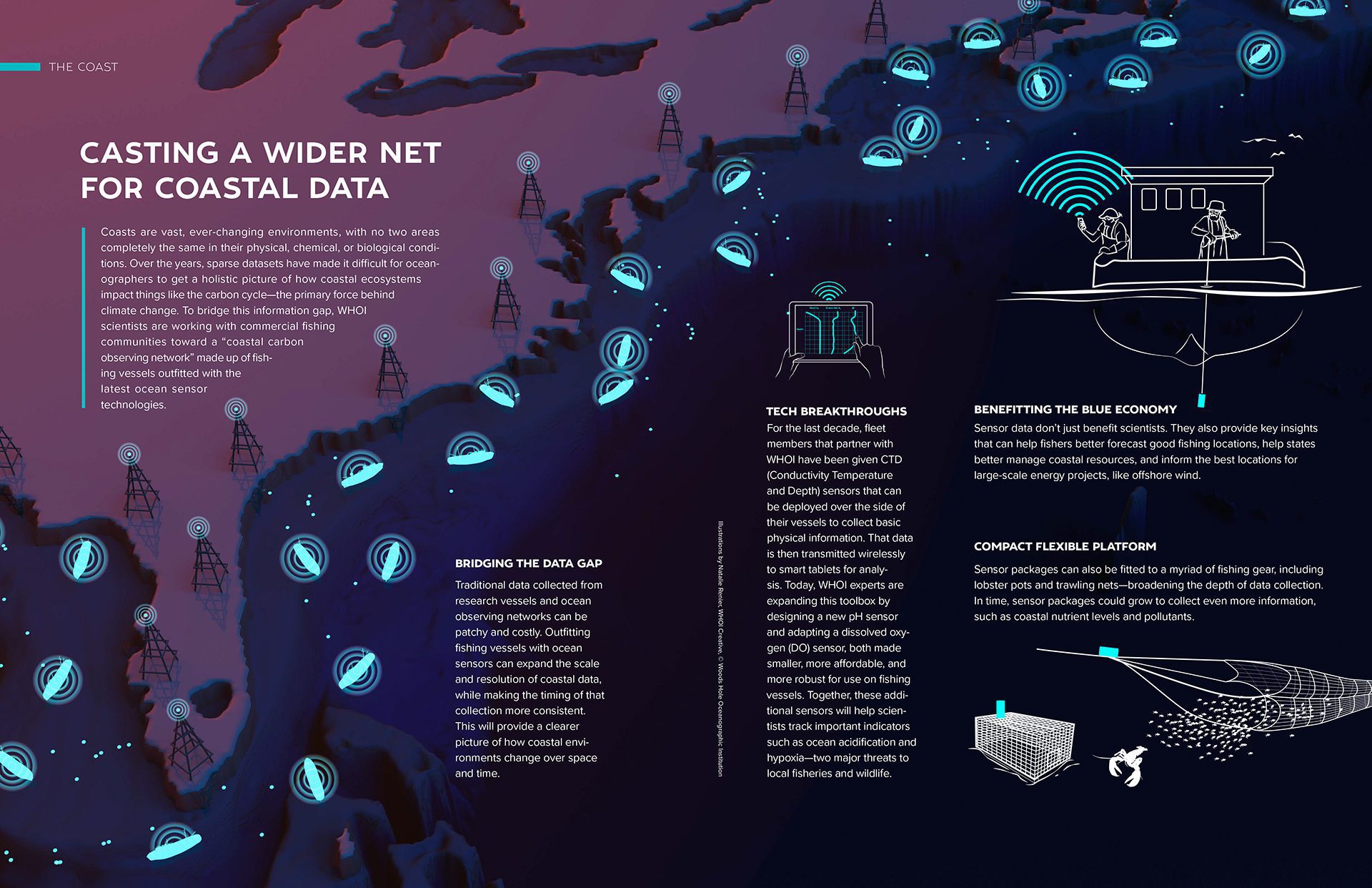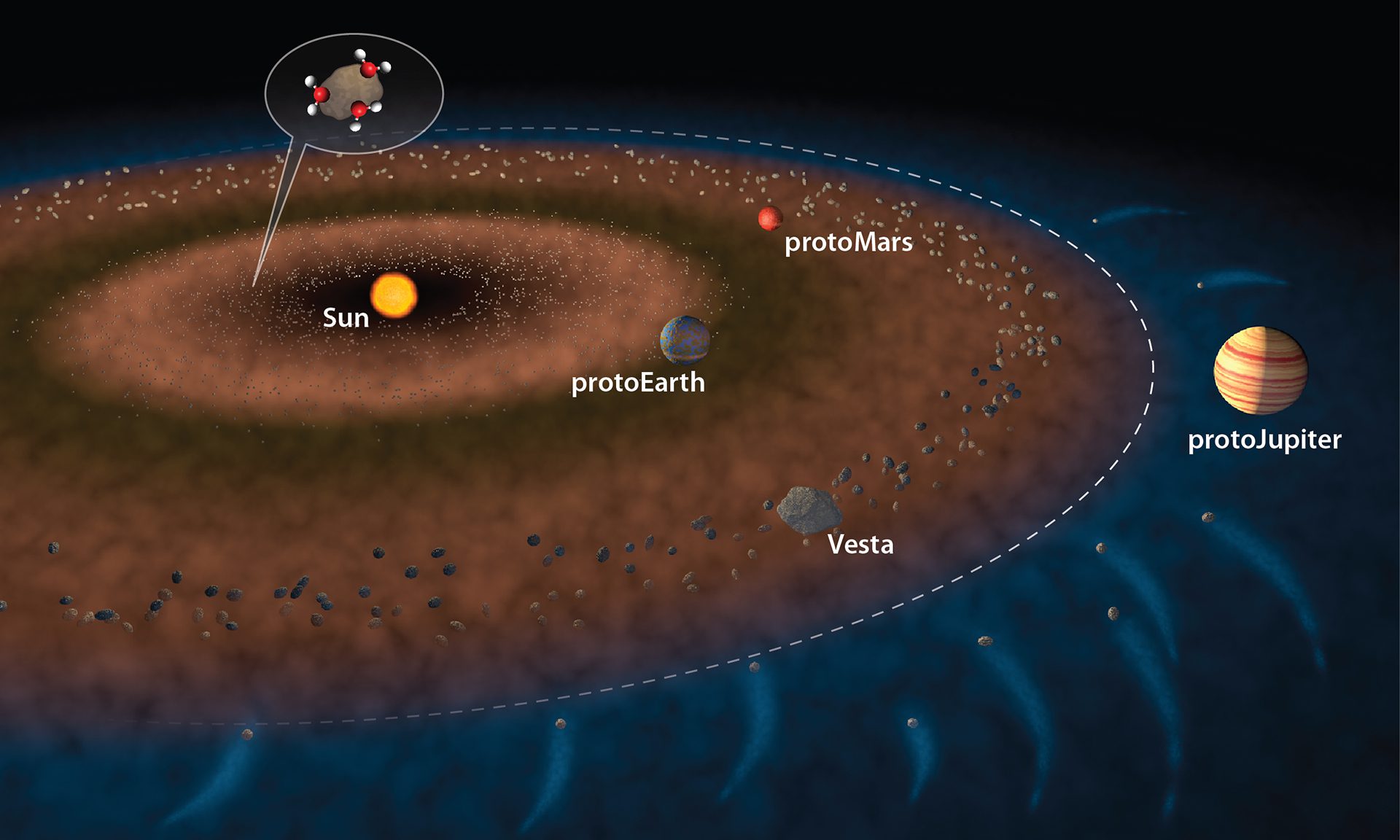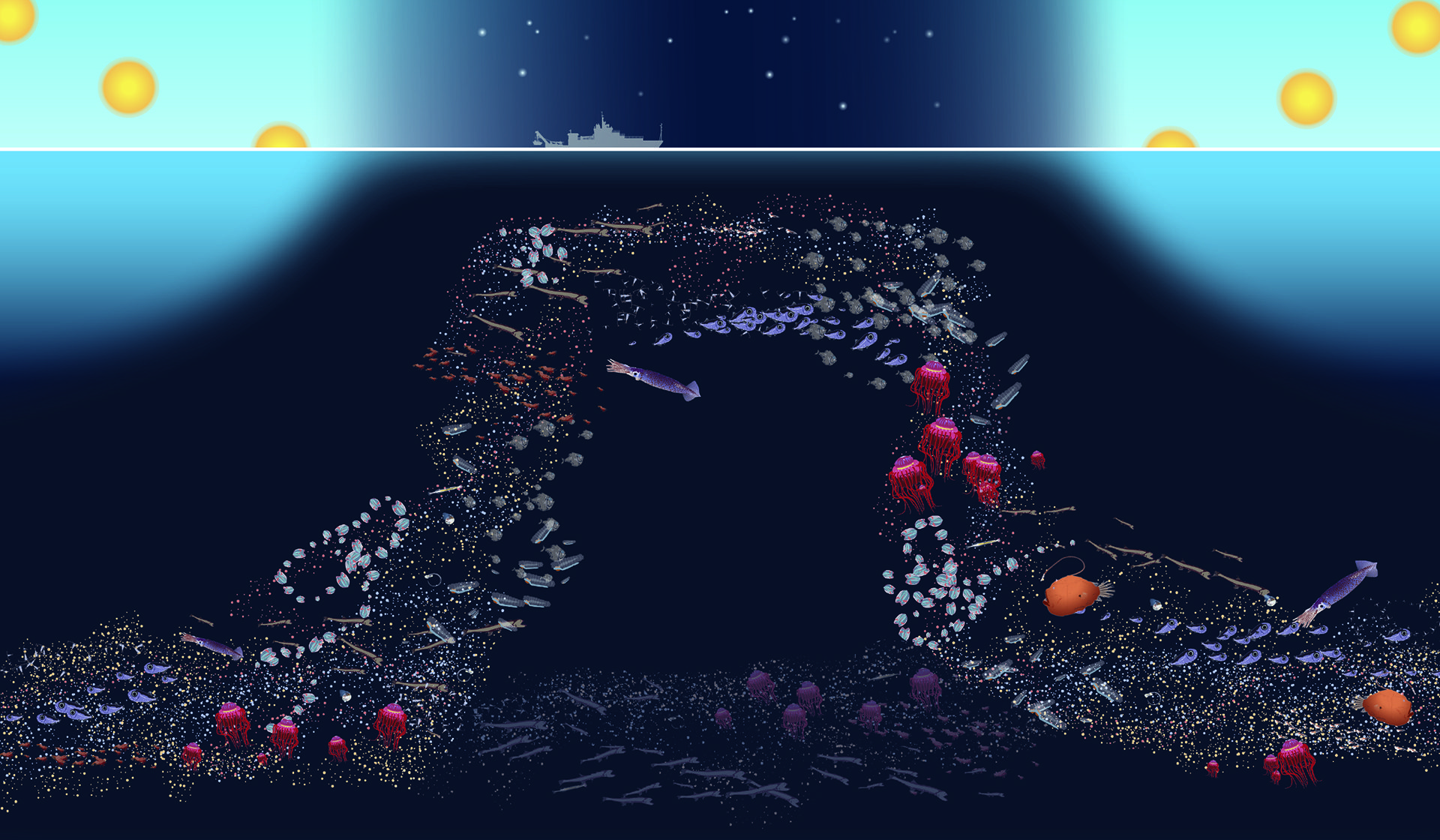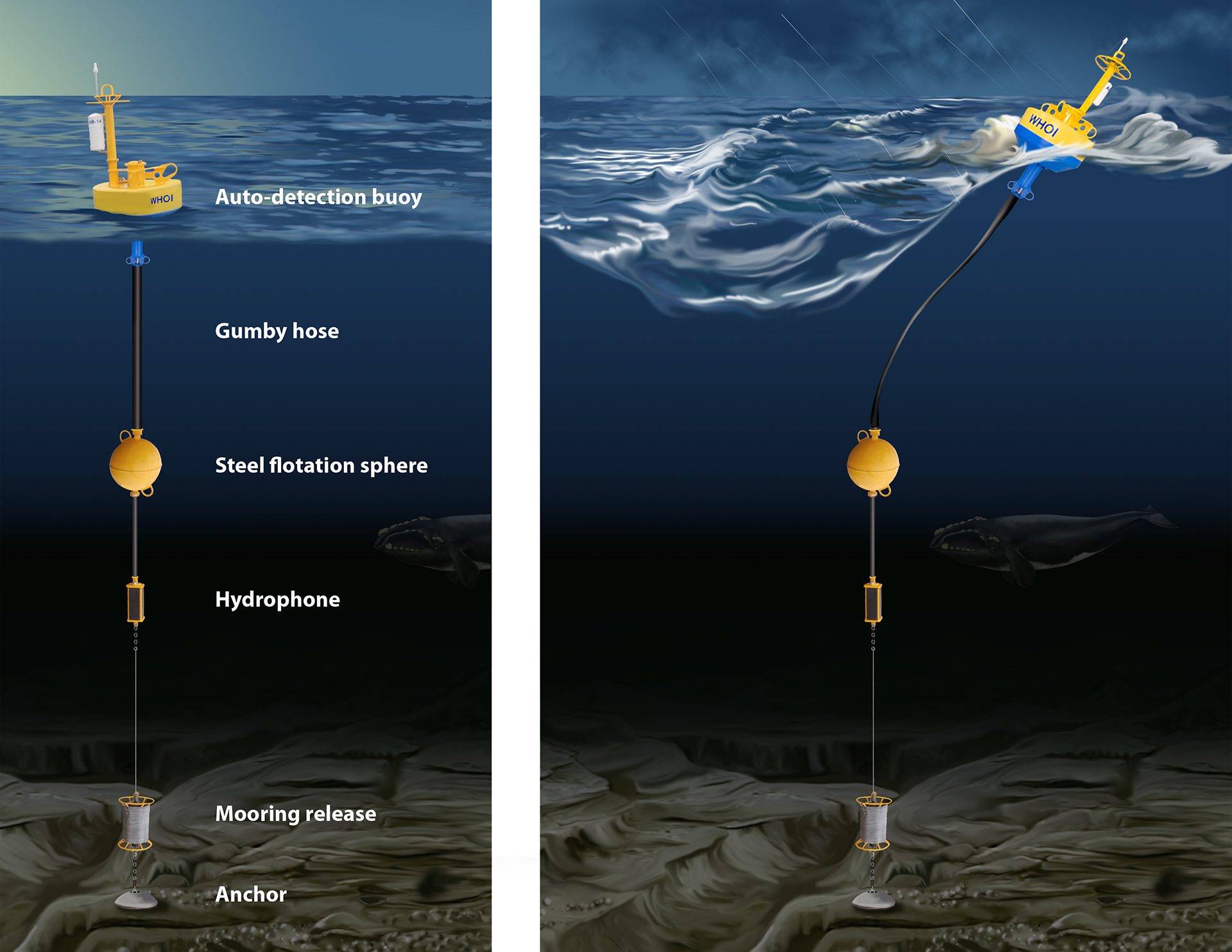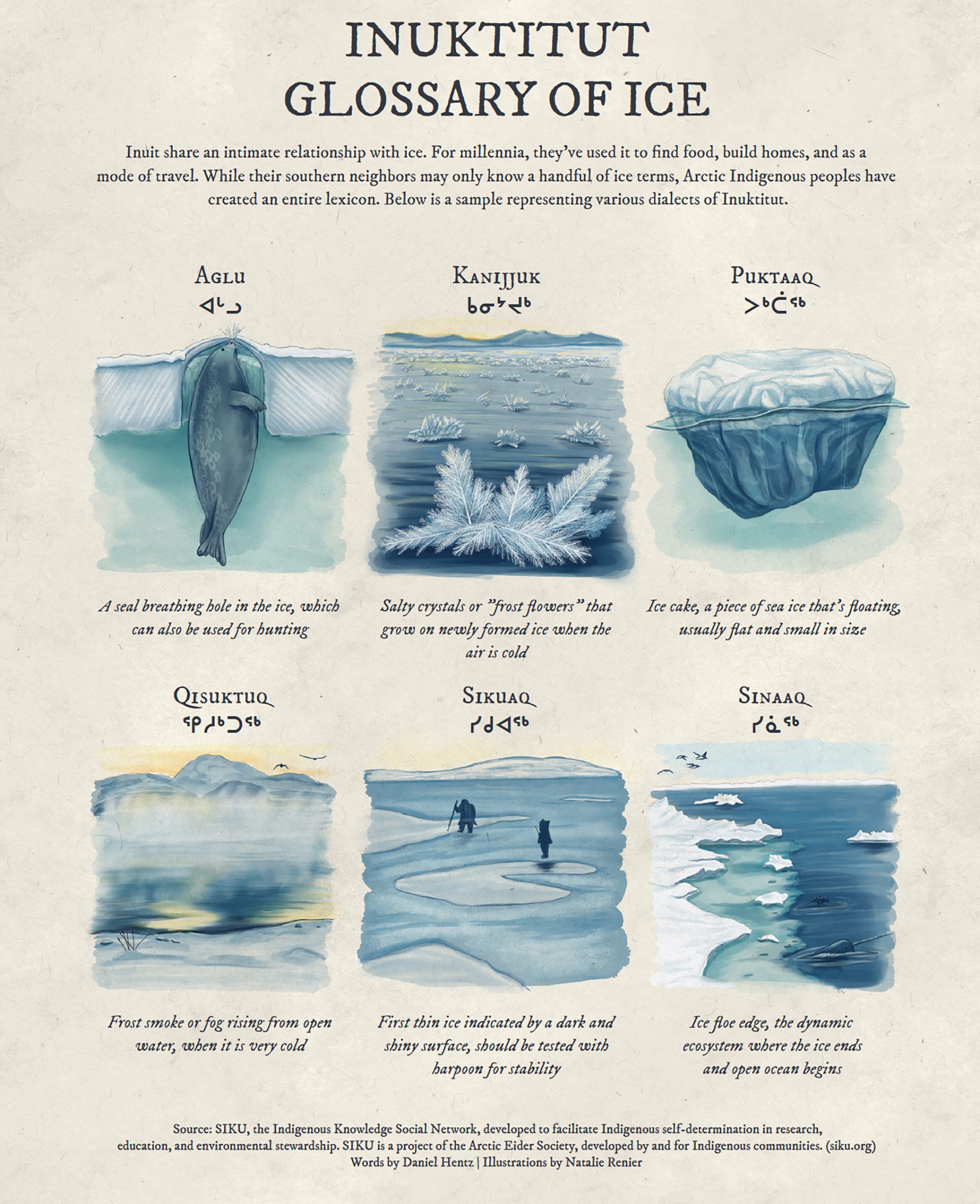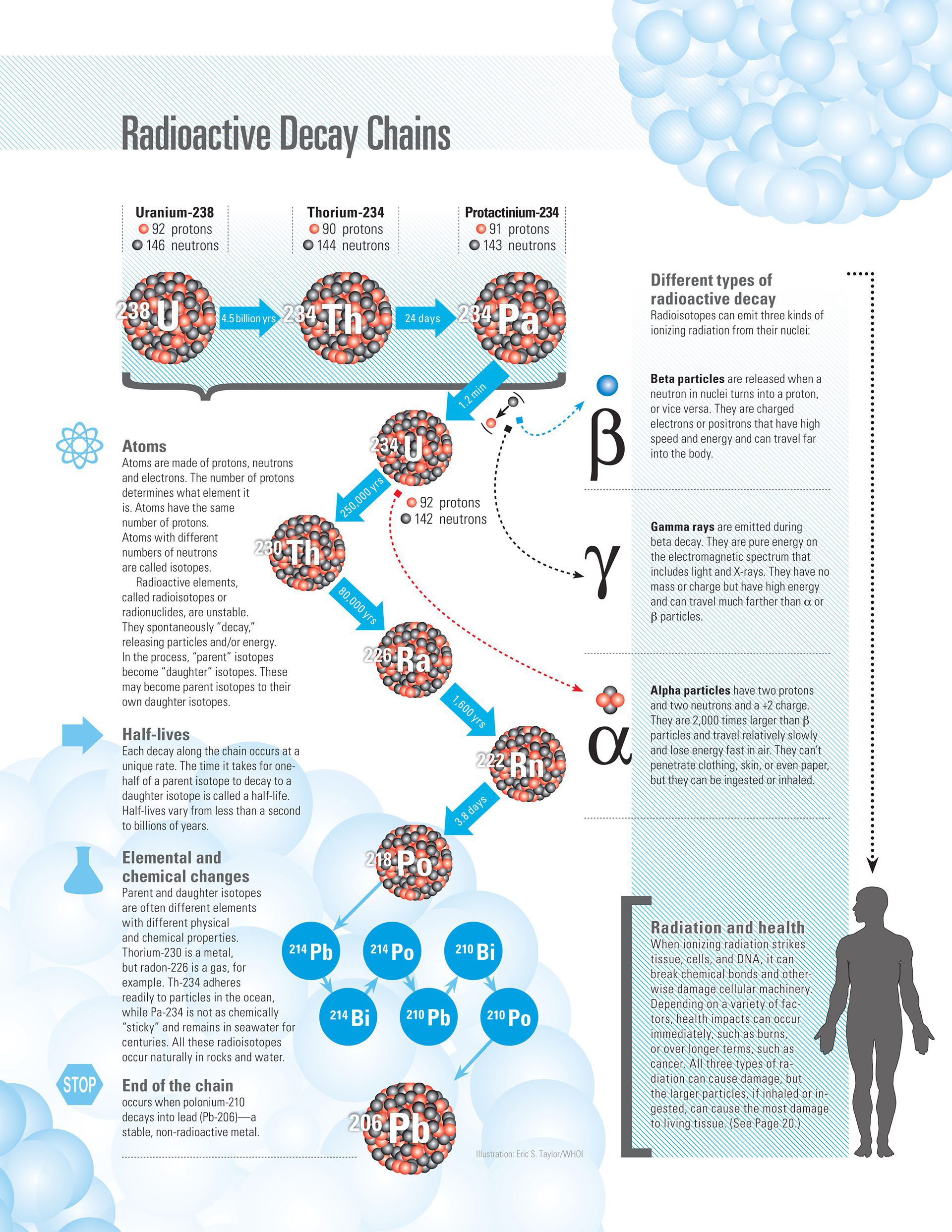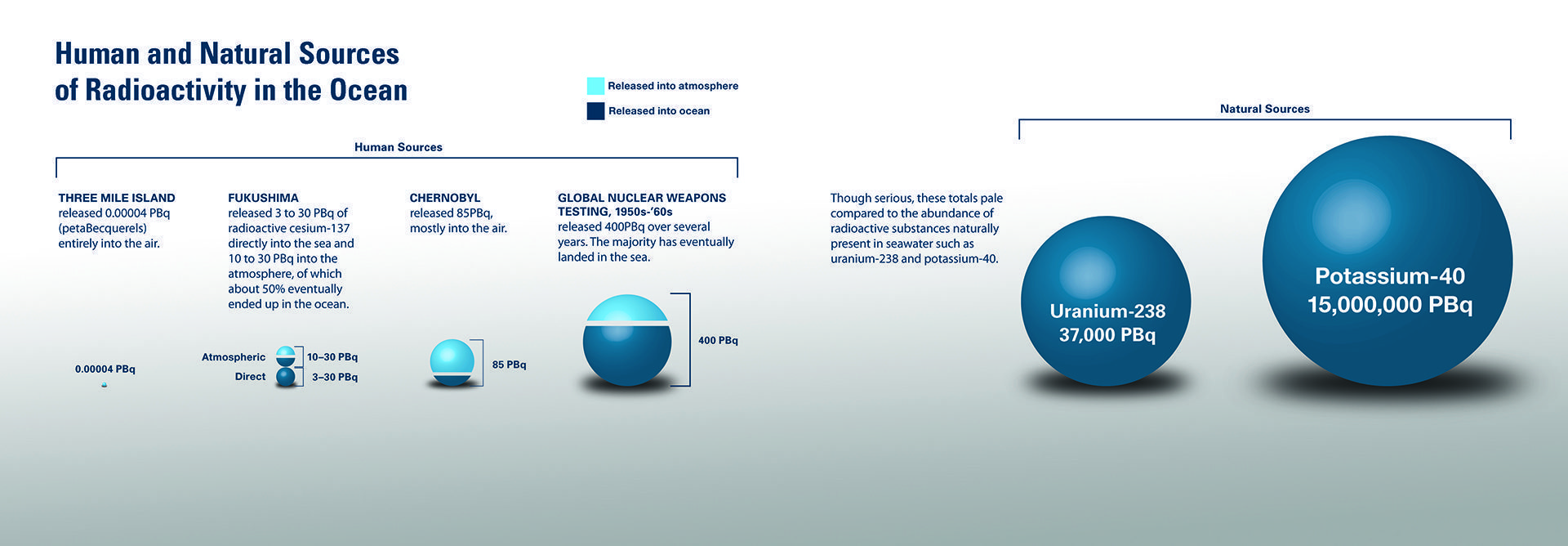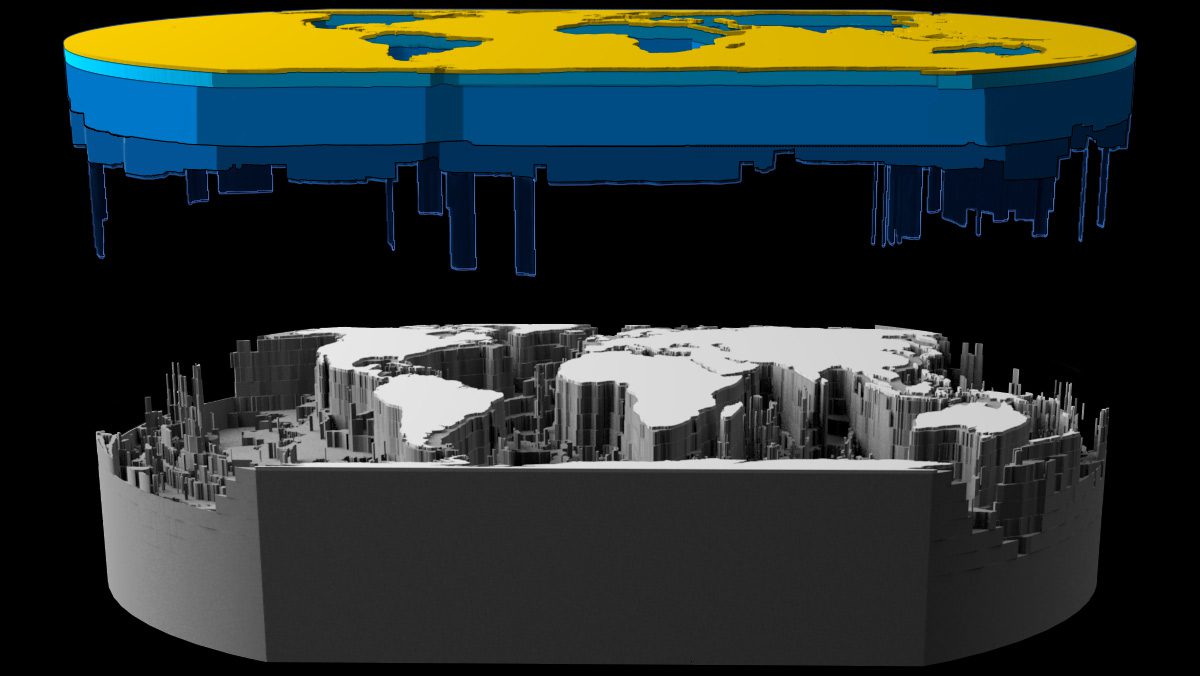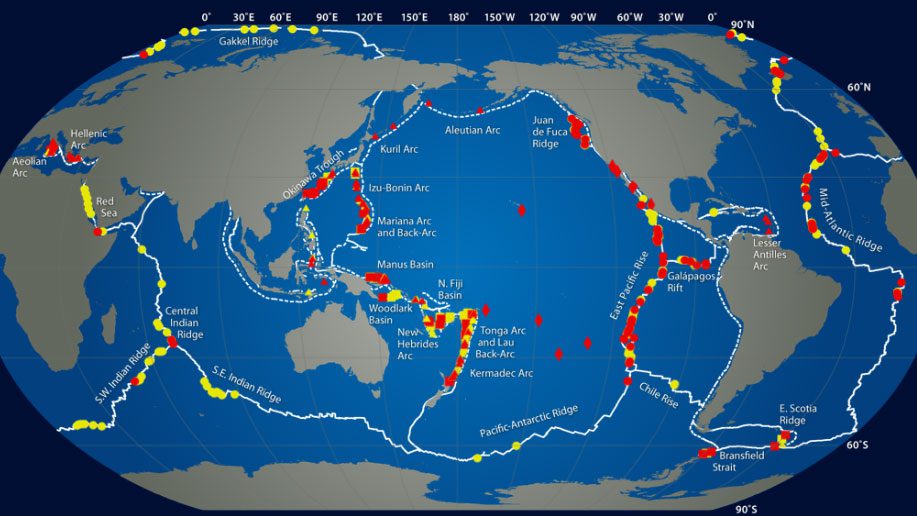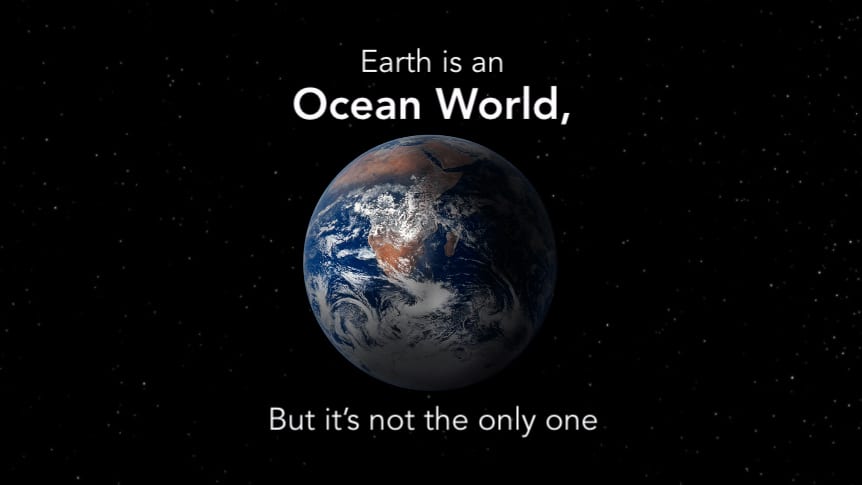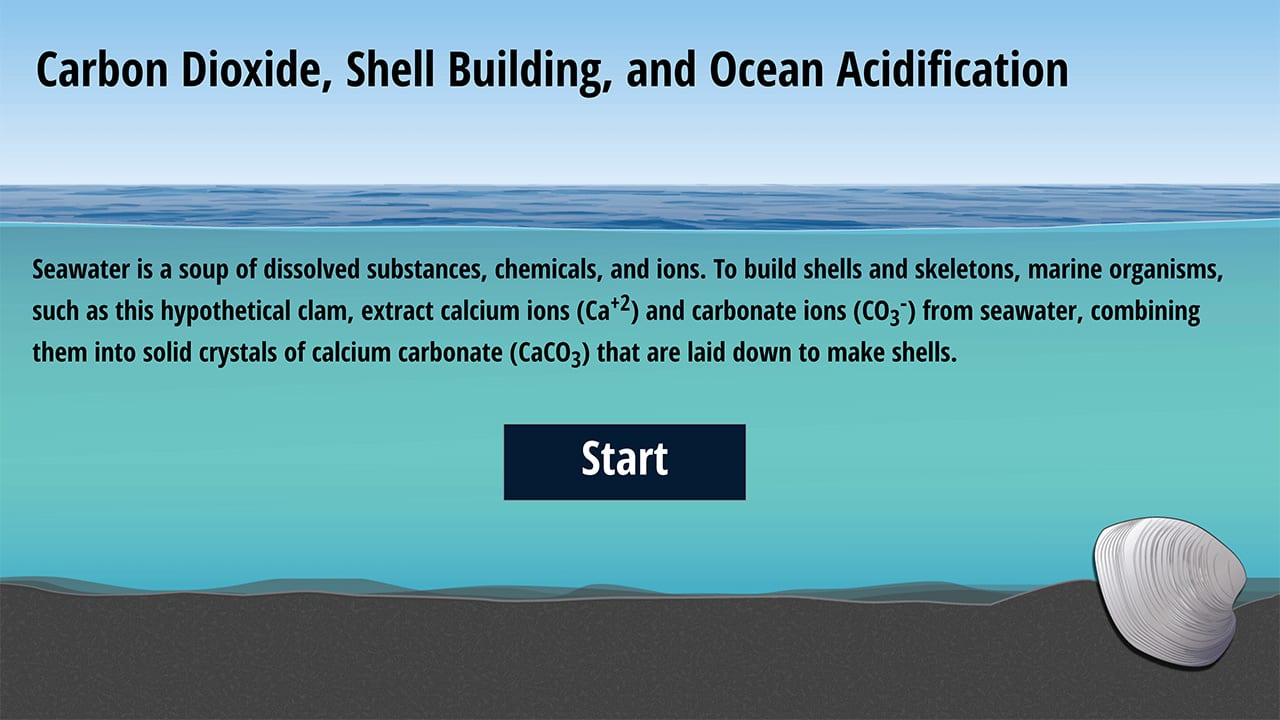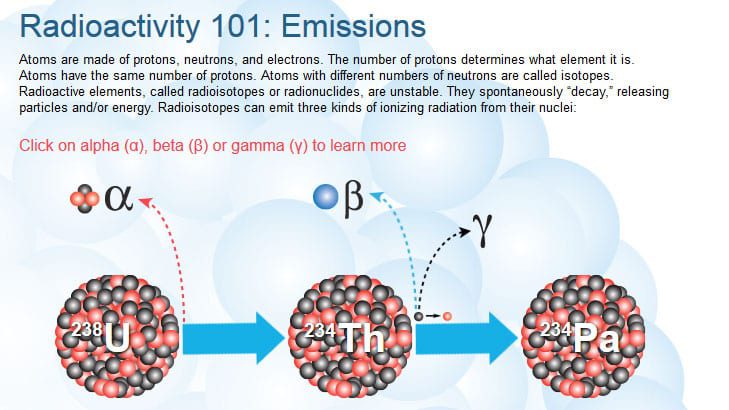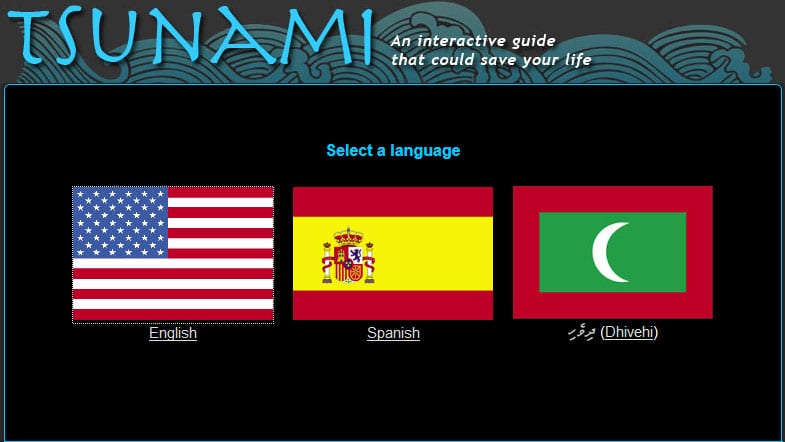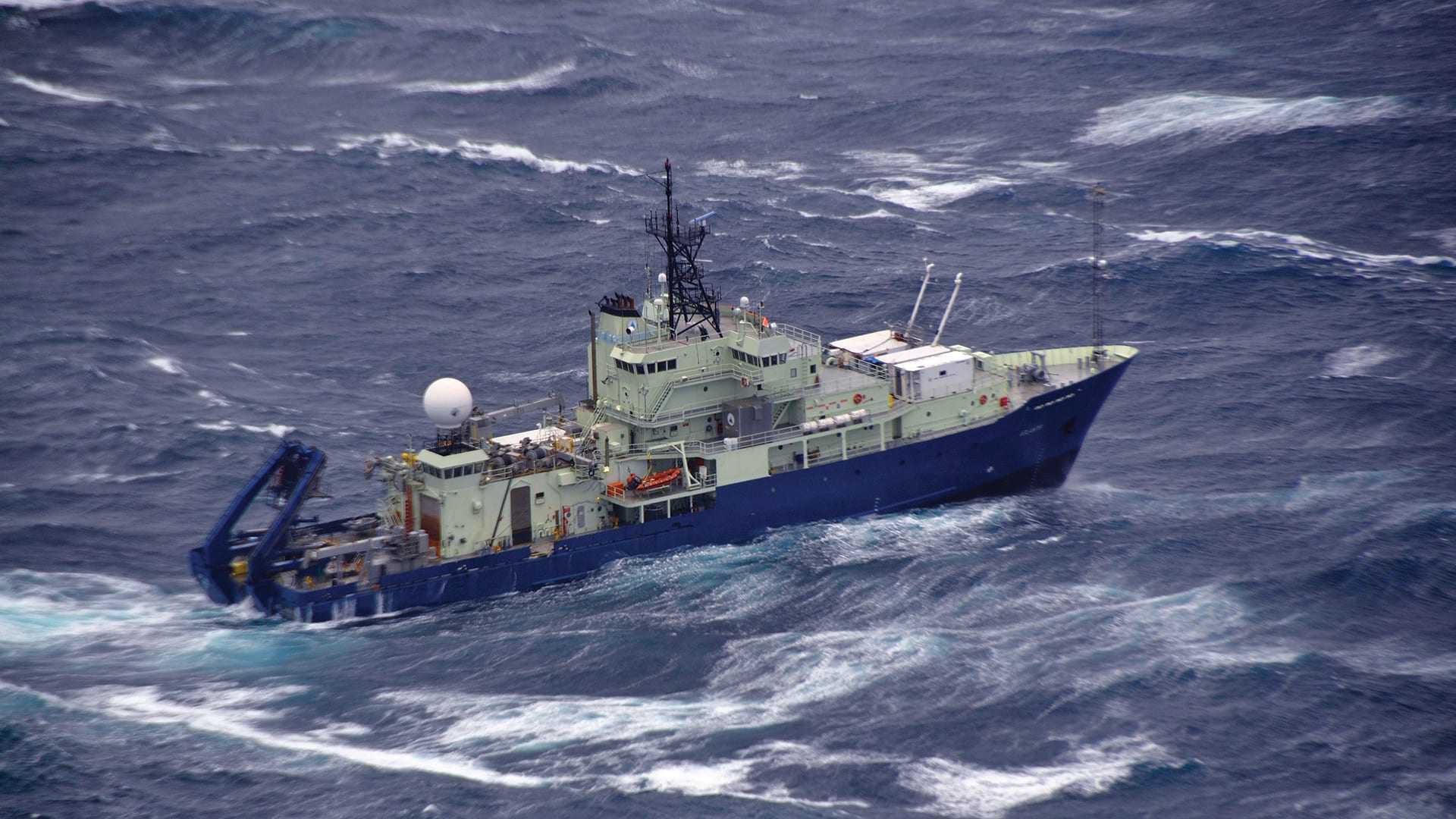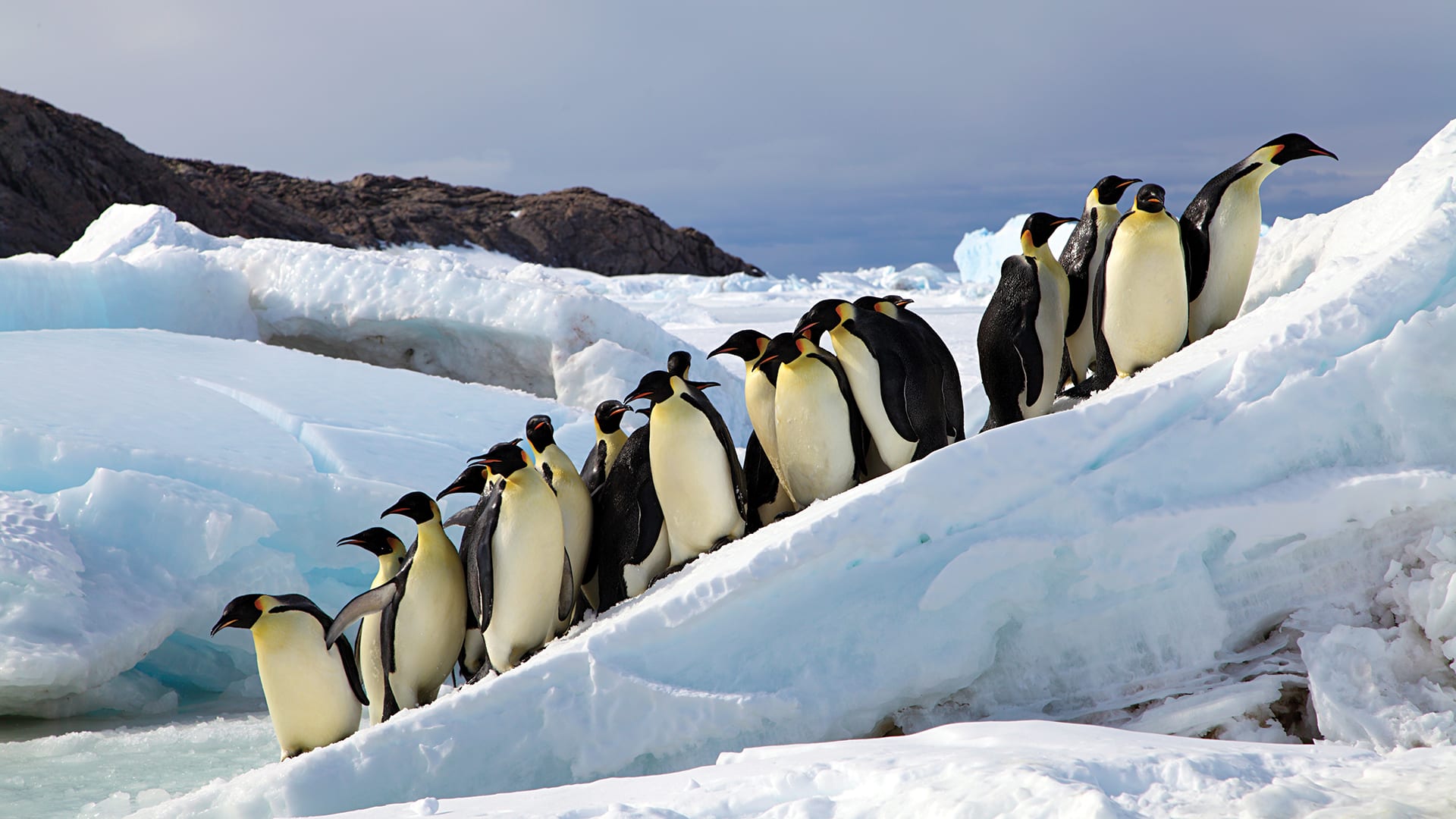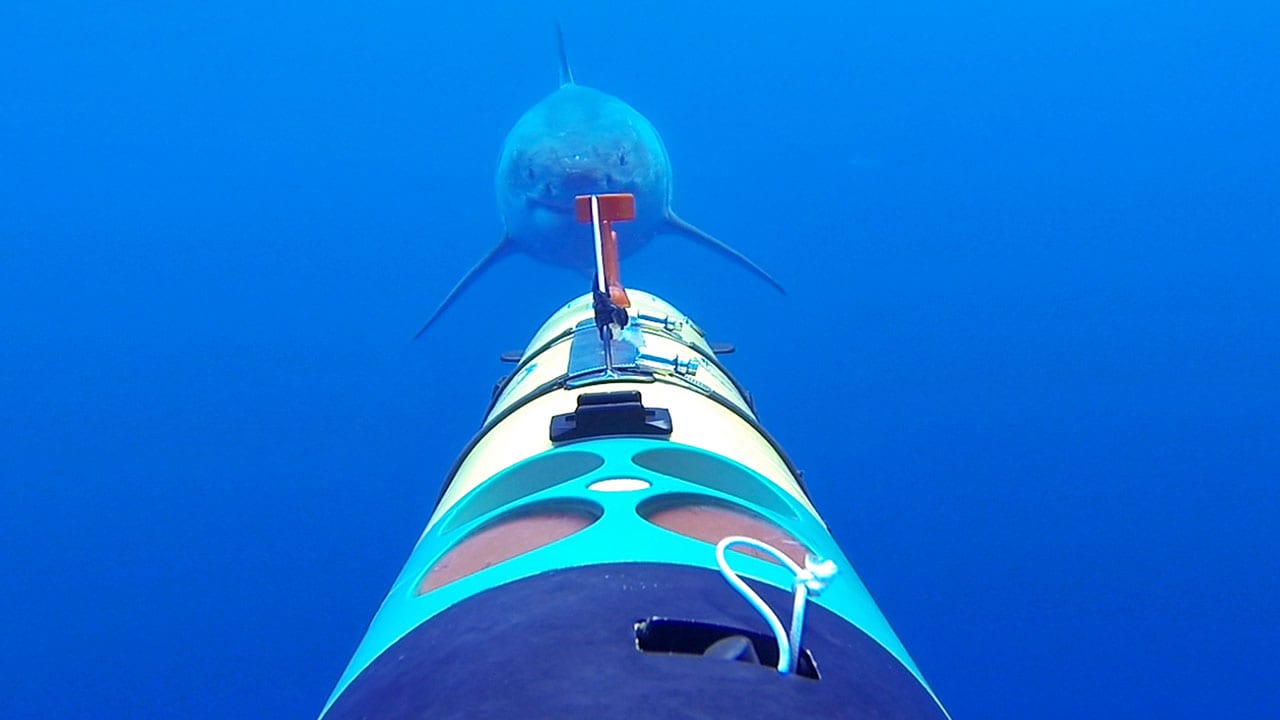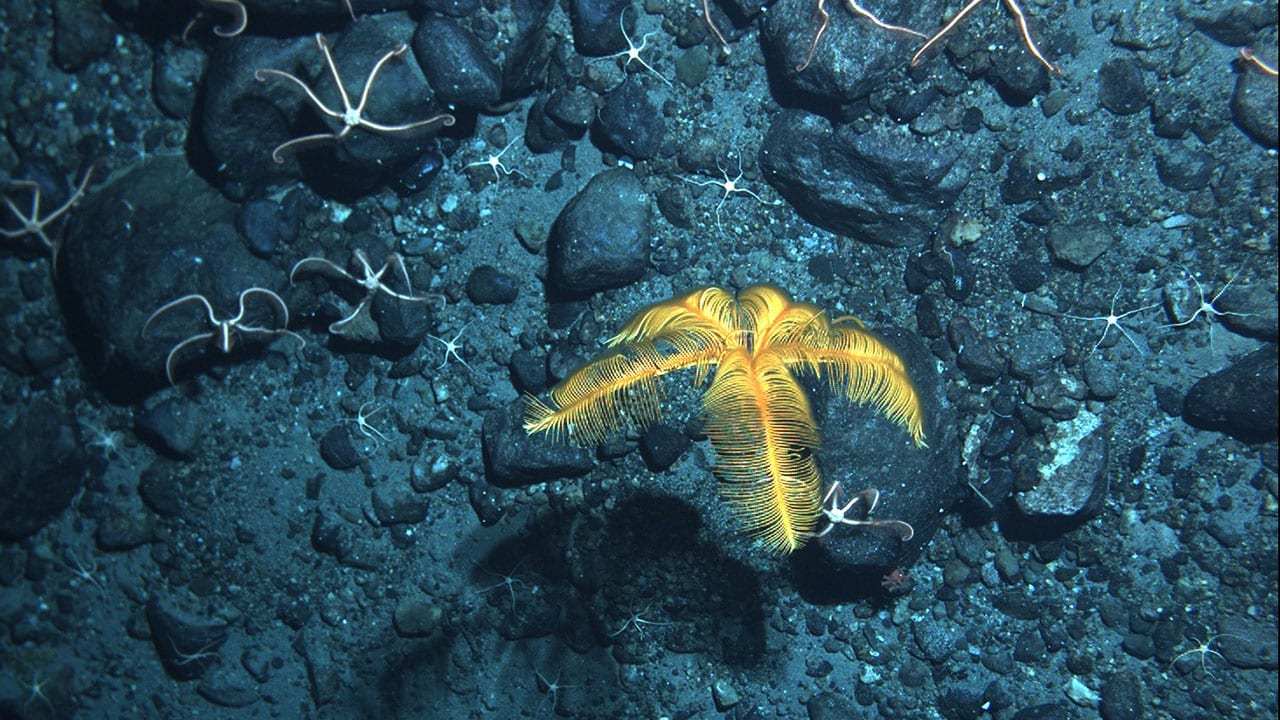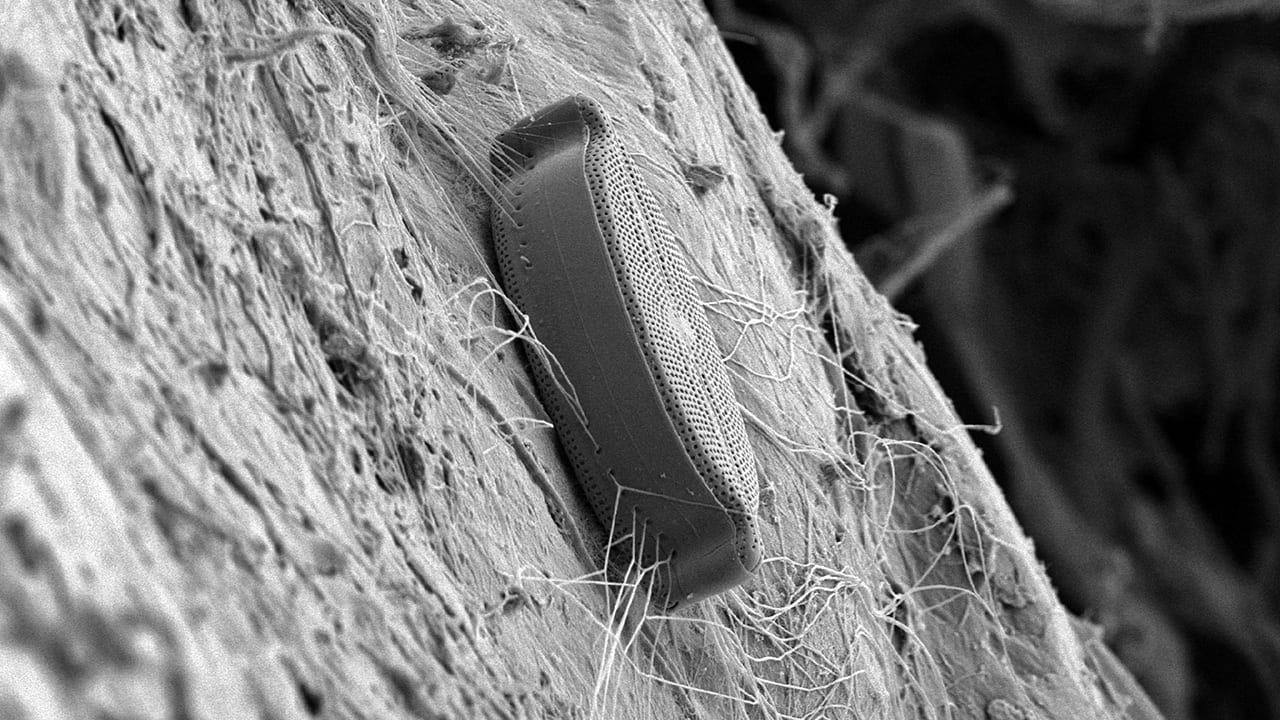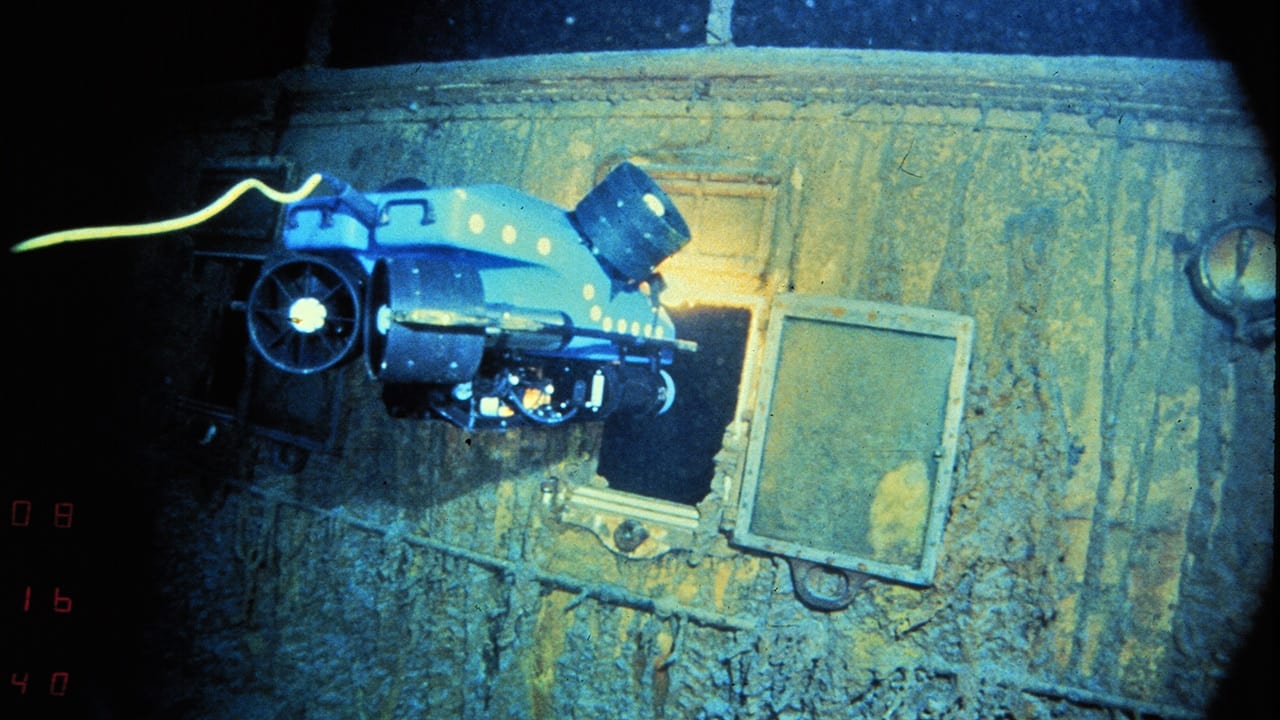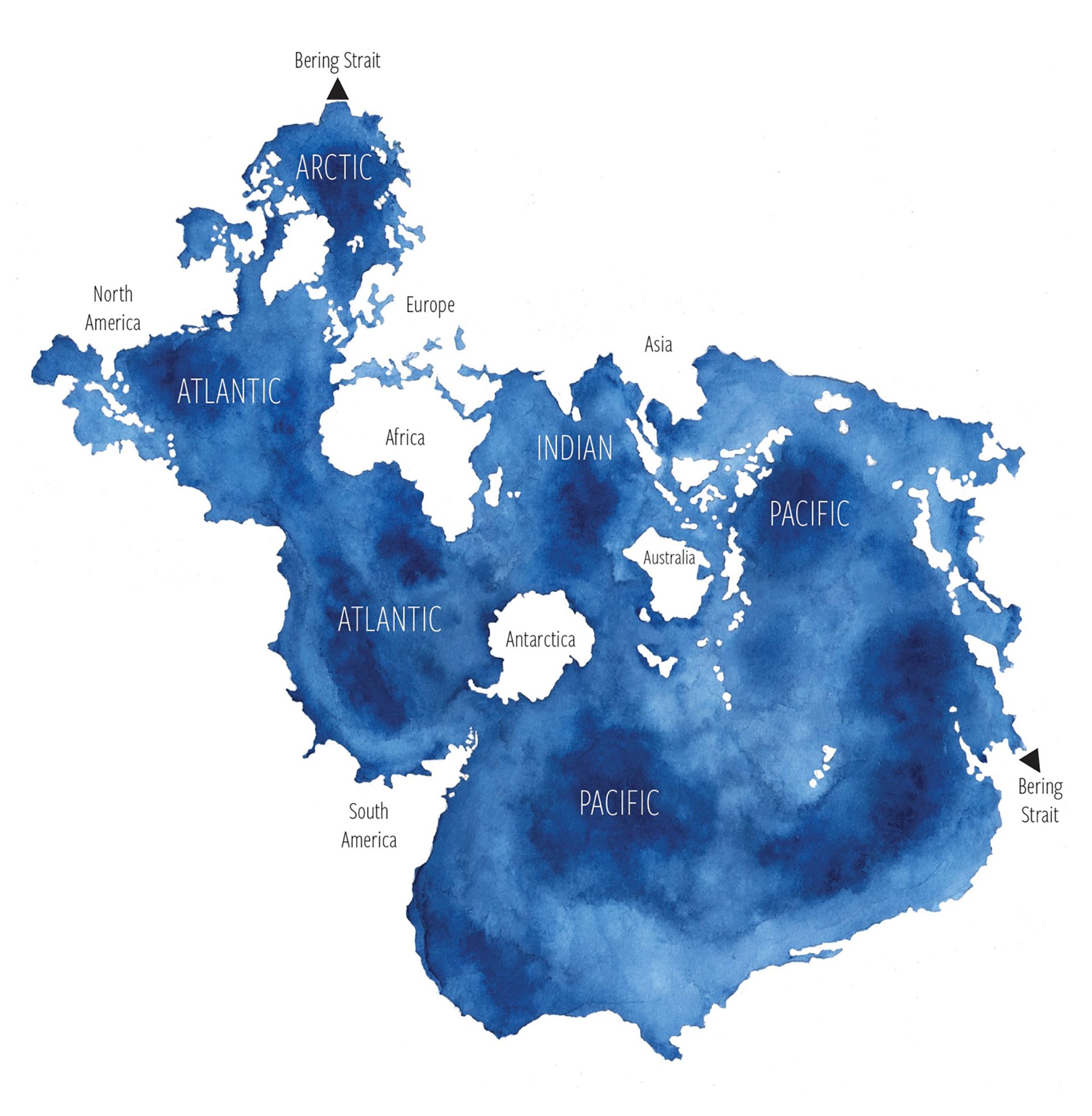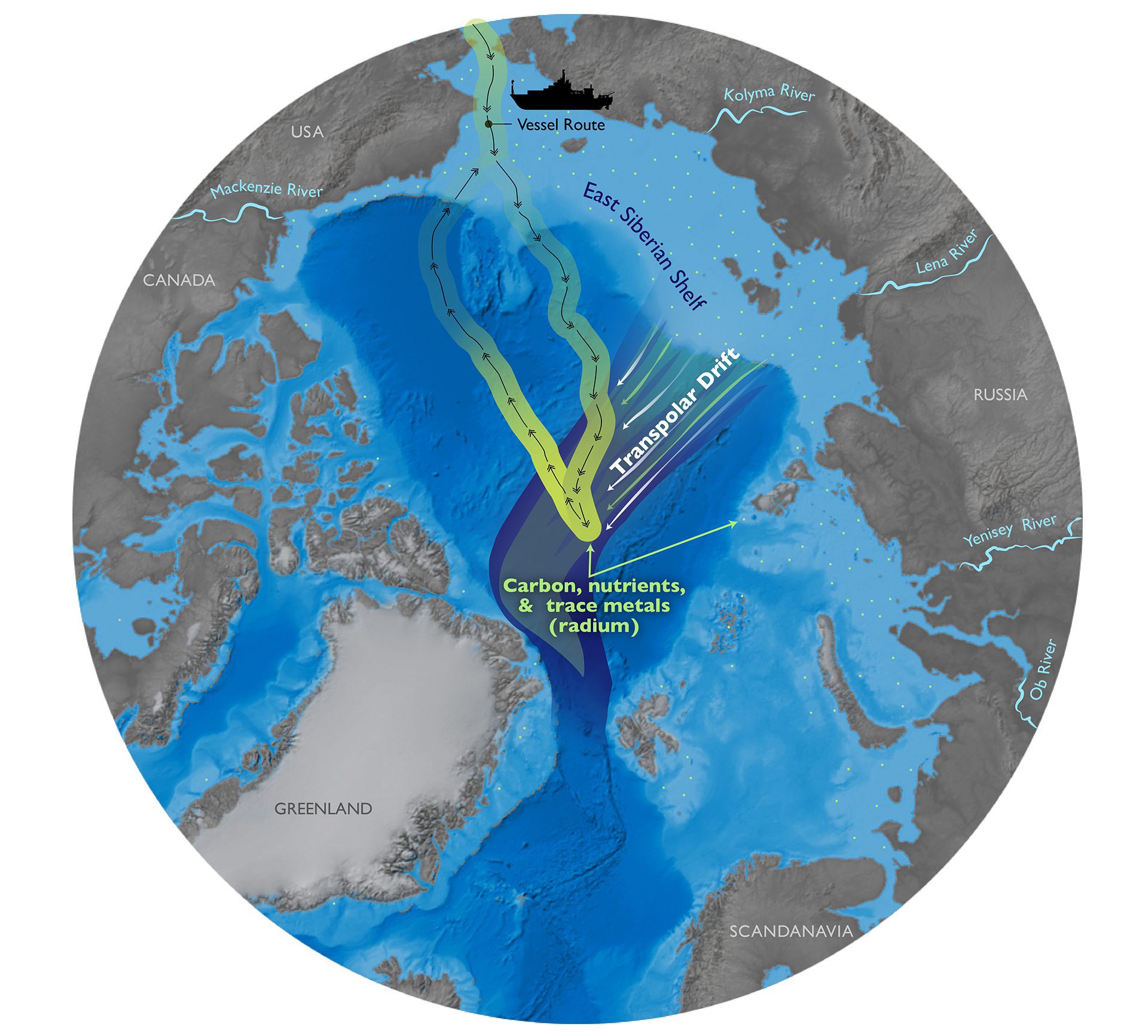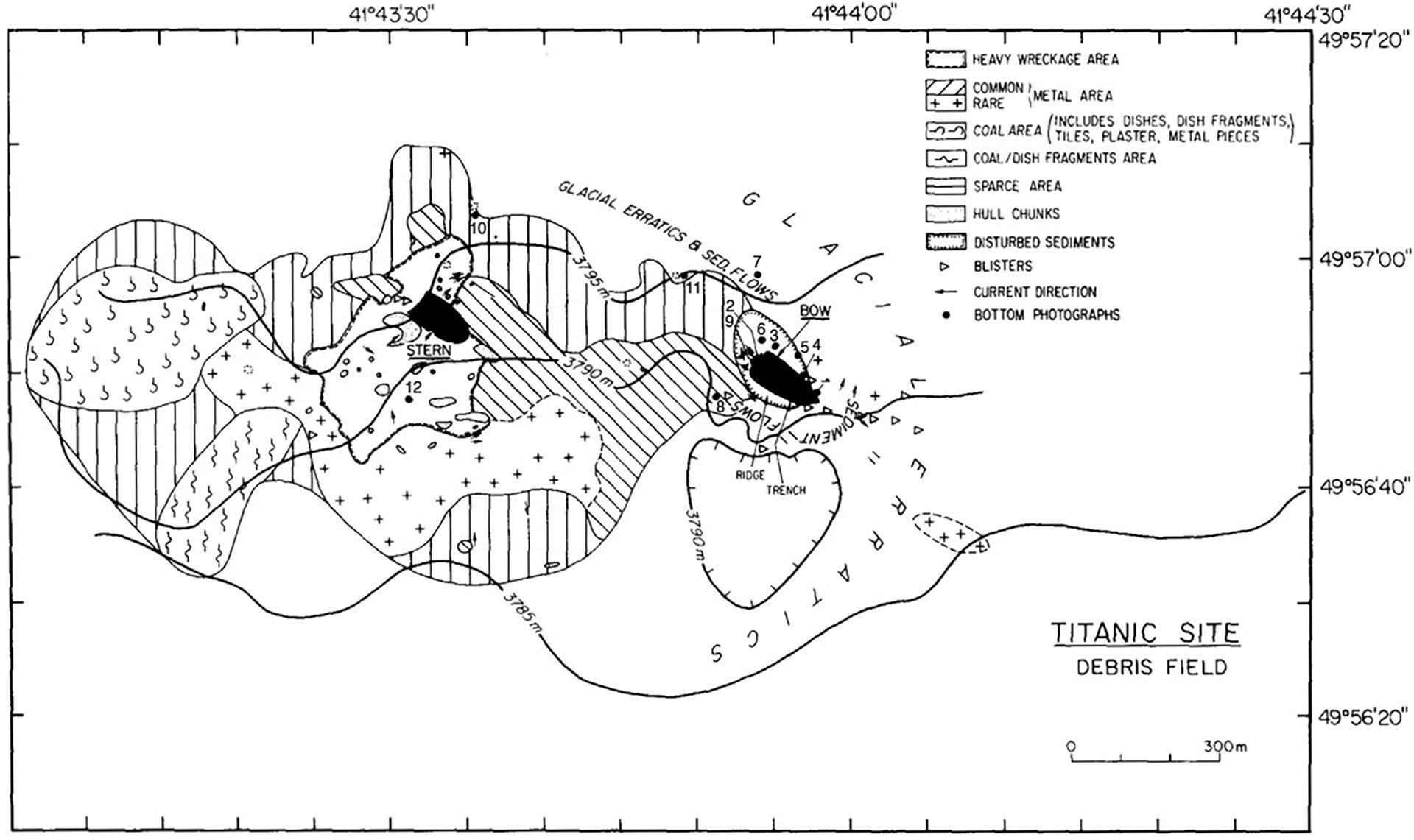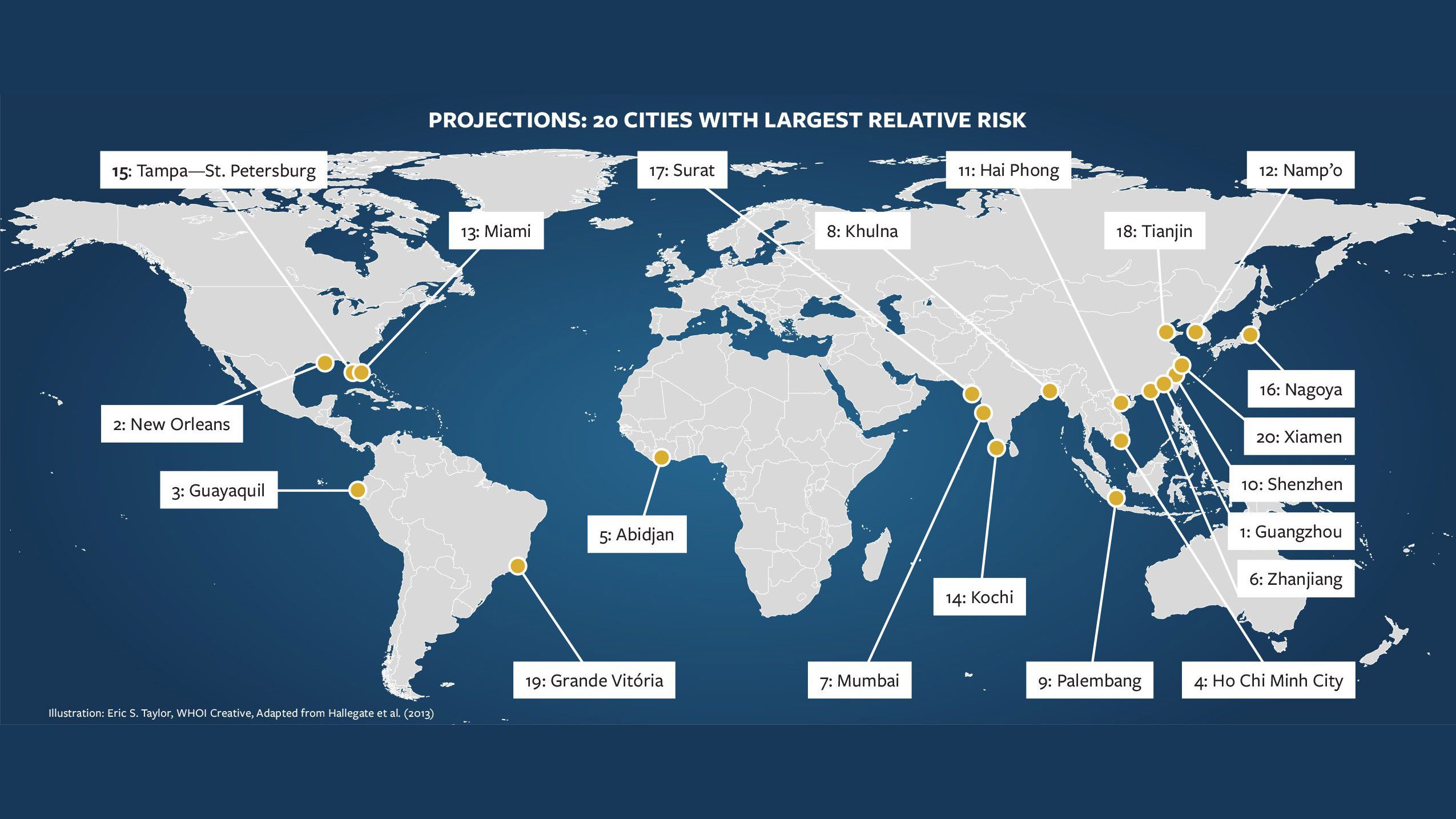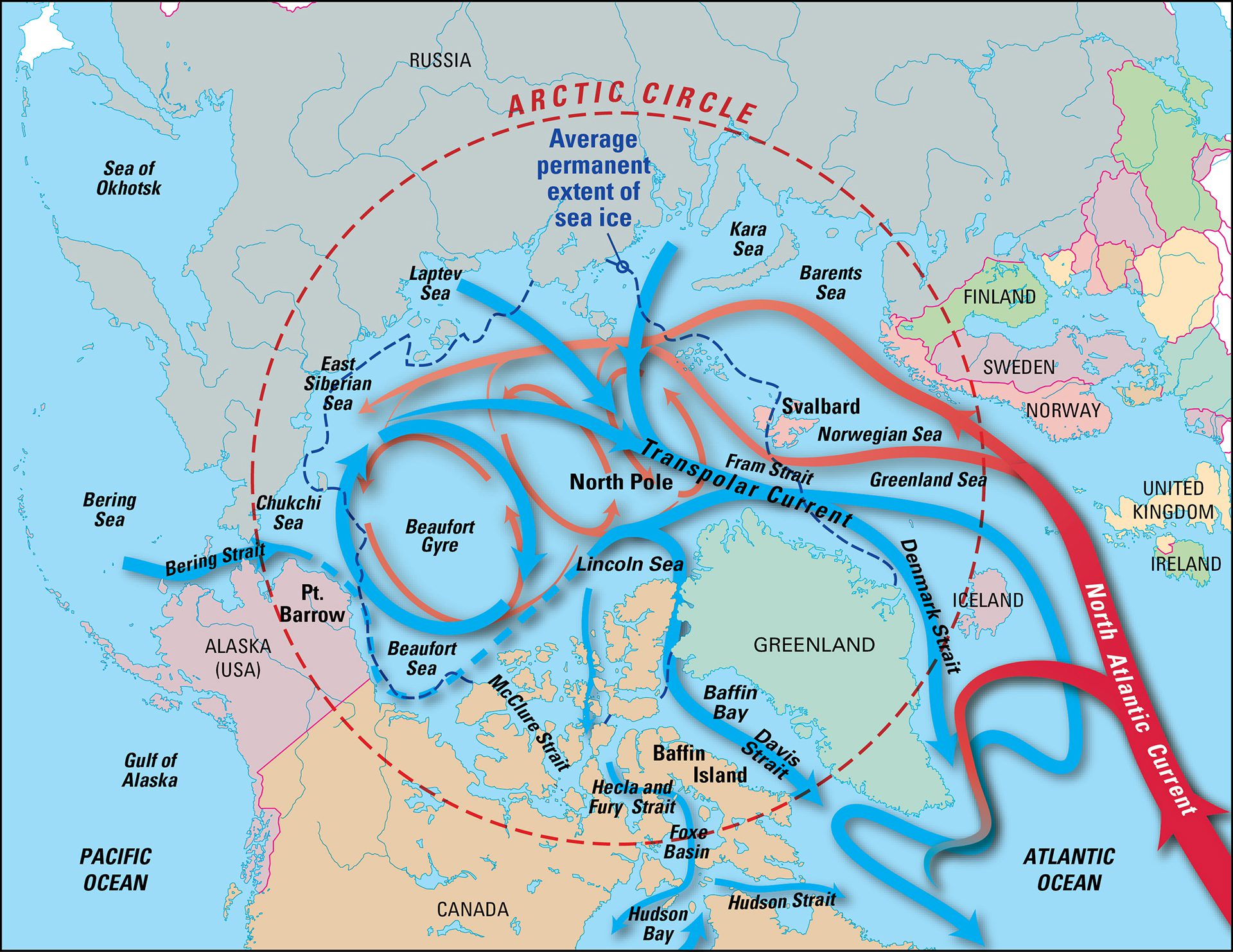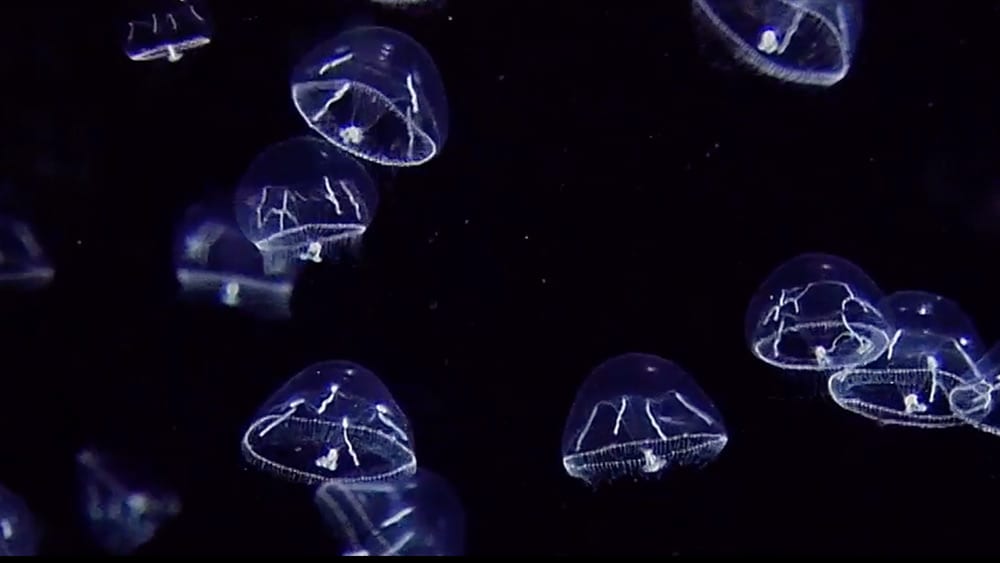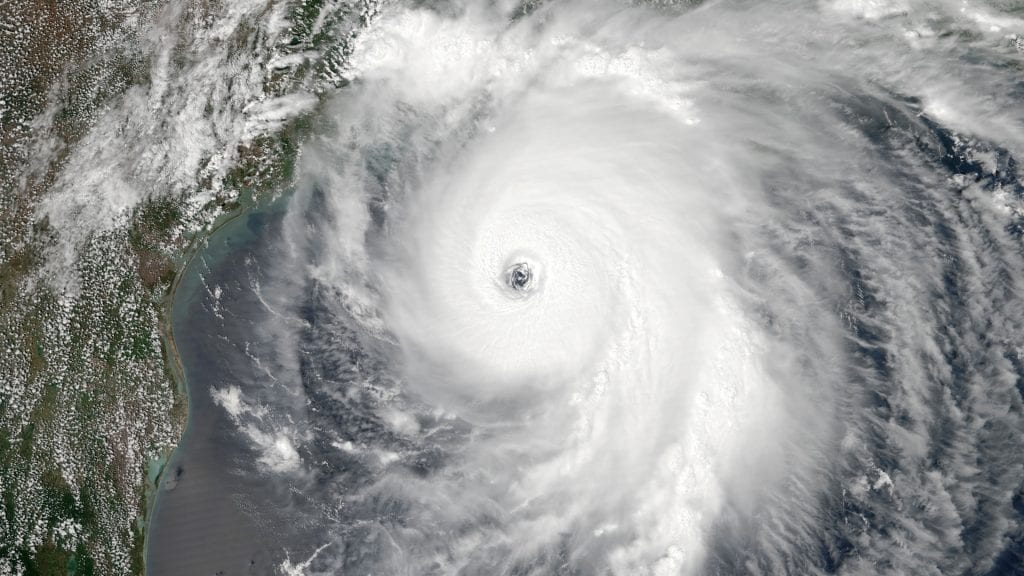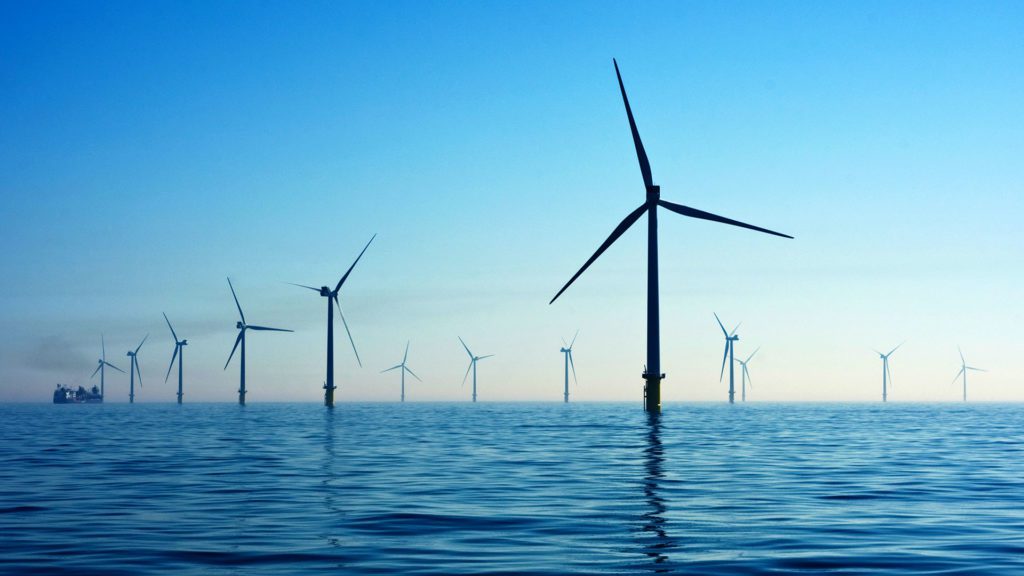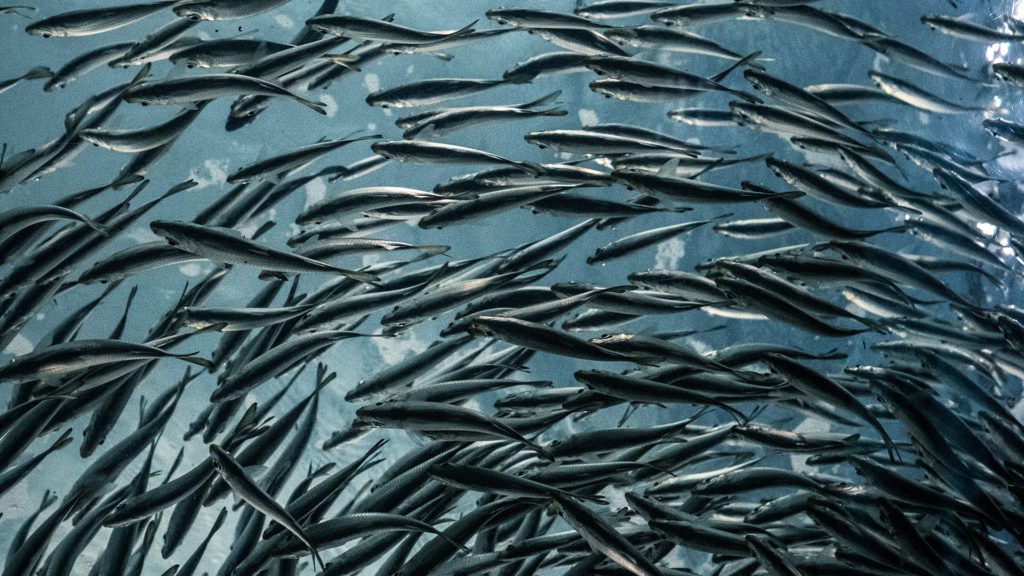The Ocean Learning Hub
The
Ocean Learning Hub
Science-backed content for curious minds. Dive in!
Click on advanced search to customize your results by grade, subject, and educational standards.
Featured Content
How does the ocean impact hurricanes?
Hurricanes unleash powerful winds, rain, and storm surges on land—but they also stir the ocean, disrupting ecosystems and impacting marine life and currents.
How are seashells made?
One of the most striking features of our beaches is…
What are marine microplastics?
Discover what microplastics are and their potential impacts on ocean…
Is the Great Barrier Reef making a comeback?
The world’s largest reef saw record growth after years of…
Ocean Topics
The ocean covers more than two-thirds of Earth's surface, it makes life as we know it possible, and it sustains human society. These topics will help you begin to explore the ocean and its vital importance to Earth and everything that lives on it.
The ocean plays a central—yet underappreciated—role in global climate and regional weather patterns, including droughts, rainstorms, and hurricanes.
Ocean-Based Climate Solutions
Ocean-based, clean energy technologies hold great potential for ocean-based climate solutions, such as blue carbon, biofuels, and carbon dioxide removal…
Read MoreOcean Warming
Increasing ocean heat is closely linked to increases in atmospheric greenhouse gas concentrations, making the ocean an excellent indicator of…
Read MorePaleoclimatology
Understanding how climate naturally varied over thousands and millions of years teaches us how Earth's climate system works and sheds…
Read MoreSea Level Rise
Sea level rise is expected to continue for centuries and may impact human and the natural environment.
Read MoreUnderstanding how the ocean works is foundational to understanding life on this planet and to the discipline of oceanography.
Ocean-Atmosphere Connection
The complex connections of these two systems are responsible for Earth's weather and climate.
Read MoreTwilight Zone
The ocean twilight zone is a layer of water that stretches around the globe. It lies 200 to 1,000 meters…
Read MoreCarbon Cycle
Carbon is the building block of life on Earth and has a powerful impact on the planet’s climate.
Read MoreCoastal Science
Although the oceans cover most of Earth, the tiny sliver of the coastal ocean greatly influences, and is most influenced…
Read MoreWater Cycle
The water cycle describes the continuous movement of water on, above and below the surface of the Earth.
Read MoreFAQs about Ocean Acidification
These questions were widely distributed to the research community with the request to draft concise replies summarizing current knowledge with…
Read MoreThe oceans are critical to human flourishing: they feed and sustain billions of people, and make life as we know it possible.
Earthquakes and Seismic Waves
Earthquakes release energy as seismic waves, revealing Earth's interior and helping locate quake sources to understand tectonic processes and earthquake…
Read MoreMarine Microplastics
Marine microplastics are small fragments of plastic debris that are less than five millimeters long. Some microplastics, known as primary…
Read MoreBeach Closures
Hundreds of beaches nationwide are closed each year due to the presence of potentially harmful bacteria, viruses, and parasites in…
Read MoreHarmful Algae & Red Tides
Tiny plants pose a potent threat to those who live in and eat from the sea.
Read MoreHurricanes
Hurricanes are large rotating tropical storms with winds in excess of 119 kilometers per hour. They usually form in the…
Read MoreEvery drop of ocean water holds living things. Across Earth’s history, the ocean has nurtured nearly every form of life that has ever existed.
Right Whale FAQs
Northern right whales are large baleen whales known for their distinctive callosities and slow-moving nature. Read our FAQ about this…
Read MoreReef Ecosystems
A healthy reef protects coastlines from wave damage, plays a critical role in providing food, boosts the economy, and provides…
Read MoreEmperor Penguins
The emperor penguin is the largest living penguin species standing around 115 centimeters tall. Once they have found a partner,…
Read MoreRight Whales
The North Atlantic right whale (Eubalaena glacialis) is one of the most endangered whales in the world—approximately 340 remain—due to…
Read MoreMarine Microbes
Microbial life can be found throughout the ocean, from rocks and sediments beneath the seafloor, across the vast stretches of…
Read MoreStudying the ocean is as much a technological challenge as it is a scientific one.
Ocean Observatories
Ocean observatories have suites of instruments and sensors with long-term power supplies and permanent communications links that feed data in…
Read MoreThe global ocean provides food, minerals, and other valuable resources.
Offshore Wind
Offshore wind energy generates electricity through wind farms along inshore water areas such as lakes, fjords and sheltered coastal areas,…
Read MoreSeafloor Mining
The ocean contains a complex combination of processes that sometimes result in commercially viable forms of a wide range of…
Read MoreSustainable Ocean
The global ocean provides food, minerals, and other valuable resources for human use.
Read MoreAquaculture
Aquaculture is the farming in fresh and saltwater environments of aquatic animals or plants principally for food. Fish, mollusks, crustaceans,…
Read MoreOcean Topics
The ocean covers more than two-thirds of Earth's surface, it makes life as we know it possible, and it sustains human society. These topics will help you begin to explore the ocean and its vital importance to Earth and everything that lives on it.
The ocean plays a central—yet underappreciated—role in global climate and regional weather patterns, including droughts, rainstorms, and hurricanes.
Understanding how the ocean works is foundational to understanding life on this planet and to the discipline of oceanography.
The oceans are critical to human flourishing: they feed and sustain billions of people, and make life as we know it possible.
Every drop of ocean water holds living things. Across Earth’s history, the ocean has nurtured nearly every form of life that has ever existed.
Studying the ocean is as much a technological challenge as it is a scientific one.
The global ocean provides food, minerals, and other valuable resources.
Explore Media by Type
Explore ocean science through videos, virtual series, infographics, maps, images, and interactive tools—engaging multimedia for learners of all ages.
How bacteria achieve a “quorum”
How bacteria achieve a “quorum” to coordinate collective behavior (Illustration by E. Paul Oberlander and Katherine Joyce, WHOI, © Woods…
Read MoreHow are seashells made?
One of the most striking features of our beaches is seashells. Their whorls, curves, and shiny iridescent insides are the…
Read MoreOcean Encounters: Geology Rocks!
Curious about Earth's inner workings? Meet three geologists with unique careers studying quakes, volcanoes, and the planet beneath our feet.
Read MoreRadioisotopes Tracking Tuna Migration
Bluefin tuna born before the Fukushima disaster did not have elevated levels of cesium-134, but those caught in August 2011…
Read MoreEdible Seaweed
A guide to the seaweeds that might (already) be on your plate.
Read MoreHow does the ocean impact hurricanes?
Hurricanes unleash powerful winds, rain, and storm surges on land—but they also stir the ocean, disrupting ecosystems and impacting marine…
Read MoreTwo subspecies of pilot whales identified
New research reveals that short-finned pilot whales are not one, but two distinct subspecies, changing our understanding of their diversity.
Read MoreThe Atlantic Meridional Overturning Circulation (AMOC)
Illustrated map of the AMOC, part of global thermohaline circulation, showing warm surface flow, deepwater currents, and key sinking and…
Read MoreHow are seashells made?
One of the most striking features of our beaches is seashells. Their whorls, curves, and shiny iridescent insides are the…
Read MoreOcean Encounters: Geology Rocks!
Curious about Earth's inner workings? Meet three geologists with unique careers studying quakes, volcanoes, and the planet beneath our feet.
Read MoreHow does the ocean impact hurricanes?
Hurricanes unleash powerful winds, rain, and storm surges on land—but they also stir the ocean, disrupting ecosystems and impacting marine…
Read MoreOcean Encounters: Small but Mighty
Microscopic marine life plays a huge role in our ocean—fueling food webs, shaping climate, and offering clues to life's origins.
Read MoreOcean Encounters: Volcanoes
Learn about volcanoes on the seafloor, the insights they're revealing, and how they impact our ocean planet.
Read MoreIlluminating the Seafloor
Teamwork between a deep-sea robot and a human-occupied submarine led to the discovery of five new hydrothermal vents on the…
Read MoreInvestigating the world of microbes with ROV Jason
At Axial Seamount, WHOI scientists filmed vibrant life at deep-sea vents—ecosystems powered by chemosynthetic microbes in total darkness.
Read MoreRare look at animals in the ocean twilight zone
The ocean is vast, so scientists use two ocean robots to better spot and study elusive creatures from the deep,…
Read MoreOcean Encounters: Geology Rocks!
Curious about Earth's inner workings? Meet three geologists with unique careers studying quakes, volcanoes, and the planet beneath our feet.
Read MoreOcean Encounters: Small but Mighty
Microscopic marine life plays a huge role in our ocean—fueling food webs, shaping climate, and offering clues to life's origins.
Read MoreOcean Encounters: Volcanoes
Learn about volcanoes on the seafloor, the insights they're revealing, and how they impact our ocean planet.
Read MoreOcean Encounters: Extreme Ocean Machines
Explore the extreme ocean with guest host James Cameron. Learn how new tech is transforming deep-sea exploration and storytelling.
Read MoreOcean Encounters: Sharks!
Discover the world of sharks and their behavior and role in a healthy ocean with experts Greg Skomal and Simon…
Read MoreOcean Encounters: The Science of Shipwrecks
Explorer Dr. Robert Ballard and WHOI scientist Dr. Kirstin Meyer-Kaiser reveal surprising insights that shipwrecks offer about human history and…
Read MoreHow bacteria achieve a “quorum”
How bacteria achieve a “quorum” to coordinate collective behavior (Illustration by E. Paul Oberlander and Katherine Joyce, WHOI, © Woods…
Read MoreRadioisotopes Tracking Tuna Migration
Bluefin tuna born before the Fukushima disaster did not have elevated levels of cesium-134, but those caught in August 2011…
Read MoreEdible Seaweed
A guide to the seaweeds that might (already) be on your plate.
Read MoreTwo subspecies of pilot whales identified
New research reveals that short-finned pilot whales are not one, but two distinct subspecies, changing our understanding of their diversity.
Read MoreScope and benefits of a "Coastal Carbon Observing Network"
WHOI scientists are working with fishing communities toward a coastal carbon observing network made up of fishing vessels with the…
Read MoreHow Earth got its water
Water likely arrived in the inner solar system early on, flung by gravity from proto-Jupiter via meteorites, according to research…
Read MoreOTZ Mixing Pump and Migration Pump
Each night, millions of ocean animals migrate upward to feed, then descend at dawn, actively transporting carbon from surface waters…
Read MoreRight whale detection mooring operation
To quiet noisy recordings in rough seas, WHOI engineers created a two-tiered mooring. A bungee-like top line absorbs motion, keeping…
Read MoreHow bacteria achieve a “quorum”
How bacteria achieve a “quorum” to coordinate collective behavior (Illustration by E. Paul Oberlander and Katherine Joyce, WHOI, © Woods…
Read MoreRadioisotopes Tracking Tuna Migration
Bluefin tuna born before the Fukushima disaster did not have elevated levels of cesium-134, but those caught in August 2011…
Read MoreEdible Seaweed
A guide to the seaweeds that might (already) be on your plate.
Read MoreScope and benefits of a "Coastal Carbon Observing Network"
WHOI scientists are working with fishing communities toward a coastal carbon observing network made up of fishing vessels with the…
Read MoreInuktitut Glossary of Ice
Inuit have created an entire lexicon of words for ice, here are a few examples.
Read MoreInfographic depicting radioactive decay chains
All radioisotopes lose energy by emitting ionizing particles such as neutrons, protons, electrons, or photons. Each change follows a unique…
Read MoreComparison of radioactivity sources in the ocean
The background level of radiation in the ocean varies around the globe. The primary source has been nuclear weapons testing…
Read MorePlate Boundaries
From earthquakes to hydrothermal vents, see how Earth's restless plates shape the planet. Click to explore boundaries, fault zones, and…
Read MoreTwilight Zone Basics
The ocean's twilight zone lies 2001,000 meters deep—cold, dark, and vast. Learn about one of Earth's largest habitats and a…
Read MoreVents Around the World
Explore global hydrothermal vents—from mid-ocean ridges to arc volcanoes—and see how confirmed and inferred vents are worldwide.
Read MoreExploring Ocean Worlds
Ocean worlds may be common in our galaxy. Modeling and exoplanet discoveries suggest many planets could have oceans, some hidden…
Read MoreCarbon Dioxide, Shell Building, and Ocean Acidification
To build shells and skeletons, marine organisms extract calcium ions and carbonate ions from seawater to make shells.
Read MoreABCs of Radioactivity
Atoms are made of protons, neutrons, and electrons. Radioactive elements, called radioisotopes or radionuclides, are unstable.
Read MoreInteractive Tsunami Guide
Learn what causes tsunamis, how warning systems work, and what to do before, during, and after one strikes to stay…
Read MoreA tenacious ship pushes forward
R/V Atlantis rides out stormy seas in the North Atlantic during NASA's Aerosols and Marine Ecosystems Study (NAAMES) cruise to study the…
Read MoreA tipping point
Emperor penguins (Aptenodytes forsteri) are the largest species of penguin and one of the most charismatic animals on Earth. Their…
Read MoreStars and Stripes
A golden feather star raises its arms to feed. Behind, brittle stars are perched across the boulder-field. (Photo courtesy of…
Read MoreHitching a Ride
An image from a high-powered microscope reveals a microbe that has colonized a microplastic fragment collected in the North Atlantic Ocean. By…
Read MoreRobotic Trailblazer
Shortly after a WHOI-French-led expedition found the wreck of Titanic on the seafloor in 1985, the Navy commissioned a return…
Read MoreOne connected global ocean
Watercolored map of the global ocean in the Spilhaus projection with regional labels
Read MoreThe Atlantic Meridional Overturning Circulation (AMOC)
Illustrated map of the AMOC, part of global thermohaline circulation, showing warm surface flow, deepwater currents, and key sinking and…
Read MoreRadium rising signals arctic change
Arctic map showing vessel track and coastal transport sources for increased Radium levels measured offshore indicating changing climate conditions.
Read MoreTitanic debris-field
First map of Titanic shipwreck debris field, provides a detailed layout of the scattered remains, seafloor/ocean characteristics and existing photographs.
Read MoreTransport of microplastics in the North Atlantic
Global maps illustrating how microplastics may travel through the North Atlantic and Arctic, based on global transport simulations.
Read MoreCities and sea level impact
2013 map highlighting 20 cities projected to be at risk due to sea level rise.
Read MoreArctic Ocean currents
Detailed map illustrating Arctic currents and the surrounding sovereign regions in flat projection.
Read MoreExplore Media by Type
Explore ocean science through videos, virtual series, infographics, maps, images, and interactive tools—engaging multimedia for learners of all ages.
How bacteria achieve a “quorum”
How bacteria achieve a “quorum” to coordinate collective behavior (Illustration by E. Paul Oberlander and Katherine Joyce, WHOI, © Woods…
Read MoreHow are seashells made?
One of the most striking features of our beaches is seashells. Their whorls, curves, and shiny iridescent insides are the…
Read MoreOcean Encounters: Geology Rocks!
Curious about Earth's inner workings? Meet three geologists with unique careers studying quakes, volcanoes, and the planet beneath our feet.
Read MoreRadioisotopes Tracking Tuna Migration
Bluefin tuna born before the Fukushima disaster did not have elevated levels of cesium-134, but those caught in August 2011…
Read MoreEdible Seaweed
A guide to the seaweeds that might (already) be on your plate.
Read MoreHow does the ocean impact hurricanes?
Hurricanes unleash powerful winds, rain, and storm surges on land—but they also stir the ocean, disrupting ecosystems and impacting marine…
Read MoreTwo subspecies of pilot whales identified
New research reveals that short-finned pilot whales are not one, but two distinct subspecies, changing our understanding of their diversity.
Read MoreThe Atlantic Meridional Overturning Circulation (AMOC)
Illustrated map of the AMOC, part of global thermohaline circulation, showing warm surface flow, deepwater currents, and key sinking and…
Read MoreHow are seashells made?
One of the most striking features of our beaches is seashells. Their whorls, curves, and shiny iridescent insides are the…
Read MoreOcean Encounters: Geology Rocks!
Curious about Earth's inner workings? Meet three geologists with unique careers studying quakes, volcanoes, and the planet beneath our feet.
Read MoreHow does the ocean impact hurricanes?
Hurricanes unleash powerful winds, rain, and storm surges on land—but they also stir the ocean, disrupting ecosystems and impacting marine…
Read MoreOcean Encounters: Small but Mighty
Microscopic marine life plays a huge role in our ocean—fueling food webs, shaping climate, and offering clues to life's origins.
Read MoreOcean Encounters: Volcanoes
Learn about volcanoes on the seafloor, the insights they're revealing, and how they impact our ocean planet.
Read MoreIlluminating the Seafloor
Teamwork between a deep-sea robot and a human-occupied submarine led to the discovery of five new hydrothermal vents on the…
Read MoreInvestigating the world of microbes with ROV Jason
At Axial Seamount, WHOI scientists filmed vibrant life at deep-sea vents—ecosystems powered by chemosynthetic microbes in total darkness.
Read MoreRare look at animals in the ocean twilight zone
The ocean is vast, so scientists use two ocean robots to better spot and study elusive creatures from the deep,…
Read MoreOcean Encounters: Geology Rocks!
Curious about Earth's inner workings? Meet three geologists with unique careers studying quakes, volcanoes, and the planet beneath our feet.
Read MoreOcean Encounters: Small but Mighty
Microscopic marine life plays a huge role in our ocean—fueling food webs, shaping climate, and offering clues to life's origins.
Read MoreOcean Encounters: Volcanoes
Learn about volcanoes on the seafloor, the insights they're revealing, and how they impact our ocean planet.
Read MoreOcean Encounters: Extreme Ocean Machines
Explore the extreme ocean with guest host James Cameron. Learn how new tech is transforming deep-sea exploration and storytelling.
Read MoreOcean Encounters: Sharks!
Discover the world of sharks and their behavior and role in a healthy ocean with experts Greg Skomal and Simon…
Read MoreOcean Encounters: The Science of Shipwrecks
Explorer Dr. Robert Ballard and WHOI scientist Dr. Kirstin Meyer-Kaiser reveal surprising insights that shipwrecks offer about human history and…
Read MoreHow bacteria achieve a “quorum”
How bacteria achieve a “quorum” to coordinate collective behavior (Illustration by E. Paul Oberlander and Katherine Joyce, WHOI, © Woods…
Read MoreRadioisotopes Tracking Tuna Migration
Bluefin tuna born before the Fukushima disaster did not have elevated levels of cesium-134, but those caught in August 2011…
Read MoreEdible Seaweed
A guide to the seaweeds that might (already) be on your plate.
Read MoreTwo subspecies of pilot whales identified
New research reveals that short-finned pilot whales are not one, but two distinct subspecies, changing our understanding of their diversity.
Read MoreScope and benefits of a "Coastal Carbon Observing Network"
WHOI scientists are working with fishing communities toward a coastal carbon observing network made up of fishing vessels with the…
Read MoreHow Earth got its water
Water likely arrived in the inner solar system early on, flung by gravity from proto-Jupiter via meteorites, according to research…
Read MoreOTZ Mixing Pump and Migration Pump
Each night, millions of ocean animals migrate upward to feed, then descend at dawn, actively transporting carbon from surface waters…
Read MoreRight whale detection mooring operation
To quiet noisy recordings in rough seas, WHOI engineers created a two-tiered mooring. A bungee-like top line absorbs motion, keeping…
Read MoreHow bacteria achieve a “quorum”
How bacteria achieve a “quorum” to coordinate collective behavior (Illustration by E. Paul Oberlander and Katherine Joyce, WHOI, © Woods…
Read MoreRadioisotopes Tracking Tuna Migration
Bluefin tuna born before the Fukushima disaster did not have elevated levels of cesium-134, but those caught in August 2011…
Read MoreEdible Seaweed
A guide to the seaweeds that might (already) be on your plate.
Read MoreScope and benefits of a "Coastal Carbon Observing Network"
WHOI scientists are working with fishing communities toward a coastal carbon observing network made up of fishing vessels with the…
Read MoreInuktitut Glossary of Ice
Inuit have created an entire lexicon of words for ice, here are a few examples.
Read MoreInfographic depicting radioactive decay chains
All radioisotopes lose energy by emitting ionizing particles such as neutrons, protons, electrons, or photons. Each change follows a unique…
Read MoreComparison of radioactivity sources in the ocean
The background level of radiation in the ocean varies around the globe. The primary source has been nuclear weapons testing…
Read MorePlate Boundaries
From earthquakes to hydrothermal vents, see how Earth's restless plates shape the planet. Click to explore boundaries, fault zones, and…
Read MoreTwilight Zone Basics
The ocean's twilight zone lies 2001,000 meters deep—cold, dark, and vast. Learn about one of Earth's largest habitats and a…
Read MoreVents Around the World
Explore global hydrothermal vents—from mid-ocean ridges to arc volcanoes—and see how confirmed and inferred vents are worldwide.
Read MoreExploring Ocean Worlds
Ocean worlds may be common in our galaxy. Modeling and exoplanet discoveries suggest many planets could have oceans, some hidden…
Read MoreCarbon Dioxide, Shell Building, and Ocean Acidification
To build shells and skeletons, marine organisms extract calcium ions and carbonate ions from seawater to make shells.
Read MoreABCs of Radioactivity
Atoms are made of protons, neutrons, and electrons. Radioactive elements, called radioisotopes or radionuclides, are unstable.
Read MoreInteractive Tsunami Guide
Learn what causes tsunamis, how warning systems work, and what to do before, during, and after one strikes to stay…
Read MoreA tenacious ship pushes forward
R/V Atlantis rides out stormy seas in the North Atlantic during NASA's Aerosols and Marine Ecosystems Study (NAAMES) cruise to study the…
Read MoreA tipping point
Emperor penguins (Aptenodytes forsteri) are the largest species of penguin and one of the most charismatic animals on Earth. Their…
Read MoreStars and Stripes
A golden feather star raises its arms to feed. Behind, brittle stars are perched across the boulder-field. (Photo courtesy of…
Read MoreHitching a Ride
An image from a high-powered microscope reveals a microbe that has colonized a microplastic fragment collected in the North Atlantic Ocean. By…
Read MoreRobotic Trailblazer
Shortly after a WHOI-French-led expedition found the wreck of Titanic on the seafloor in 1985, the Navy commissioned a return…
Read MoreOne connected global ocean
Watercolored map of the global ocean in the Spilhaus projection with regional labels
Read MoreThe Atlantic Meridional Overturning Circulation (AMOC)
Illustrated map of the AMOC, part of global thermohaline circulation, showing warm surface flow, deepwater currents, and key sinking and…
Read MoreRadium rising signals arctic change
Arctic map showing vessel track and coastal transport sources for increased Radium levels measured offshore indicating changing climate conditions.
Read MoreTitanic debris-field
First map of Titanic shipwreck debris field, provides a detailed layout of the scattered remains, seafloor/ocean characteristics and existing photographs.
Read MoreTransport of microplastics in the North Atlantic
Global maps illustrating how microplastics may travel through the North Atlantic and Arctic, based on global transport simulations.
Read MoreCities and sea level impact
2013 map highlighting 20 cities projected to be at risk due to sea level rise.
Read MoreArctic Ocean currents
Detailed map illustrating Arctic currents and the surrounding sovereign regions in flat projection.
Read MoreOcean Facts
Dive in and find answers to your deepest ocean questions. Why is the ocean blue? What causes ocean waves? How do I become and oceanographer? Get the facts and increase your ocean knowledge.
-
Did You Know | Ocean Life
How does bioluminescence work?
Deep in the ocean there’s very little sunlight. But if…
-
Did You Know | How the Ocean Works
How are seashells made?
One of the most striking features of our beaches is…
-
Did You Know | Hurricanes
What happens in the ocean as a hurricane passes over?
Hurricanes are powerful storms that cause massive damage on land….
-
Ocean Fact Checker | Ocean Life
Are offshore wind farms harming whales?
A collection of seemingly grass-roots organizations claim that offshore wind…
-
Did You Know | Ocean LifeHow does bioluminescence work?
-
Did You Know | How the Ocean WorksHow are seashells made?
-
Did You Know | HurricanesWhat happens in the ocean as a hurricane passes over?
-
Ocean Fact Checker | Marine MammalsAre offshore wind farms harming whales?
-
Did You Know | FisheriesHow does ocean warming affect fisheries?
